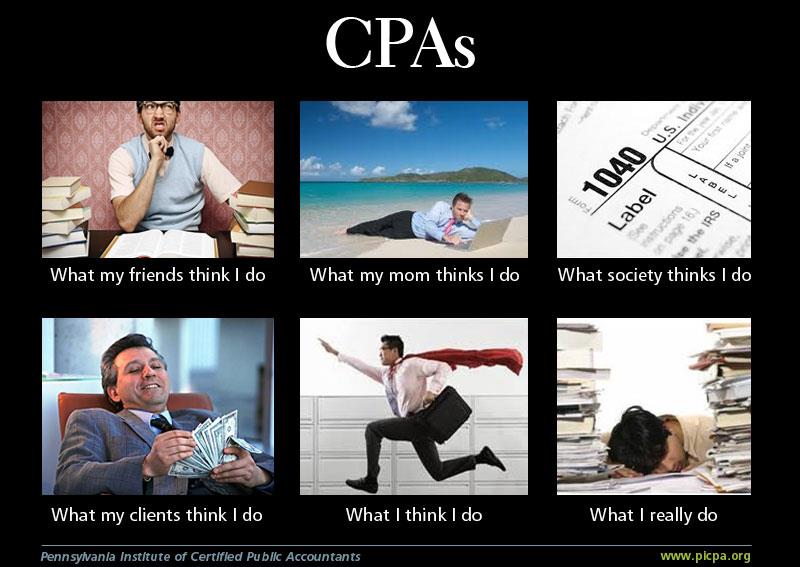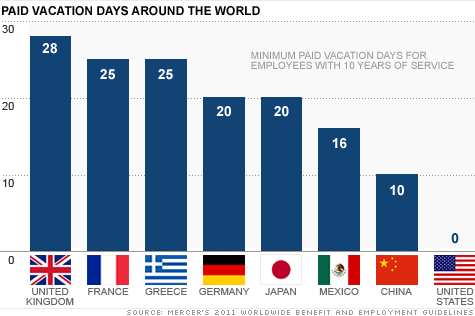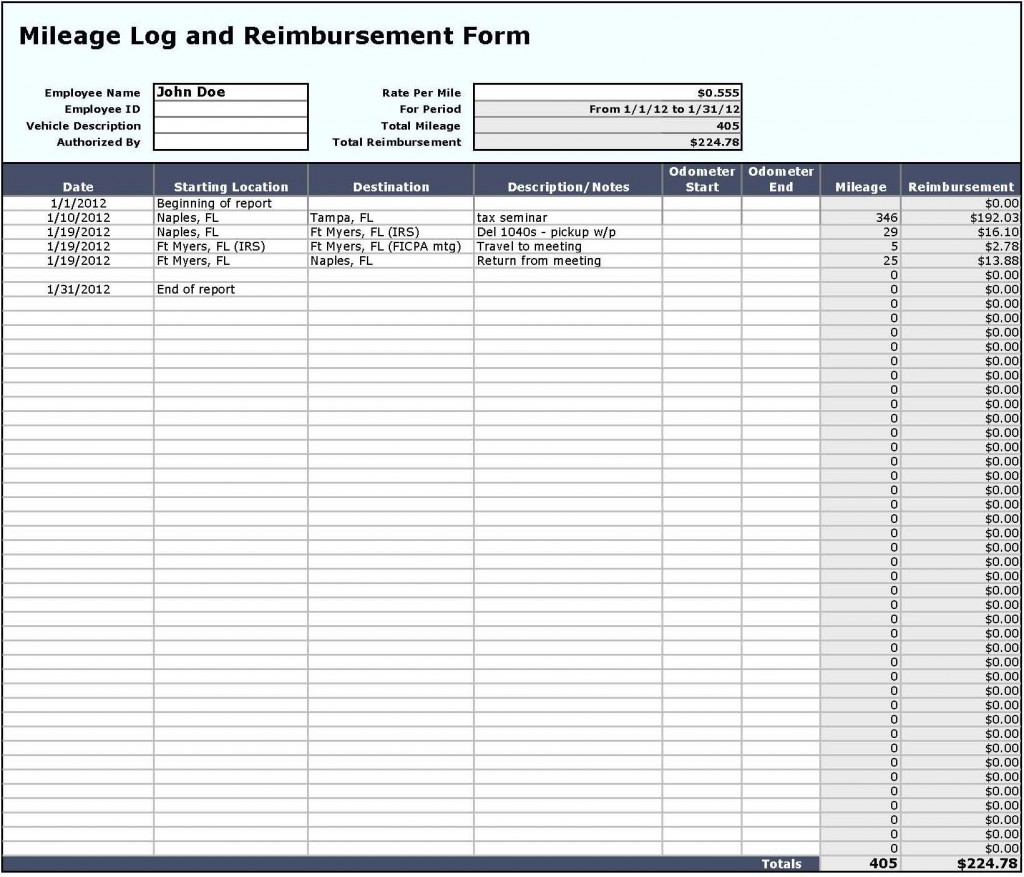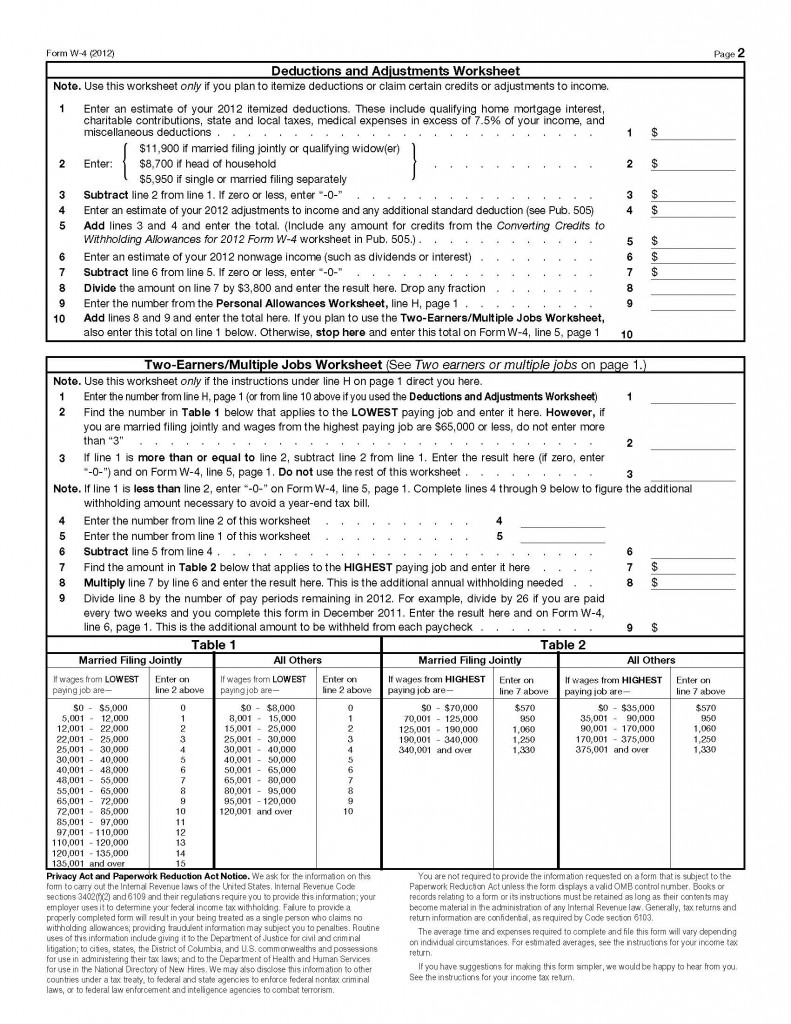McDonald & Osborne, P.A.
Blog Archive 
M&O: Information on the Disaster Tax Relief Act
On September 29, President Trump signed the “Disaster Tax Relief and Airport and Airway Extension Act of 2017.” The Act provides temporary tax relief to victims of Hurricanes Harvey, Irma, and Maria and includes, among other things, the following:
Loosened restrictions for claiming personal casualty losses –
- The act eliminates the requirement that a personal casualty loss must exceed 10% of adjusted gross income to qualify for a deduction.
- The casualty loss deduction is also now available to taxpayers who do not itemize deductions.
- Casualty losses can be deducted on either the original return for the year the loss was incurred (2017) or on an amended return for 2016.
Tax favored withdrawals from retirement plans –
- The act eases a number of rules to allow victims to make “qualified hurricane distributions” from their retirement plans of up to $100,000.
- The resulting distributions are not subject to 10% early withdrawal penalty.
- Income inclusion resulting from qualified hurricane distributions from retirement plans may be spread out over a 3 year period.
Suspension of limitations on charitable contributions –
- The act temporarily suspends the majority of limitations on charitable contributions for hurricane relief made to qualifying organizations beginning on August 23, 2017 and ending on December 31, 2017.
- Contributions must be substantiated, with a contemporaneous written acknowledge that the contribution was or is to be used for relief efforts.
New employee retention tax credit –
- The act creates a new “employee retention credit” equal to 40% of up to $6,000 of qualified wages with respect to each eligible employee for the tax year.
- The credit applies to employers that conducted an active business in a disaster zone affected by Hurricane Irma that was rendered inoperable as a result of damage sustained by the hurricane as of September 4, 2017 through January 1, 2018.
When reviewing your personal casualty losses, please keep in mind that a deduction for casualty losses is only available for physical damage or loss to your property. To substantiate your loss, original receipts, repair costs and appraisals can establish pre and post loss values. To the extent you are insured, you must reduce your loss by the reimbursement. Be sure to report your losses to your insurance company even if the deductible is higher than the loss you sustained. If you fail to file an insurance claim, the IRS may reduce your loss by the insurance reimbursement you could have received.
The act also provides for postponed filing and payment deadlines and penalty relief. The IRS has postponed deadlines for making quarterly estimated tax payments and for filing tax returns that have previously been granted an extension to file to January 31, 2018.
If you think you may qualify under the provisions of this new law and have questions, please feel free to contact our office. We will be happy to assist you.
M&O: Post-Hurricane Irma Update
As of September 18, 2017, power has been fully restored to the McDonald & Osborne, PA office. We are still in the midst of cleanup in our complex, so if you stop by, please be aware of debris in and around our parking lot. We hope you and your families are safe and beginning to put the pieces back together after this catastrophic storm.
We have some updates from the Internal Revenue Service and would like to share those with you, as many of you will have questions and concerns.
The Internal Revenue Service has granted extensions until January 31, 2018, for any tax return, extended tax return, or tax payment that was due on or after September 4, 2017.
What this could mean for you:
-
Individual taxpayers on valid extension through October 16, 2017, now have until January 31, 2018, to file their tax returns (Form 1040).
-
Calendar year partnerships, LLC’s and corporations on valid extensions through September 15, 2017, now have until January 31, 2018, to file their tax returns (Forms 1065, 1120 and 1120S).
-
Calendar year estates and trusts on valid extensions through September 30, 2017, also have until January 31, 2018, to file their tax returns (Form 1041).
Additionally, the quarterly individual and trust/estate estimated 2017 income tax payments due September 15, 2017, and January 15, 2018, do not have to be paid until January 31, 2018. Similarly, any corporate or foreign partner withholding estimated 2017 income tax payments due on or after September 4, 2017, can be postponed without penalty or interest until January 31, 2018.
Should you have any questions or concerns, please feel free to contact our office at 239-254-8161 or firm@mo-cpa.com.
PROPER EDUCATION CAN DRIVE RETIREMENT PLAN PARTICIPATION
Employers who offer retirement savings plans are already helping their workforces. But not all employees take advantage of these plans. And many who do still don’t contribute enough to retire comfortably. As a business owner, you can help your employees even more — and drive plan participation — by providing proper education on retirement planning. Here are five ways to go: 1. Teach them about the general concepts of investing. Many employees are unfamiliar with basic economic and investing concepts. Offer instruction on concepts such as: Compounding growth, Tax implications of different types of savings plans, and How much they need to save to reach a certain sum at retirement. Providing such information can help your employees make informed decisions about their options. 2. Explain how the plan functions. For instance, do they need to enroll in the plan, or are they automatically enrolled? Once enrolled, how do they decide how much to contribute and how to allocate their money among different investments? 3. Provide information in various formats. Webinars or other online communication methods will resonate with some employees, while others will prefer printed material. By offering a mix of options, you’ll likely be effective in reaching different segments of your workforce. 4. Arrange face-to-face sessions. Even if your business offers printed and electronic materials, in-person sessions can go a long way in helping employees understand the plan. These sessions also provide an opportunity to reinforce the value of a retirement plan as part of the employee’s overall compensation package. If one-on-one sessions are impractical, consider small groups. 5. Offer information regularly. Providing consistent education is a great way to remind employees of the value of their retirement savings plans. Remember, employees aren’t the only ones who benefit from proper retirement savings education. As participation increases, plan fees may diminish. And the more non–highly compensated employees sock away in a plan, the more its highly compensated employees can contribute. Please contact our firm for more ways to maximize the strategic value of your retirement plan. © 2016
There's Still Time to Benefit on Your 2016 Tax Bill by Buying Business Assets

In order to take advantage of two important depreciation tax breaks for business assets, you must place the assets in service by the end of the tax year. So you still have time to act for 2016. Section 179 deduction The Sec. 179 deduction is valuable because it allows businesses to deduct as depreciation up to 100% of the cost of qualifying assets in year 1 instead of depreciating the cost over a number of years. Sec. 179 can be used for fixed assets, such as equipment, software and leasehold improvements. Beginning in 2016, air conditioning and heating units were added to the list. The maximum Sec. 179 deduction for 2016 is $500,000. The deduction begins to phase out dollar-for-dollar for 2016 when total asset acquisitions for the tax year exceed $2,010,000. Real property improvements used to be ineligible. However, an exception that began in 2010 was made permanent for tax years beginning in 2016. Under the exception, you can claim a Sec. 179 deduction of up to $500,000 for certain qualified real property improvement costs. Note: You can use Sec. 179 to buy an eligible heavy SUV for business use, but the rules are different from buying other assets. Heavy SUVs are subject to a $25,000 deduction limitation. First-year bonus depreciation For qualified new assets (including software) that your business places in service in 2016, you can claim 50% first-year bonus depreciation. (Used assets don’t qualify.) This break is available when buying computer systems, software, machinery, equipment, and office furniture. Additionally, 50% bonus depreciation can be claimed for qualified improvement property, which means any eligible improvement to the interior of a nonresidential building if the improvement is made after the date the building was first placed in service. However, certain improvements aren’t eligible, such as enlarging a building and installing an elevator or escalator. Contemplate what your business needs now If you’ve been thinking about buying business assets, consider doing it before year end. This article explains only some of the rules involved with the Sec. 179 and bonus depreciation tax breaks. Contact us for ideas on how you can maximize your depreciation deductions.
S Corporation Health Insurance Reminder
 As we get closer to year end, we want to take this opportunity to remind our S Corporation shareholders of some important items to keep in mind.
As we get closer to year end, we want to take this opportunity to remind our S Corporation shareholders of some important items to keep in mind.
S Corporation shareholders who own a 2% or greater interest in their corporation must include the following (company-paid) fringe benefits on their Form W-2 as additional wages:
1. Health Insurance - when included on Form W-2, the health insurance is deductible as wages by the corporation. The shareholder receives a self-employed health insurance deduction on page 1 of their personal return equal to the amount included as wages. Failure to include the health insurance on Form W-2 results in NO deduction for the Corporation.
2. Contributions to an HSA - like health insurance, HSA contributions are included on Form W-2 and deductible as wages by the corporation and the individual receives a deduction on page 1 of their personal return.
3. It is important to remember that a 2% or greater shareholder of an S Corporation is NOT eligible for cafeteria plan benefits.
If you are currently using a payroll service, please provide them with your health insurance and HSA information as soon as possible. Please contact us if you have any questions.
3 Ways to get Started on Next Year’s Budget
As the year winds down, business owners have a lot to think about. One item that you should keep top of mind is next year’s budget. A well-conceived budget can go a long way toward keeping expenses in line and cash flow strong. The question is: Where to begin? Well, to answer this question, we don’t have just one suggestion — we have three:
1. Investigate your income statement. A good place to start on next year’s budget is with the numbers you put on paper for last year, as well as your year-to-date results. In your income statement, you’ll see information on sales, margins, operating expenses, and profits or losses.
One specific factor to consider is volume. If sales have slipped noticeably in the preceding year, your profits may be markedly down and regaining that volume should likely play a starring role in your 2017 budget.
2. Check your cash flow statement. Look at where cash is coming from in terms of daily operations, as well as external financing and investment sources. The statement will also tell you where cash is going, as you finance business activities and investments.
Even profitable companies can struggle if their cash flow is weak. Where do they go wrong? Under- or unbudgeted asset purchases can have a major negative budget impact. Another culprit is one or two departments regularly going over budget.
3. Peruse your balance sheet. Here you’ll find your company’s assets, liabilities and owner’s equity within the given period. Your balance sheet should give you a good general impression of where your company stands financially.
Take a close look at how your liabilities compare with assets. If your debts are mounting, a good objective for 2017 might be cutting discretionary expenses (such as bonuses or travel costs) or developing a sound refinancing plan.
That’s right — to get started on next year’s budget, simply pull out your most recent set of financial statements, roll up your sleeves and get to work. But you don’t have to do it alone. Our firm can help you understand where your business stands as of today and what next year’s budget should look like.
© 2016
Excerpts From Our Monthly ClientLine Newsletter

What is the Largest Federal Tax Break for Individuals?
According to a Congressional Research Service report , the biggest break is the home mortgage deduction, which is expected to cost the government (some might say, save the taxpayer) an estimated $74.8 billion in fiscal year 2015.
An estimated $51 Billion in income taxes was paid on Social Security benefits in 2014, according to a Congressional Budget Office report . About half of the people who received Social Security benefits in 2014 owed some income tax on them. And, because the income thresholds above which Social Security benefits are taxable are not indexed for inflation, the shares of benefits subject to the tax are expected to continue to grow.
What keeps Americans up at night?
Worries about their financial situation. A recent survey by the American Psychological Association found money (64%) was the number one stressor for Americans, followed by work (60%). Money has been the top source of stress since 2008.
Stephen Osborne, CPA
Certified Public Accountant
sosborne@mo-cpa.com
1099 vs W-2: Incorrect Reporting Leads to New, Stiffer Penalties

In late June, 2015 Congress dramatically increased the penalties for late filed, mistaken and unfiled Forms W-2 and 1099’s. In most cases the penalty is now $250 for each problem with maximum penalties of up to $1.5 million! If you combine this penalty per form with payroll tax penalties exceeding 100% for misclassified employees you can clearly see that Congress is serious about addressing misclassified employees, and the IRS is stepping up its enforcement actions. We are seeing many employers incorrectly classifying employees as independent contractors, and as a result of this dramatic penalty increase we wanted to remind you of the rules, and also provide a potential solution to past problems. We also strongly encourage you to take the advice of tax professionals on this issue rather than the advice of business associates and friends-a very common additional problem.
The IRS uses a 3-factor system to determine if an individual is an employee or an independent contractor: behavioral control, financial control, and a relationship test. If the employer misclassifies an individual as an independent contractor when they are actually a W-2 employee, all of the previously mentioned penalties may apply for both the current and previous years.
The behavioral test focuses on whether the company controls or has the right to control what the worker does and how to do the job, such as when to come to and leave work, how to do the job, break periods and more. If so, the worker is an employee. This includes instructions about competing, performing the work, evaluation criteria and training.
The financial test looks at who controls the economics of the worker’s job. Factors favoring employee status include payment on a regular timely basis (such as weekly), eligibility for reimbursement of travel costs and payment based on hours worked. Providing your own tools needed for the job is indicative of independent contractor status, as is being able to work for more than one firm.
The type-of-relationship test looks at evidence of an employer-employee situation including giving paid time off, fringe and retirement benefits, as well as hiring the worker to render services indefinitely rather than for a specific project. A written contract stating that the worker will be treated as an independent contractor is not the key factor!
Because the penalties are so severe, we strongly recommend that you examine your relationship with any individual receiving a 1099. If they have been incorrectly classified you will have a major financial problem when the IRS comes calling. Fortunately there is a program that can solve the problem for the past and the future, known as the Voluntary Classification Settlement Program or VCSP. We are able to complete the forms necessary to utilize this special program.
Under this program the employer identifies those people that have been mistakenly classified as independent contractors in the past, promises to treat them as W-2 employees in the future, and pays a small 10% penalty on the employment taxes that should have been paid in the prior year. This program then provides protection and peace of mind for the employer for the future, but it needs to be submitted before the IRS letter comes. We can complete the forms for you and urge you to consider the potential problem and solutions.
Stephen Osborne, CPA
Certified Public Accountant
sosborne@mo-cpa.com
Review Your 2015 Gifting Plans

It’s hard to believe that August is already upon us. As always, we encourage our clients to review their tax and financial plans throughout the year to ensure they are taking advantage of as many opportunities as possible and remain on track to reach their financial goals. While there is still plenty of time to act, make sure you have reviewed your annual gift giving plans.
As a reminder, in 2015 the annual gift tax exclusion is $14,000, meaning you can give up to $14,000 to any individual without gift tax consequences. If you are married, your spouse can also give $14,000 to the donee, doubling the tax-free amount to $28,000 per person. Any unused annual exclusions cannot be carried forward to future years and are lost forever. Excluded annual gifts are removed from your estate along with any future appreciation.
Also keep in mind that any payments made directly to an educational institution on behalf of another don’t count against the $14,000 gift tax exclusion. The same can be said of direct payments made for another’s medical expenses. If the beneficiary of the payment is not a dependent, you will not receive a medical expense deduction when you file your tax return, however the payments will reduce your taxable estate without reducing your annual exclusion. Contributions made to 529 Plans qualify for the annual gift tax exclusion, however a special election may be made which would allow you to contribute up to $70,000 per child this year gift tax free. If you do so, your $14,000 exclusion will have be deemed to have been already reached for that child for the next 5 years (2015-2019).
Donations to charities can be especially beneficial when you gift appreciated assets such as stocks and mutual funds. If your have owned the asset for more than one year, you will typically receive a deduction for the full value of the asset and escape any capital gains tax that would otherwise be due if the asset was sold instead of gifted. Just remember that if your adjusted gross income is greater than $258,250 ($309,900 for married taxpayers), your deduction for charitable contributions will be reduced. If you wish to gift assets that have declined in value, you will be much better off to sell the assets and gift the proceeds to charity instead. Doing so will allow you to deduct the loss on the sale as well as the amount of the gift as a charitable contribution.
As always, if you have questions regarding your gifting plan, feel free to contact our office for assistance.
Stephen Osborne, CPA
Certified Public Accountant
sosborne@mo-cpa.com
Requirements to Claim Education Tax Credits to Tighten in 2016

In 2011, a report by the Treasury Inspector General for Tax Administration identified 2.1 million taxpayers receiving $3.2 billion in education credits that appear to be erroneous, at least 1.1 million of which (52 percent) had tax returns prepared by a paid tax preparer.
More specifically:
- 84,754 students without Social Security numbers received $103 million in education credits
- 370,924 taxpayers who were not enrolled in school for a long-enough time period, or were enrolled in graduate programs, received $550 million
- 250 prisoners received $255,879 in tax credits
- 63,713 taxpayers erroneously received $88.4 million in education credits for students claimed as a dependent or spouse on another taxpayer’s tax return
- 1.7 million taxpayers received $2.6 billion in education credits for students for whom there was no supporting documentation in IRS files that they attended an educational institution.
After its release, the IRS disputed the report’s findings suggesting that the majority of cases identified as erroneous stemmed from an inability to match taxpayer filings with data provided by colleges and universities, but agreed to reform it’s procedures.
Fast forward to the present – Beginning with the filing of 2016 tax returns (filed in 2017), taxpayers will be required to have a 1098-T form from the college or university in hand before they claim the American Opportunity tax credit , Lifetime Learning tax credit or deduction for tuition and fees . The idea behind the new requirement is to help the IRS better verify that claims for education credits and deductions are valid.
Stephen Osborne, CPA
Certified Public Accountant
sosborne@mo-cpa.com
Court Case: Additional Child Tax Credit Exempt From Bankruptcy Estate

An earlier bankruptcy court decision was overruled when an appeals court decided ( Hardy, 8th Cir .) that creditors can’t seize tax refunds attributable to the additional child tax credit . The debtor claimed that the refundable portion of the child tax credit was exempt from her bankruptcy estate under Missouri law as a public assistance benefit. The appeals court agreed that her refund was safe from creditors because Congress intended for the refundable part of the credit to benefit low-income families.
Stephen Osborne, CPA
Certified Public Accountant
sosborne@mo-cpa.com
100,000 Accounts Compromised via IRS Get Transcript App

On Tuesday, the IRS announced that thieves gained access to the IRS’s Get Transcript online application to steal taxpayers’ data.
According to Journal of Accountancy “The IRS says the criminals obtained enough taxpayer-specific information from outside sources that they were able to get through the Get Transcript authentication process. The IRS became aware of the problem late last week when it noticed unusual activity taking place in the application. The hacking apparently started in February and involved approximately 200,000 attempts to access the Get Transcript app. The Get Transcript app is not hosted on the IRS computer system that handles tax return filing submissions, and the IRS says that the filing submission system remains secure”.
The Treasury Inspector General for Tax Administration (TIGTA) and the IRS Criminal Investigation unit are investigating the breach.
Additionally, the Agency will issue letters beginning this week notifying all 200,000 taxpayers whose accounts were targeted and will provide a free credit monitoring service for the would-be victims.
Stephen Osborne, CPA
Certified Public Accountant
sosborne@mo-cpa.com
2015 IRS Mileage Rates (and Usable Mileage Log)

If you travel for business, it is very important to track and document your mileage including the business purpose of your trip. Last year (2014) we provided an update on IRS mileage rates and included a sample mileage log and reimbursement form (if your employer allows such reimbursement). For your convenience we’ve done so again here .
Going into 2015 the IRS has set the standard mileage rate for business use of an owned or leased vehicle at 57.5¢ per mile, a 1.5¢ increase over last year’s rate. The mileage rate for the use of an automobile to get medical care or in connection with a move that qualifies for the moving expense deduction decreased .5¢ to 23¢ a mile. Mileage rates for qualified charitable travel remains at 14¢ per mile.
Stephen Osborne, CPA
Certified Public Accountant
sosborne@mo-cpa.com
Thank You! – Tax Season Wrap Up

We realize we haven’t been very active with our blog lately, but there is good reason for that! We have had another very busy (and productive) tax season, working away on behalf of our valued clients. There are always some tough issues to deal with during “season” as the tax code continues to grow in complexity but all in all, things went pretty smoothly. We do want to take this time to thank all of our wonderful clients and colleagues for your support during this busy time. As we wrap things up over the next couple of days we wanted to leave you with a few tax season statistics found on CNNMoney.com :
As of April 3rd:
67% of taxpayers have already filed their returns – 99.1 million returns, to be exact, 77.2 million of which received refunds totaling $217.35 billion. Yes billion.
If you are not among those who have filed yet we suggest you file an extension using Form 4868 by April 15th. This form provides you with an automatic six-month extension so you’ll have until October 15th to finalize your tax return. It is highly recommended that you file an extension even if you can’t pay what you owe. You still may have some failure-to-pay penalties and interest on the amount due, but you’ll avoid owing any failure-to-file penalties which are much more substantial.
Again, on behalf of all of us at McDonald & Osborne PA, thank you for your continued support.
Stephen Osborne, CPA
Certified Public Accountant
sosborne@mo-cpa.com
March 2015 Tax Deadlines

Its hard to believe March is already upon us. Just as a reminder, below are a few deadlines to consider- Keep in mind March 15th falls on a Sunday in 2015 so firms have until Monday, March 16th to complete all items that typically would be required on the 15th.
March 16th -
Corporations . File a calendar year income tax return (Form 1120 or 1120-A) and pay any tax due. If you want an automatic 6-month extension of time to file the return, file Form 7004 and deposit what you estimate you owe.
S corporations . File a calendar year income tax return (Form 1120S) and pay any tax due. Provide each shareholder with a copy of Schedule K-1 (Form 1120S), Shareholder\’s Share of Income, Credits, Deductions, etc., or a substitute Schedule K-1. If you want an automatic 6-month extension of time to file the return, file Form 7004 and deposit what you estimate you owe.
S corporation election . File Form 2553, Election by a Small Business Corporation, to choose to be treated as an S corporation beginning with the current calendar year. If Form 2553 is filed late, S treatment will begin with the following calendar year.
Flex Plan Participants . Funds set aside during the 2014 calendar year must be used up by March 15th if the plan uses the IRS’s 2 1/2-month grace period. Any remaining funds are forfeited, unless the employer adopted the $500 carryover rule for 2014. For flexible spending plans that do not use either the grace period rule of the $500 carryover, the deadline for cleaning out 2014 accounts was December 31.
Stephen Osborne, CPA
Certified Public Accountant
sosborne@mo-cpa.com
Tax Fraud Alert: New Identity Theft Scam

A new fraudulent identity theft scam has recently been brought to our attention. A client of ours forwarded us an email they received claiming to have been sent from the IRS notifying the would-be victim that their tax information “is out of date and cannot be verified”. The email received, on the surface at least, looks alarmingly credible. Additionally the email provides a link to “verify” the taxpayer identity and states “failure to verify your information may cause a delay in processing your tax returns”.
Had the taxpayer proceeded by clicking the “Verify Identity Now” button, the personal information provided could have fallen into the hands of an identity thief and resulted in a huge headache for the victim.
Please be aware that the IRS will NOT contact you via email! If you have received any type of correspondence that even remotely appears to be fraudulent or have any doubts as to its authenticity, please contact our office before proceeding with the request.
Stephen Osborne, CPA
Certified Public Accountant
sosborne@mo-cpa.com
New House Rule to Require “Dynamic” Scoring for Major Legislation Proposals

Prior to the passing of a new U.S. House rule, legislation has historically been evaluated on a “static” basis, meaning tax rate cuts were deemed to lose revenue when compared with current rates. Cost of legislation has simply been viewed from a U.S. dollars spent, and/or revenue-lost stand point with no further analysis of the broader economic impacts of each proposal. The new rule passed by the GOP led House will require the Joint Committee on Taxation (JCT) and Congressional Budget Office (CBO) to utilize a “dynamic” scoring system in an attempt to consider behavioral and macroeconomic changes that would result from said legislation. So for example, if major tax cuts are proposed reducing tax revenues by $5 billion but the CBO and JCT can project increased economic activity (new jobs, goods sold, etc.) as a result of such tax cuts, the “cost” of the proposed legislation will be considered less than the projected $5 billion in lost revenue (offset by economic gains).
But like virtually all U.S. legislation, this new law also comes with its share of controversy and opposition. The new “dynamic” scoring rule will only apply to legislation with a minimum budgetary impact of .25 percent of the size of the economy (GDP). A CBS news article posted last week states that had the rule been in effect in 2014 the threshold would have been $43 billion. Smaller legislation proposals will be measured using the old, “static” approach. Democrat opposition suggest that the new ruling is slanted in favor of those proposing a major tax reform overhaul, and will leave out smaller proposals for investments in infrastructure, education and research which generally do not reach the .25 percent of GDP level.
The change was included last month in a broader package adopted by the Rules Committee. Additionally, the rule is only biding in the U.S. House and not the Senate.
Stephen Osborne, CPA
Certified Public Accountant
sosborne@mo-cpa.com
What To Do When You’re Missing a 1099

It’s that time of year again. Yes, tis the season for stacking that pile of tax forms on the kitchen counter as they are delivered to your home address, one by one. Any income earned during the tax year that is not reported on a W-2 will more than likely show up on some sort of Form 1099 (1099-INT, 1099-DIV, 1099-MISC, etc.). Both W-2s and 1099s for 2014 should be mailed to you by January 31, 2015. These tax forms are also delivered by the payer to the IRS according to your Social Security number, so they certainly should not be ignored. If income reported on a 1099 to the IRS is not included on your tax return, you’re opening up the door for an IRS audit, or at a minimum, a tax notice.
But what if you are expecting a 1099 that is not received? The IRS would suggest you call the issuer of the 1099 and request a new one. However, Forbes contributor Robert W. Wood suggests otherwise. In his most recent article he says don’t ask about missing 1099s, but do include the income on your tax return. His reasoning for this suggestion is two-fold. First of all, if you request a 1099 from the payer, you run the risk that they complete the form incorrectly which can be a real headache to get resolved. Secondly, if a 1099 really had been issued prior to the January 31 st deadline and sent to the wrong address, a second 1099 may result in the IRS thinking you earned twice the income you really did.
Really it is up to you, the taxpayer, to make the call on whether you wish to request a missing 1099 or not. If you do, just do your best to ensure any 1099s received are correct. Also, make sure to include any income reported on a 1099 on your tax return. No one wants to attract the attention of an IRS auditor. Trying to sort out misunderstandings with the agency can certainly be a time consuming nightmare – especially in a year in which the IRS has already stated they will be answering only half of our phone calls .
Stephen Osborne, CPA
Certified Public Accountant
sosborne@mo-cpa.com
Forbes Contributor Addresses IRS Warnings For Tax Season

We have addressed the latest round of IRS Budget cuts in previous articles, but Forbes contributor, Kelly Phillips Erb really summarizes the consequences of the cuts nicely in her latest article: IRS Warns of Delayed Refunds, Long Waits For Taxpayers & Possible Shutdown . To make matters worse, the agency faces the additional task of implementing and enforcing Affordable Care Act compliance. Basically there is a lot more work to be done with less funding.
Kelly suggests that the above mentioned cuts will more than likely result in:
- Identity theft increases
- Refund delays
- Lags in correspondence
- Fewer resolutions
- Unanswered calls
- Shutdowns
- Fewer audit closures
As it stands, “season” will officially open January 20, 2015. We are cautiously optimistic about the tax season that awaits us and hopeful things will go more smoothly than anticipated.
Stephen Osborne, CPA
Certified Public Accountant
sosborne@mo-cpa.com
Many 2014 Healthcare Enrollees to Face Unpleasant Tax Surprise

Many would simply classify the Affordable Care Act (ACA) as a health care law and leave it at that. Truth is, the ACA is just as much a tax law as it is health care law. From new surtaxes to tax credits to IRS administration, this law is going to keep tax practitioners like myself busy for a long time. We have spent hours on end learning the law as it applies to both our individual and small business clients.
Whether you call it the Affordable Care Act or Obamacare, the law itself has created all kinds of controversy – the latest involves new marketplace enrollees who have pre-qualified for subsidies applied against their monthly insurance premiums. The subsidies are essentially advanced tax credits based on the enrollees’ estimated 2014 income. These consumers will receive a Form 1095-A by January 31 listing who in their household had policies in place during the year and how much they received in subsidies. That information will then be used to complete Form 8962 which asks for details related to insurance, subsidies and will also reconcile the advanced payments received to the actual premium tax credit. This is were things can get “sticky”. If an enrollee greatly underestimated their income, and therefore received a higher advanced subsidy than they were actually due, they may find themselves with a reduced 2014 tax refund, or worse, tax due the IRS. H&R Block is estimating that one half of the 6.8 million taxpayers who received subsidies in 2014 will have to pay back money to the U.S. Government.
Further, those who remained uninsured in 2014 will face penalties of $95 per adult and $47.50 per child (up to $285 for a family) or 1% of family income, whichever is greater. Going forward, those penalties will rise in 2015 to $325 per adult, $162.50 per child (up to $975 for a family) or 2% of family income, whichever is higher.
Faced with the daunting task of administrating the Affordable Care Act while simultaneously getting hit with budget cuts, the IRS has already warned that up to 47% of calls to the service will remain unanswered during filing season. As the Wall Street Journal suggests, its going to be a “tricky tax season” .
Stephen Osborne, CPA
Certified Public Accountant
sosborne@mo-cpa.com
Holiday Greetings from Southwest Florida!

|
We would like to take this moment to express our gratitude for your contributions to our success this past year.
Best wishes to you and your family for a joyous holiday season and a happy new year. |
|
the Team at McDonald & Osborne, PA |
ABLE Act Included in Tax Extenders Bill – Could Greatly Benefit Disabled

Here we are again. It’s December 8, 2014 and many 2014 U.S.
Tuesday night the US Senate finally got around to extending dozens of “temporary” tax breaks for 2014 – a bill which is expected to be signed by the President shortly. We discussed the tax breaks that were on the verge of extinction last week. A full list including individual and business extenders can be found here .
If you are a dedicated reader of our blog, you might remember an article we wrote in September addressing rumors that 529 plans could possibly be amended to include more benefits for disabled persons. Instead of amending 529 plans, a new account will be created and known as the ABLE account (Achieving a Better Life Experience).
The accounts will look very similar to the tax-free 529 plan and will be run by the states. Relatives and friends will be able to contribute up to $14,000 a year for a disabled beneficiary. Like a 529 plan, contributions are not deductible, but account earnings and distributions are tax-free as long as they are used to pay for housing, education, transportation and wellness. Furthermore, contributions will be exempt from gift tax and each state will decide whether contributions are exempt from their own income tax.
The accounts are restricted to those who have become disabled before reaching the age of 26 and may be limited to those with developmental disabilities, mental illness, and severe childhood conditions such as cerebral palsy. Earnings within the account will not disqualify a person from receiving federal assistance benefits from Medicare and Supplemental Security Income.
While ABLE accounts certainly won’t solve all financial challenges faced by so many with disabled loved ones, it is most definitely a step in the right direction.
Stephen Osborne, CPA
Certified Public Accountant
sosborne@mo-cpa.com
Important Year End Reminder For S Corp Owners

Here we are again. It’s December 8, 2014 and many 2014 U.S.
As we get closer to year end, we wanted to take this opportunity to remind our S Corporation shareholders of some important items to keep in mind.
S Corporation shareholders who own 2% or greater interest in their corporation must include the following (company-paid) fringe benefits on their Form W-2 as additional wages:
- Health Insurance - when included on Form W-2, the health insurance is deductible as wages by the corporation. The shareholder receives a self-employed health insurance deduction on page 1 of their personal return equal to the amount included as wages. Failure to include the health insurance on Form W-2 results in NO deduction for the Corporation.
- Contributions to an HSA - like health insurance, HSA contributions are deductible as wages by the corporation and the individual receives a deduction on page 1 of their personal return.
- It is important to remember that a 2% or greater shareholder of an S Corporation is NOT eligible for cafeteria plan benefits.
If you are currently using a payroll service, please provide them with your health insurance and HSA information as soon as possible. Please contact us if you have any questions.
Lisa Osborne
Office Administration
lisaosborne@mo-cpa.com
Expired 2013 Tax Breaks Still Awaiting Vote

Here we are again. It’s December 8, 2014 and many 2014 U.S. tax laws are still uncertain. Back in April we addressed some of the major tax breaks which expired at the end of 2013 including (but not limited to):
- Direct distributions of up to $100,000 from IRA’s to charity for retirees aged 70.5 and older
- Exclusion of forgiven debt income (up to $2 million) related to primary residences
- Deductions for teachers’ classroom supplies and expenses
- Tuition and fees deduction
- Private mortgage insurance deductions
- Election to write off local sales tax instead of state income taxes
- 50% bonus depreciation
- Ability to expense up to $500,000 of new business assets
- and the R&D credit
All in all more than 50 “temporary” tax breaks expired at the end of 2013. Last week the U.S. House voted to pass a “bare minimum” package which would extend many of expired tax breaks just long enough to get us through the upcoming tax filing season, but would continue to leave taxpayers in the dark as to what will be deductible in 2015 and what will not. “The public deserves better than the equivalent of looking at a Magic 8-ball” Senate Finance Committee Chairman Ron Wyden (D- MI) told reporters.
Bipartisan disappointment was expressed after a more inclusive deal which would have extended some of the expired tax breaks for two years (through 2015) and made others permanent was scrapped after a threatened veto from the President. For now we wait on the Senate vote. If for some reason the extension vote does not pass, chaos will follow and tax season will likely face further delays.
Stephen Osborne, CPA
Certified Public Accountant
sosborne@mo-cpa.com
High-End Homes May Soon Face New Luxury Tax in NYC, Paris and London

A CNN Money article issued last week reports that Senator Brad Hoylman, (D-Manhattan) recently introduced a bill that would add a tax of up to 4% per year on New York City properties (excluding primary residences) with a market value of more than $5 million. Meanwhile, lawmakers in London and France are contemplating similar taxes on second homes.
Hoylman argues that many wealthy out-of-towners invest in NYC because “New York is stable, there’s a rule of law here and security and there should be a premium paid for that, particularly from investors from countries like Russia and China”. Additionally, a lot of real estate owned by foreigners in NYC sits unoccupied most of the year. As much as 50% of the properties on certain blocks within his district are not actively lived in and Hoylman feels “that is a drag on the neighborhood”.
But Pam Liebman, president of the Corcoran Group sees foreign investors differently – “They are paying property taxes and don’t use many of the services full-time residents use like schools and public transportation. When they are here, their significant spending fuels the growth of our local economy”. Not only that but Liebman also said her firm “saw several potential high-end sales go on hold over the tax”.
Liebman is certainly not alone. Global real estate services provider Savills estimates that if such laws are passed in London, average prices could drop as much as 5% within the city’s prime real estate market. Furthermore, a recent Columbia University study suggests a mansion tax reduces real estate transactions around the million-dollar threshold.
From cell phones taxes to luxury real estate and beyond, you can bet that lawmakers will continue to look for new ways to increase state and local revenues.
Stephen Osborne, CPA
Certified Public Accountant
sosborne@mo-cpa.com
Thomson Reuters Synergy Users Conference 2014

Tomorrow several of our office staff will be heading to National Harbor, MD for the 2014 Thompson Reuters Synergy Users Conference . Through the end of the week we will be attending classes and workshops learning about the latest in accounting, tax and technology from some of the best speakers in the industry. We look forward to the trip as we do every year and are excited about bringing ideas back to Naples and collaborating with our entire office on ways to better serve you, our valued clients. While in attendance we will be sharing pictures and engaging in live twitter updates which can be found by following us on Facebook at www.facebook.com/McDonaldOsbornePA and Twitter at Twitter.com/McDonaldOsborne .
Stephen Osborne, CPA
Certified Public Accountant
sosborne@mo-cpa.com
Tax Scammers Get Away With $5.2 Billion in 2013

While the IRS was able to detect and prevent $24.2 billion in fraudulent identity theft refunds from being made in 2013, a recent Government Accountability Office (GAO) report estimates that scammers where able to get away with $5.2 billion.
This is how it works – fraudsters buy or collect a list of stolen identities including names and social security numbers, go online, and file a fraudulent return in your name before you do. They then direct the refunds to be sent to their home address, bank account or a prepaid debit card that can quickly be used and discarded.
In a 60 Minutes report found here , former tax scammer Corey Williams stated ” I could wake up in the comfort of my own home, and just get on a laptop, do about 15 returns a day. Fifteen times $3,000 a return, that’s $45,000 a day while wearing boxers and a t-shirt”. Williams went on to say the IRS sent him his fraudulent refunds about 40% of the time, and it only took about seven days to receive the funds.
In its report mentioned above, the GAO suggests earlier matching of employer-reported wage information to the taxpayers’ tax returns. As it currently stands, the IRS does not match employer-reported W-2 data to tax returns until July, long after most returns (legit and fraudulent) have already been filed. Further, the GAO suggests that IRS auditors hold refunds until completing all compliance checks. But under federal law, the IRS is required to send out refund checks within six weeks. Facing budget and personnel constraints , this is hardly enough time for IRS agents to verify required documentation.
Stephen Osborne, CPA
Certified Public Accountant
sosborne@mo-cpa.com
401(K) Contribution Limits Increase for 2015; IRA Limits Remain Unchanged

Good news for you retirement savers out there making the maximum allowed contribution to your 401(k) – In 2015 you will be able to contribute an additional $500 to your retirement plan, now maxing out at $18,000. Additionally, if you are age 50 or older, your allowed “catch-up” contribution will increase from $5,500 to $6,000, bringing your maximum 2015 401(K) investment to $24,000 before any employer match.
Contribution limits are reviewed annually by the IRS and are periodically increased based on corresponding increases in the Consumer Price Index (CPI), a measure of inflation. While 401(K) contribution limits will see an increase in 2015, the agency apparently did not see a large enough swing in the CPI to merit an increase to Traditional and Roth IRA limits which will remain unchanged at $5,500 (as will the $1,000 IRA “catch-up” amount). However, the IRS did raise the income levels that determine who qualifies for a full deduction on IRA contributions which means more savers will likely qualify.
For more information on the contribution increases including phase out levels and the Retirement Savers Tax Credit see CNN Money ‘s article here or call our office.
Stephen Osborne, CPA
Certified Public Accountant
sosborne@mo-cpa.com
Tax Planning: Year-End Investment Portfolio Reviews

Believe it or not, 2014 is rapidly approaching it’s end. Recent, wild swings in the stock market mean your investment portfolio deserves a good look. Encouraging your investment advisor to work in sync with your CPA to maximize tax savings could pay dividends for the upcoming tax return filing season. Back in Sept of 2013 we wrote an article entitled, How to Limit or Eliminate Capital Gains in Retirement . Now is as good a time as ever to revisit the topic.
Before we start talking tax savings, keep in mind that a positive tax impact alone does not always mean an investment move is prudent. Always work with a qualified advisor to ensure your investment moves make good economic sense. However, remember that taxpayers who fall in the 10% or 15% tax brackets are subject to a 0% tax rate on long-term capital gains until such gains push you into the 25% bracket (which starts at $36,900 of taxable income for singles and $73,800 for married taxpayers filing a joint return in 2014).
As we mentioned in last year’s article, be very careful in your planning because although you may qualify for tax-free capital gains, stock sale income increases your adjusted gross income (AGI) which in turn could cause larger portions of Social Security benefits to be taxed.
If you are sitting on a large number of capital gains for the year, you may consider selling some of the big losers in your portfolio. Those losses can be used to offset any gains plus up to $3,000 of other types of income for the tax year. Also, your year-end strategy should attempt to limit the 3.8% Medicare surtax on net investment income. This additional rate will apply to investment income of single taxpayers with modified AGIs over $200,000 and married taxpayers with modified AGIs over $250,000. See our article Understanding and Planning for the New Health Care Surtax for more on the Net Investment Tax.
Now that we have gotten through all of our 2013 tax filing deadlines, we are diving head-first into tax planning season for our clients. If you have questions about any financial moves you are considering making, call our office to ensure you understand the tax ramifications of such moves.
Stephen Osborne, CPA
Certified Public Accountant
sosborne@mo-cpa.com
Cell Phone Bills Littered With Taxes and Fees

Have you examined your cell phone bill lately? Every cell phone bill receives a 5.82% federal charge which is made up of the Universal Service Fund charge and a federal excise tax. From there, layers upon layers of additional (sometimes hidden) fees and taxes are applied at a state and local level. Us Floridians pay some of the highest combined state and local rates in the country, averaging 16.6% according to a recent Tax Foundation report . The states with the highest state and local rates were Washington, Nebraska, New York, Florida and Illinois. When considering federal, state and local charges, 22% to 24% of your monthly phone bill is comprised of taxes and fees if you reside in one of these five states.
Rates continue to climb especially high for those living in certain cities. In Chicago, IL for instance a recent 9-1-1 rate hike resulted in a $3.90 per month charge. There a family plan with four lines will be charged up to 35.4% of their monthly bill in fees and taxes.
The Tax Foundation report as mentioned above notes that many states and cities have resorted to increasing wireless taxes and fees when faced with “continued revenue challenges” and is quick to point out the down side of such fees – “Excessive taxes on wireless consumers disproportionately impacts poorer families and may have ramifications for long-term state economic development and growth”.
Stephen Osborne, CPA
Certified Public Accountant
sosborne@mo-cpa.com
Tax Deadlines, Unfiled Returns and Wesley Snipes
With the exception of those who have appropriately obtained a six-month extension, April 15th really is the deadline to file the previous year’s personal income tax return. This is not an IRS suggestion – As a matter of fact, it is actually considered a crime to have unfiled tax returns. Take a look at actor Wesley Snipes who was ironically released just days before the April 15, 2013 deadline after serving 845 days of a three year sentence. Snipes’ tax trouble began in 2006 when he was accused of tax fraud, claiming nearly $12 million in bogus refunds. To make matters worse, the millionaire actor decided he wouldn’t file tax returns at all from 1999 to 2004. He was eventually acquitted of the felony federal tax fraud and conspiracy charges – his conviction was a result of failing to file his 1999-2004 returns.
Now before you get too bent out of shape, jail time is typically reserved for those with whom the IRS is looking to make an example of. Most won’t be thrown in jail if they have not filed a tax return or two, but the consequences can still be awfully harsh.
Penalties* -
- Failure to File - For each month a return is late, a 5% penalty will apply to your net tax liability – limited to 25% (i.e. a $50,000 tax liability could be charged a maximum $12,500 failure to file penalty, resulting in $62,500 due the IRS).
- Failure to Pay – Additionally, you can face a 1/2 of 1 percent penalty on unpaid taxes for each month your return is late, unless you have filed for an extension and submitted a payment of at least 90% of your actual tax liability by April 15th (also capped at 25%).
*Note – The IRS will typically reduce the failure to file penalty by the amount of the failure to pay penalty when both penalties are applicable to any given month.
Loss of Refund -
You have three short years to file a tax return and claim any refund that might be due with that return. Over the course of my career, I have seen multiple instances in which individuals for one reason or another just haven’t filed returns. The latest instance involved a gentleman who would have been due a refund from the IRS for five straight years had he appropriately filed by the deadline. However, because of his delay in filing, only three of the five refunds could be collected. This statute of limitations also applies to IRS collections of tax, however the three year period does not begin on collections until a return is filed. Therefore, there is no limit as to how long the IRS has to collect taxes due when a return has not been filed.
Substitute Returns - You may fly under the IRS radar, so to speak, for a year or so without any apparent consequences for not filing a tax return. This often leads to individuals thinking they have “beat the system”. While IRS inefficiencies certainly exist, upgrades in computerized systems over the years do an awfully good job of matching income reported to the agency from W-2s, 1099s, etc to filed tax returns. When this income reported by third parties does not match a filed tax return, its a red-flag to the service indicating a return has not been filed. When this happens the IRS reserves the right to file a substitute for return on behalf of the filer (SRF). This form will calculate taxes owed based on taxable income plus penalties without considering credits, deductions and the like. You’d be much better off to file a tax return in this situation.
Garnishments, Seizures of Assets, and Arrest - After receiving multiple correspondences regarding an unpaid tax bill, things can really get dicey. Continuing to ignore these letters can result in wage garnishments, assets seizures and even jail time.
Regardless of your reasoning for not filing a tax return, the best thing to do is work with a licensed tax professional to get your filings up to date as soon as possible. Do not let your inability to pay any tax due prevent you from filing. Many payment options are available.
Stephen Osborne, CPA
Certified Public Accountant
sosborne@mo-cpa.com
Why Don’t You Take A Vacation?

Back in May of 2012 we wrote a blog article called “No Vacation Nation” . It is now 2014, but nothing has changed – Americans still don’t take much time off. Today, G.E. Miller published a new blog, “Why you Are Not Taking your Paid Vacation Days, but SHOULD (Damnit!)” . You need to read it. He examines why 78% of American workers do get paid vacation time, yet only 51% of paid vacation time gets used. Additionally 61% of those taking vacation time are still working on vacation. The reasoning for leaving vacation days on the table ranges from fear of falling behind to our desire to outperform colleagues.
Every one of us needs a little time to unwind. Emotionally and physically, stress takes its toll on our bodies and minds. Read Mr. Miller’s article. Think it over. We would like to hear from you as to weather you are taking your allotted vacation time or working right through it.
Stephen Osborne, CPA
Certified Public Accountant
sosborne@mo-cpa.com
Tax Court: Airplane Ticket Received For Opening Bank Account Triggers Taxable Event

Shankar v. Commissioner , was unfavorable to the taxpayer, it still offered some much needed guidance on the treatment of “thank you points” that can be converted into cash or other merchandise. In Shankar , a Citibank customer received 50,000 thank you points for opening an account. During 2009, the taxpayer redeemed the points and subsequently received a 1099 from the bank valuing the place ticket at $668. Because the customer “was given something in exchange for the use of Mr. Shankar’s money” the court decided it was the equivalent of earning interest on the account, and should be treated as such for tax purposes.
Though the differences are subtle, frequent flier miles are still treated as tax-free rebates. Additionally, the IRS clarified in Announcement 2002-18 that it will not treat miles earned from business travel and redeemed for personal travel as taxable income.
Stephen Osborne, CPA
Certified Public Accountant
sosborne@mo-cpa.com
529 Plans May Soon Be Expanded To Benefit The Disabled

529 plans originated in 1996, then known as the “Qualified Tuition Program”, as a way for taxpayers to set aside nondeductible funds that could grow tax-free and later be used to cover the cost of tuition and related education expenses for their children or other relatives. See our post 529 Plans – Revisited from June, 2014.
According to the Kiplinger Tax Letter, Congress has shown strong bipartisan support for proposed legislation to expand the accounts’ benefits to individuals affected by long-term physical and intellectual disabilities and the blind. It is expected that the allowed annual contributions to the accounts would be limited to the annual gift tax exclusion ($14,000 in 2014) and future tax-free withdrawals (including earnings) could be made if used to pay for housing, education, transportation, job training and the like. The only negative here is that Social Security benefits could be halted if the account balance exceeded $100,000. However, Medicaid eligibility wouldn’t be affected because of withdrawals. For those who currently care for a disabled loved one, this could be a huge tax-savings benefit, especially considering the potential costs involved. Previously FSA accounts had been utilized as a tool for employees to contribute unlimited pre-tax funds to be used to cover such costs, but the Affordable Care Act placed a $2,500 cap on such contributions in 2013.
We will of course keep you updated on any movement of the proposed legislation as it comes to our attention. Word is Congress will require some type of revenue-raiser to be paired with the proposal to offset the cost prior to moving forward.
Stephen Osborne, CPA
Certified Public Accountant
sosborne@mo-cpa.com
A Look At The 2014 Health Insurance Premium Tax Credit

Starting with the 2014 tax filing season, those who purchased health insurance through an exchange and have household incomes between 100% and 400% of the federal poverty level ($11,490 to $45,960 for singles, and $23,550 to $94,200 for a family of four) will be eligible for a tax credit. If you eligible for Medicare or can get “affordable” health insurance through your employer you won’t qualify for the tax credit.
When you apply for health insurance through an exchange you can opt to be paid the credit in advance via a reduction in monthly premiums. This is were it gets tricky though. Keep in mind that your upfront credit is only an estimate based on your Modified Adjusted Gross Income. The lower your estimated income, the higher the credit. When you file your 2014 tax return, you will be required to file a Form 8962 to figure the credit and list any advance payments you’ve received. If your income for the year ends up being larger than previously estimated or you become eligible for health insurance through a new job, the tax credit may be much smaller than anticipated resulting in a reduced refund or even a tax liability owed to the IRS.
To reduce your chances for error, be sure to inform the exchange you purchased your insurance through about any changes in income, family size and employment so that your subsidy can be adjusted in a timely manner. Hopefully there are going to be fewer reporting issues with the Premium Tax Credit than I expect next filing season… but that may just be wishful thinking.
Stephen Osborne, CPA
Certified Public Accountant
sosborne@mo-cpa.com
Charitable Donations Increase in 2013

Charitable contributions are on the rise for the fourth straight year according to Indiana University Lilly Family School of Philanthropy ‘s Giving USA Report. In 2013, contributions from individuals, corporations, and foundations totaled $335 billion, up 3% from 2012 figures. Total giving has increased 22% since the official end of the recession in 2009. While corporate gifts were slightly down in 2013, donations of $80 million or more accounted for 1.3% of total giving. For more detailed information presented in the report, check out the link here .
Stephen Osborne, CPA
Certified Public Accountant
sosborne@mo-cpa.com
Alimony – The $2.3B Reporting Gap

Alimony – Not always the most comfortable subject to discuss, but unfortunately it’s a common transaction in today’s society. From a tax perspective, it’s important to know how the payments (or collection of such payment) will affect your personal tax liability. Generally, alimony payments made to an ex-spouse are deductible in the year paid. In turn, the ex receiving such payments must report the amounts received as income on their tax return.
In a recent USA Today article, the US Inspector General reported a gap of more than $2.3 billion dollars between amounts taken as a deduction and the amount reported as income on the corresponding ex-spouse’s tax return. Investigators found that “567,887 taxpayers claimed more than $10 billion in alimony deductions in the tax year 2010. Nearly half of those filers claimed deductions for which there was no income reported by the ex-spouse, or the payment reported didn’t match the deduction”.
Furthermore, the report went on to say that the IRS “generally has no processes or procedures to address this substantial compliance gap”. The IRS responded by basically stating they are working on it. But between increased IRS responsibility to enforce the Affordable Care Act and agency budget cuts you would have to question how many resources they could afford to allocate to such issues (see our related post IRS Blues: Budget Cuts and Poor Customer Service ).
To be deductible as alimony ALL of the following must be true:
- Payments are required by a written divorce or separation instrument
- Payer and recipient spouse do not file a joint tax return
- Payment is in cash (including checks and money orders)
- Payment is not designated in the instrument as “not alimony”
- Divorced and legally separated spouses are not members of the same household when the payment is made
- Payments are not required after death of the recipient spouse
- Payment is not treated as child support
If alimony and child support are both required under a divorce or separation instrument, and the total payments made are less than the required amount, payments are first applied to child support (which is not deductible) and then to alimony.
Stephen Osborne, CPA
Certified Public Accountant
sosborne@mo-cpa.com
Proposed Increase in Federal Gasoline Tax – How Much Would it Cost You?

Two U.S. Senators, Bob Corker (R-TN) and Chris Murphy (D-CT) have recently proposed a 12-cent-per-gallon increase in the federal gasoline tax to be earmarked for building and maintaining safer roads and bridges. The proposed tax would increase the current 18.4-cents-per-gallon tax by six cents in each of the next two years and would be followed by annual increases in subsequent years to keep up with inflation. The increase would represent the first of its kind to the federal gasoline tax since 1993. Its estimated that such a hike would cost U.S. drivers $164 billion over the next 10 years.
So how much would the proposed tax increase cost you? Well, that of course depends on how much you drive and the fuel efficiency of your current vehicle. Luckily, Kiplinger Magazine has created a new calculator that will show you how much the proposed tax hike will cost you based on your current driving habits.
AAA endorses the Croker/Murphy proposal and states that a recent survey suggests 52% of respondents said they were willing to pay higher taxes to finance better roads and bridges. What’s your stance? With the average cost of gasoline sitting at $3.78 a gallon, should Congress take action to increase a tax affecting nearly all Americans?
Stephen Osborne, CPA
Certified Public Accountant
sosborne@mo-cpa.com
Fraud Alert: Be Cautious Of IRS Impersonation Scams

First things first: The IRS will not contact you via unsolicited telephone call, email or text if there are issues regarding your tax return or you owe the agency money. If there is in fact an issue with your previously filed return, you have outstanding unfiled returns, or you owe taxes for previous tax years, the IRS will send written notification via U.S. Mail. Period.
A recent Consumer Reports article, found here , states that these scammers have become very aggressive in recent months to the point of actually threatening victims with arrest and seizure of private property. Many have demanded payment be made using a prepaid debit card, which can prevent the recovery of funds once the scam has been uncovered.
Our office received a phone call just last week from a client who stated they received a phone call from an automated message requesting personal information that could be found on their tax return. DO NOT respond to such messages. If you receive any such correspondence claiming to have come from the IRS and have any doubts as to the authenticity of the message, feel free to contact our office for assistance.
Stephen Osborne, CPA
Certified Public Accountant
sosborne@mo-cpa.com
U.S. Ranks Sixth in HSBC Inheritance Survey

In late 2013 HSBC surveyed over 16,000 people in 15 countries and found that 69% of retirees plan on leaving an inheritance to their children at an average of $148,000 worldwide. While retirees in the United States plan to leave a little above average to their offspring ($177,000), we still rank sixth internationally falling short of those in Australia, Singapore, the United Kingdom, France and Taiwan. Australians have apparently saved much more than their U.S. counterparts as they expect to leave their children over $500,000.
One scary finding from the survey: 10% of U.S. respondents will rely completely on an inheritance to fund their retirement. Lets hope that works out. More information on the survey and a pretty cool interactive map can be found here .
Stephen Osborne, CPA
Certified Public Accountant
sosborne@mo-cpa.com
2014 Back-To-School Sales Tax Holidays

Time flies when you’re having fun. Believe it or not, the start of the 2014-15 school year is right around the corner (Collier County, FL starts August 18th and Lee County, FL, August 7th). As the new school year draws nearer, parents will have to figure out how to work school supplies and clothing into their budgets. Luckily, Florida will be joining 15 other states who have decided to participate in a sales tax holiday on qualifying items such as clothing, supplies, accessories, and computers purchased August 1-3, 2014. For a complete list of eligible items, see the Florida Department of Revenue’s listing here . Also, if you live outside of Florida, Kiplinger.com has put together a great list of participating states here including links to each states’ department of revenue for more specific details.
Stephen Osborne, CPA
Certified Public Accountant
sosborne@mo-cpa.com
Inherited IRAs Within Reach of Creditors in Bankruptcy

Back in January we wrote about a then pending Supreme Court case involving a woman who went through bankruptcy after inheriting an IRA from her mother (see Supreme Court to Decide Fate of Inherited IRAs ). A lower court sided with the woman stating that inherited IRAs were protected from creditors during the 5 year payout period allowed by current tax laws. After the ruling was reversed by the 7th Circuit US Court of Appeals, the case headed to the Supreme Court.
The Supreme Court sided with the 7th Circuit Court of Appeals and held that creditors may get at inherited IRAs because they do not qualify as retirement funds exempt from bankruptcy. They also listed 3 reasons why such funds are not considered retirement funds to the knew account holder:
1. The heir cannot make additional contributions to the account to be set aside for retirement.
2. The heir must begin to tap the IRA for distributions soon after the original owner’s death.
3. And the holder of the account may withdraw the entire balance at any time without penalty.
The case clarifies that only the debtor’s own retirement funds are exempted from the bankruptcy estate and can be held out of the reach of creditors.
Stephen Osborne, CPA
Certified Public Accountant
sosborne@mo-cpa.com
Happy Independence Day!

This weekend we celebrate the adoption of the Declaration of Independence which declared that our great country (13 American colonies at the time) was no longer part of the British Empire. Instead we became a free land – a new nation – The United States of America. The second sentence of the Declaration states “We hold these truths to be self-evident, that all men are created equal, that they are endowed by their Creator with certain unalienable Rights , that among these are Life, Liberty and the pursuit of Happiness “.
A day earlier, John Adams had written to his wife Abigail: “The second day of July, 1776 (the day the Declaration was voted on by the Second Continental Congress) will be the most memorable epoch in the history of America. I am apt to believe that it will be celebrated by succeeding generations as the great anniversary festival. It ought to be commemorated as the day of deliverance, by solemn acts of devotion to God Almighty. It ought to be solemnized with pomp and parade, with shows, games, sports, guns, bells, bonfires, and illuminations, from one end of this continent to the other, from this time forward and forever more”.
From all of us at McDonald & Osborne, we wish you a very Happy Independence Day!
Stephen Osborne, CPA
Certified Public Accountant
sosborne@mo-cpa.com
529 Plans – Revisited

As mentioned, no federal tax deductions may be taken for contributions made to such accounts, however you may qualify for a deduction on your state income tax return depending on your residency as 34 states currently offer a least a partial deduction. Furthermore, if your child later qualifies for a full-ride scholarship or financial aid package you may transfer the plan to another child or go back to school and use the funds for your own college costs.
Just keep in mind, if the funds are later used for non-qualified expenses, the earnings will be taxed and you’ll be hit with a 10% penalty. If you have any questions regarding 529 plans, please don’t hesitate to contact our office.
Stephen Osborne, CPA
Certified Public Accountant
sosborne@mo-cp
New FL Sales & Use Tax Exemption on Industrial Machinery & Equipment

Florida Dept of Revenue – “Effective April 30, 2014, an exemption from sales and use tax is available for purchases of industrial machinery and equipment used at a fixed location in Florida by an eligible manufacturing business that will manufacture, process, compound, or produce for sale items of tangible personal property. The exemption also includes parts and accessories for the industrial machinery and equipment if they are purchased before the date the machinery and equipment are placed in service.”
“An “eligible manufacturing business” means any business whose primary business activity at the location where the industrial machinery and equipment are located is within the industries classified under manufacturing NAICS (North American Industry Classification System) codes 31, 32, and 33 published in 2007 by the Office of Management and Budget, Executive Office of the President. The primary business activity of an eligible business is that activity which represents more than 50 percent of the activities conducted at the location where the industrial machinery and equipment are located.”
For more information see http://dor.myflorida.com/dor/tips/tip13a01-06.html
Stephen Osborne, CPA
Certified Public Accountant
sosborne@mo-cpa.com
Upcoming Major Tax Deadline – June 16, 2014

DON’T FORGET….if you’re making estimated tax payments for the 2014 tax year, your next estimated tax payment is due Monday, June 16, 2014. Make sure you give yourself plenty of time if you need to transfer money. Checks should be made payable to the US Treasury.
If you mail your payment and it is postmarked by the due date, the date of the US postmark is considered the date of payment. If your payments are late or you did not pay enough, you may be charged a penalty for underpaying your tax.
We also suggest mailing payments by certified mail. This enables tracking the payment and also proof that your payment was sent. This is needed in case the IRS fails to receive or issue credit for payment received. We will mail these payments certified on behalf of our clients at no extra charge; just drop off your check and payment voucher!
Stephen Osborne, CPA
Certified Public Accountant
sosborne@mo-cpa.com
“Back Door” Roth

While thinking ahead to retirement, millions of Americans sit down with their spouses, children and/or financial advisors to project how much they need to save to cover their expenses for the rest of their lives. First they look at health care costs (and rightfully so). Then they ask questions such as whether or not they will still be paying on their mortgages in retirement – or will they sell the place and downsize? They make plans for travel, entertainment… all the fun stuff. Ok, got it covered right? Well, a recent Lincoln Financial survey suggests that “retirees significantly underestimated the impact taxes would have on them in retirement”.
One way to lower, or at least hedge your tax costs in retirement is to contribute to a Roth instead of a Traditional IRA, especially if you are young and/or in a fairly low tax bracket. While a Roth offers no upfront tax deduction for contributions made during the year, the earnings can grow tax-free over time and you will pay no income tax in retirement when you distribute the funds. Sounds like a clever way to stash away some cash for the future right? Well it is. However one problem that many of our clients have (and a good one to have I might add) is that once a married couples’ income reaches $191,000 (or $129,000 for singles) they are no longer eligible to contribute to a Roth. Bummer.
Solution: You can make a contribution to a non-deductible IRA, and immediately instruct your financial adviser or financial institution to convert the IRA to a Roth. Yes, this is a legit strategy. Normal IRA contribution limits apply – $5,500/person for 2014 ($6,500 if 50 or older) A good financial advisor should know how to do this, but sadly I have discussed this strategy with several advisors over the last few years who did not know it was allowable. You can read more in our related posts – Are Roth IRA Withdrawals Taxable? and Put Your Child To Work This Summer .
Stephen Osborne, CPA
Certified Public Accountant
sosborne@mo-cpa.com
Hurricane Suppy Sales Tax Holiday

If you live in the “Sunshine State”, you’re probably aware that Hurricane Season officially kicked off June 1st and will stick around until November 30th. This year, Governor Rick Scott signed into law a bill that created a sales tax holiday for hurricane preparedness supply items that went into effect May 31 and will last through June 8, 2014.
Specific items included in the sales tax holiday are as follows:
• A portable self-powered light source selling for $20 or less
• A portable self-powered radio, two-way radio, or weather band radio selling for $50
or less
• A tarpaulin or other flexible waterproof sheeting selling for $50 or less
• A self-contained first-aid kit selling for $30 or less
• A ground anchor system or tie-down kit selling for $50 or less
• A gas or diesel fuel tank selling for $25 or less
• A package of AA-cell, C-cell, D-cell, 6-volt, or 9-volt batteries, excluding automobile
and boat batteries, selling for $30 or less
• A nonelectric food storage cooler selling for $30 or less
• A portable generator that is used to provide light or communications or preserve
food in the event of a power outage selling for $750 or less
• Reusable ice selling for $10 or less
For more information on building your hurricane supply kit and details of the sales tax holiday see http://www.floridadisaster.org
Stephen Osborne, CPA
Certified Public Accountant
sosborne@mo-cpa.com
Becoming Debt-Free

We’re big Dave Ramsey fans around here. If you haven’t listened to his radio show or read any of his books, you probably should. In fact, our office even purchased several copies of his books to pass out to clients who seem to be struggling with paying off debt. His approach to becoming debt-free, saving and investing is simple. If you are anything like me, simple is good. I thought of Dave this morning after reading an article from credit.com entitled, 3 Ways 20-Somethings Can Get Debt Free . The following steps are by no means rocket science, but are necessary to becoming debt-free:
1. Know Your Budget
My wife and I actually worked on tweaking our budget last night. I will be the first to admit there have been times in my life in which I was budget-less. When you operate without a budget its easy to lose all control of your finances. Dave Ramsey’s website offers several user-friendly budgeting tools that will help you direct your finances (not the other way around). Taking a hard look at where your money is going each month can be extremely eye-opening and will allow you to make better decisions as to what expenses can be cut.
2. Zero In On Your Debt
For years and years most of us have been preached to about the importance of a college education, and for most college graduates, student loan debt is simply the price to pay for that gorgeous diploma so proudly displayed on your wall. Student loan debt is a heavy financial weight to bear, especially in a lousy economy. Many financial professionals have started to question whether or not taking on student loan debt is a wise decision. We all have read nightmarish stories of recent graduates with tens of thousands of dollars in student loan debt who are either un(or under)-employed. Once you’ve created a budget, it will be easier to develop a debt repayment plan. This should be your number one financial priority. A debt-repayment calculator can be a very useful tool in accomplishing this task.
3. Live Below Your Means
Or as Dave Ramsey says, “live like no one else, so later you can live like no one else”. There is so much pressure to “keep up with the Joneses” as we are constantly bombarded with advertisements for all the latest (expensive) gadgets. Living below your means is the only tried and true way to pay off debt and save for a brighter financial future. Its so tempting (and easy) to spend every dollar you make. A larger income won’t help you if you do. I’ve seen plenty of people who making six-figure salaries who are just as broke (or worse) as others making $25K/year. You’ll be much better off if you are willing to save for emergencies, retirement and other future goals.
Like I said in the introductory paragraph, none of this is rocket science. You probably already know all this. If so, please let this serve as a reminder to put these easy steps into action. I’ve had this conversation countless times with colleagues – personal finance truly is 20% knowledge and 80% behavior.
Stephen Osborne, CPA
Certified Public Accountant
sosborne@mo-cpa.com
Memorial (Decoration) Day

Memorial Day originated in the years following the Civil War-then known as Decoration Day. Since it became a federal holiday in 1971, we have observed the last Monday in May each year as a time to honor our country’s fallen soldiers. On the first Decoration Day, General James Garfield made a speech at Arlington National Cemetery and 5,000 men and women decorated the graves of the 20,000 plus Confederate and Union soldiers buried there. I was grateful to make my first visit to Arlington National Cemetery in 2010 and will never forget the experience.
Whether you will spend the holiday visiting grave sites, memorials, or simply gathering with family, we encourage you to truly take the time to reflect on the lives that were lost for the sake of our freedom. Don’t confuse memorial day with Independence Day. On July 4th we will celebrate our independence; Memorial day is a day to honor and memorialize.
McDonald & Osborne would like to take this time to thank all our veterans, and honor those we’ve lost along the way. God Bless.
Stephen Osborne, CPA
Certified Public Accountant
sosborne@mo-cpa.com
Senate Considers Bill To Extend Expiring Tax Breaks

In April we posted an article, Tax Reform Off the 2014 To-Do List in which we discussed various deductions and tax credits that expired at the end of 2013. A couple days later the EXPIRE (Expiring Provisions Improvement Reform and Efficiency) Act was introduced to the Senate Finance Committee. On May 13, 2014 the bill officially moved to the Senate and appears to include all the provisions we previously discussed. The House is currently working on its own version of the bill with the goal of making many of these expiring credits and deductions permanent. Some take issue with making such tax breaks permanent, arguing the decrease in tax revenue will result in greater budget deficits. As tax professionals, permanency would mean greater ease in tax planning for our clients. Its awfully difficult to plan accordingly when you’re constantly left guessing at which issues our politicians will address from year to year.
You can read all 82 pages of the Senate version of the bill here . We will continue to keep you informed as the bill navigates its way through the Senate and House.
Stephen Osborne, CPA
Certified Public Accountant
sosborne@mo-cpa.com
Tax Revenge – A Scorned Wife Gets Even

A couple facing marital problems agreed to file a joint return claiming exemptions for their children, the child tax credit and an earned income credit then separated shortly after. The agreement between the two was that their tax refund would be shared equally. But the husband got greedy and kept it all, thus irritating his wife (and rightfully so). In fact, she was so upset that she went ahead and filed a married-filing-separately return by the April 15th deadline. Because of her filing, the IRS audited his return and changed his status to married filing separate as well. His new filing status resulted in a disallowed earned income tax credit. Additionally the service gave his dependency exemptions to the wife because her income was higher than his. As a result, he lost the child tax credit as well. The Tax Court said the the IRS’ changes to his return were correct (Kososki, TC Summ. Op. 2014-28) because she timely filed her return. Marital disputes are rarely a pretty sight and can become very costly when the Tax Court gets involved.
Stephen Osborne, CPA
Accountant
sosborne@mo-cpa.com
Tax Reform Off The 2014 To-Do List

There has been plenty of talk in recent months of sweeping tax reform but that seems to be off the table for at least the time being as House Ways and Means Committee Chairman, U.S. Rep Dave Camp (R -MI) announced his retirement last month ( U.S. House tax committee chairman Camp to retire via USA Today ). Camp has been a strong proponent of simplifying the U.S. tax code for years but it seems that many of his colleagues in Congress don’t share his enthusiasm for such change. Not only will Camp forgo any re-election efforts, but his partner Max Baucus (D-MT), Chairman of the Senate Finance Committee announced his retirement last year as well ( Max Baucus Retiring – via Politico ).
Instead, tax writers will turn their focus to tax credits and deductions that lapsed at the end of 2013. Some may be tweaked a little but it is expected that most will be fully reinstated retroactive to January 1, 2014. Specifically, the following should be revived:
- Direct distributions of up to $100,000 from IRA’s to charity for retirees aged 70.5 and older
- Exclusion of forgiven debt income (up to $2 million) related to primary residences
- Deductions for teachers’ classroom supplies and expenses
- Tuition and fees deduction
- Private mortgage insurance deductions
- Election to write off local sales tax instead of state income taxes
- 50% bonus depreciation
- Ability to expense up to $500,000 of new business assets
- and the R&D credit
Although the Senate seems to be more eager to get these provisions reinstated in a hurry, ongoing debate will likely slow down any progress. Also, many expect that even when these provisions are reinstated they will only be given a 2-year extension, thus leaving the same arguments to be rehashed by a future Congress at the end of 2015…. because we all know how much Congress likes a good debate.
Stephen Osborne, CPA
Accountant
sosborne@mo-cpa.com
Tax Day Tidbits

If you follow our blog regularly, you’ve probably noticed we haven’t posted much lately. Things have been a little busy around here, cut us some slack. But we’ve made it to April 15th…. time for our office to take a giant, collective sigh of relief. We will be closed tomorrow and we will be tending to our ever-growing personal to-do lists that have been neglected for so long…. or we may just sleep.
Before we do so, we did want to take this time to thank all of our incredible clients, friends, and (especially) our families for the continued support that is absolutely necessary for us to make it through “busy season”. You have all been wonderful.
We will leave you with some tax facts released from the Associated Press for your reading pleasure:
The IRS expected to receive about 35 million returns in the last week before the deadline. Most come with payments instead of refund requests.
Some other numbers, through April 4:
— Individual returns filed: 99.9 million.
— Refunds issued: 78.8 million.
— Share of taxpayers getting refunds: 79 percent.
— Total amount of refunds: $220 billion.
— Average refund: $2,792.
— Where’s my refund? Visits to IRS.gov: 236 million.
— The rise of computers: 90 percent of returns have been filed electronically.
— Not bothered by tax forms: 58 percent of Americans say it is very easy or somewhat easy to complete a federal return, according to an Associated Press-GfK poll.
— But some people are bothered: 11 percent say it is very hard to complete a federal return.
— These people are really bothered: 7 percent say they would be willing to pay more in federal taxes if filing were easier.
Who pays federal taxes?
Last year, the federal government collected $2.8 trillion in taxes and fees. Here is where the money came from:
— Individual income tax: 47 percent.
— Payroll taxes: 32 percent.
— Corporate income tax: 10 percent.
— Excise taxes: 3 percent.
— Unemployment insurance: 2 percent
— Estate and gift taxes: 1 percent.
— Customs duties: 1 percent.
— Miscellaneous: 4 percent.
Sources: IRS, AP-GfK Poll conducted March 20-24, Treasury report on budget year 2013.
Stephen Osborne, CPA (on behalf of the entire staff)
,br />
Accountant
sosborne@mo-cpa.com
Tax Court Decision – Qualifying Real Estate Professionals

Typically, losses on rental activities are considered passive activities according to IRS guidelines, meaning losses are only deductible against other passive income (with some exceptions) even if you materially participate in them. However, qualified real estate professionals are an exception to the rule. If you qualify as a real estate pro and materially participate in rental activities you may treat the rentals as non-passive activities and any losses are deductible in full as incurred.
To qualify as a real estate professional you must show that 50% of your working hours and at least 750 hours each tax year are spent in real estate activities in which you materially participate.
One snag – the Tax Court decided that the time spent turning a home into a rental won’t help make you a real estate pro. In this case a software engineer spent over 1,000 hours converting his primary residence into a future rental. The court ruled because his home wasn’t part of his rental business, the hours spent on the renovations aren’t counted towards either test. (Smith, TC Summ. Op. 2014-13).
Stephen Osborne, CPA
Accountant
sosborne@mo-cpa.com
2014 IRS Mileage Rates (and Usable Mileage Log)

Business Mileage Rates
So now that we are well into 2014, its time to talk mileage (business and otherwise). As of January 1, 2014 the IRS set the standard deductible business mileage rate at 56¢ per mile (down from 56.5¢ in 2013). If you travel on business, it’s very important to document your mileage including the business purpose of your trip. If you don’t provide this information in an audit, the IRS is likely to throw out your deduction. Back in 2012 we provided this sample Mileage Log with Reimbursement Form . Keep it in the car you’ll be traveling in and it’ll make tracking your mileage a breeze.
Instead of using the standard mileage rate you can opt to deduct your actual expenses. To do so make sure you keep all receipts related to gas, oil, repairs, tires, and insurance. You may also take a deduction for depreciation using this method. Tracking this method can be a lot of work though. Many of our clients present us with both their business mileage and actual expenses when we get ready to prepare their tax return and often using the mileage rate provides the larger deduction. Also keep in mind that if you use your car for both business and personal use, only the business portion is deductible.
Other Standard Rates
For 2014, the IRS set mileage rates for medical travel and rates for mileage in connection with a move at 23.5¢ a mile (also down .5¢ from 2013). The standard mileage rate for charitable purposes was not adjusted by the IRS and remains 14¢ per mile.
Stephen Osborne, CPA
Accountant
sosborne@mo-cpa.com
Client Question: Are Roth IRA Withdrawals Taxable?

Many (including us) have touted the benefits of saving for retirement via the Roth IRA. As you may well be aware, even though there is no upfront income tax deduction for qualified Roth IRA contributions, the earnings within your account can grow tax-free over time and you pay no income tax on distributions from your account in retirement. But its important to understand the rules regarding Roth distributions – not every type of withdrawal is tax-free. Furthermore, some Roth IRA withdrawals may be hammered with a 10% penalty in addition to being subject to regular income tax rates.
Here are the basic rules – If you are 59 1/2 or older and have had at least one Roth IRA open for over five years, your withdrawals are considered “qualified” and therefore free of any income tax or penalty. The 5-year period begins on January 1st of the tax year in which you made your first Roth contribution.
Its also important to understand that there may be up to 3 “layers” or types of funds held within a Roth IRA. The first layer consists of your contributions to the account. These funds may be withdrawn at any time tax and penalty free. Nonqualified withdrawals are always deemed to come first from this layer so it is important to track your accumulated contributions over the years you own the Roth. For example, if you have contributed $3,000 dollars per year to a Roth IRA for 3 years and the account value has grown to $10,500 you may withdraw the $9,000 “contribution layer” even if you do not meet the 59 1/2 or 5 year rule.
Next, nonqualified withdrawals are deemed to have come from Roth conversion contributions, if any. These are contributions that were originally made to a traditional IRA and later converted to Roth. When you make this conversion you generally pay income tax on the contributions you previously received a tax deduction for. The tax is paid at the time of conversion so if you make a withdrawal at a later date you won’t get hit again with income tax. You may, however still pay the 10% penalty if you make the withdrawal within five years of the conversion and don’t meet one of the penalty exceptions discussed in IRS Tax Topic 558 .
Once you have withdrawn all your Roth contributions (regular and conversion) a nonqualified withdrawal is deemed to come from your Roth IRA earnings. This layer of withdrawals is 100% taxable and subject to the 10% penalty unless your have met the 59 1/2 and 5 year rules.
Keep in mind that any time you take a distribution from your Roth IRA, you will receive a 1099-R from the institution or investment firm that holds your account. The total amount of the withdrawal is reported on line 15a of your Form 1040 (U.S. Individual Income Tax Return) and the taxable portion (if any) is reported on line 15b. Form 8606 is used to report your accumulated contributions to the Roth (i.e. basis) and compute any taxable withdrawals. The IRS receives a copy of the 1099-R so you want to make sure all required forms are completed correctly and you have adequate records of contributions made in prior years.
Stephen Osborne, CPA
Accountant
sosborne@mo-cpa.com
S Corporations – How to Determine Reasonable Shareholder Compensation

When our clients are faced with making business formation decisions, we often advise they go the S corporation route. An S corporation serves as a pass-through entity much like a partnership or LLC so that income and losses are ultimately reported on the shareholder’s personal tax return. While sole proprietors, partners and LLC members are subject to self-employment (SE) tax on their business earnings, S corporations’ undistributed earnings are not (Revenue Ruling 59-221).
S corporation owners are however responsible for paying 15.3% employment taxes due on wages paid to themselves (12.4% Social Security and 2.9% Medicare). In order to avoid paying such high employment tax rates, owners often try to pay themselves as little as possible. Some have even attempted to take no salary from their corporations and have opted instead for cash distributions which are neither taxable to the shareholder nor subject to SE tax. The IRS has nixed this scheme in the past stating that owners of S corporations must take a “reasonable salary”. For years this has made our job difficult as we work with our clients to determine what this obscure “reasonableness” actually means. We found a wonderful (and informative) Forbes article earlier this month on Tax Geek Tuesday . This article outlines 3 court cases – JD & Associates , Watson , and McAlary which each shed a little more guidance on how the IRS and courts have determined the reasonableness of an officer’s compensation.
After the JD & Associates case, the IRS issued Fact Sheet 2008-25 in which they laid out 9 factors to consider in determining shareholder compensation:
1. Training and experience;
2. Duties and responsibilities;
3. Time and effort devoted to the business;
4. Dividend history;
5. Payments to non-shareholder employee;
6. Timing and manner of paying bonuses to key people;
7. What comparable businesses pay for similar services;
8. Compensation agreements;
9. The use of a formula to determine compensation (percentage of gross or net income)
While the IRS scrutinizes these payments to shareholders very carefully it is advisable that you do the same to avoid attracting any unwanted attention from it’s agents.
Stephen Osborne, CPA
Accountant
sosborne@mo-cpa.com
New Tax Resource

We strive to share as much knowledge as we possibly can along with any resources and tools we come across to help you, the taxpayer and/or small business owner (insert any other applicable title here) in navigating your way through the tax code. It’s important to have at least a basic understanding of the regulations and how they apply so that you can make the best financial and business decisions possible.
Last week we were introduced to a non-profit website, TaxHelp.org . We found the site to be very user-friendly and felt that it could be a great resource for our clients and blog readers. The site offers it’s users a basic knowledge of tax related topics for students, self-employed individuals, families, senior citizens and military personnel. Also, you have the ability to select a state and view a very interesting summary of tax and demographic statistics related to that state. The site is free of charge, and of course if you have any questions about any of the topics you find on their site feel free to call our office for additional information.
Stephen Osborne, CPA
Accountant
sosborne@mo-cpa.com
Congratulations! – Newest Member of the M&O Family

We wanted to take a second and congratulate Lisa Osborne Medlock and her husband Robert Medlock on the birth of their second daughter, Madison Olivia Medlock. Madison was born on January 30 at 3:01 am and weighed 5 lbs 7ozs! Both Madison and Lisa are healthy and doing great! Welcome to the M&O family Maddie!
Stephen Osborne, CPA
Accountant
sosborne@mo-cpa.com
Alternative Minimum Tax – Who’s Really at Risk?

Alternative Minimum Tax (AMT), The Complexities of Attempted “Fairness” . In this post we discussed the history of the alternative minimum tax along with the many inherent complexities involved in its calculations. We thought the issue would be worth revisiting after reading statistics released by the Tax Policy Center suggesting that in 2013 3.9 million taxpayers (or 4.2 percent of the nation’s total) are expected to get hit with the tax. That is a far cry from 1997 when only 605,000 taxpayers paid any AMT.
To review, the tax was introduced in 1969 to make sure that high income earners claiming large deductions were not able to get away without paying any tax, hence the term “minimum tax”. The alternative minimum tax calculation is figured and then compared to your regular tax liability. You then pay the higher of the two amounts. Exemption amounts are in place to ensure that lower income taxpayers are not subjected to the tax. For 2013 the exemption amounts are $51,900 for single taxpayers and $80,800 for married couples filing a joint return. Additionally, as part of the deal which ended the 2013 “fiscal cliff” ordeal, AMT exemptions are now indexed for inflation.
NBC News recently interviewed Dave McKelvey, a partner with Friedman LLP in New York City who stated “If you make a lot of money, your regular tax is going to be high enough that AMT is not going to be an issue, and if you make an income that’s low enough, AMT is not going to be an issue.” That leaves one group – those in the upper middle class. Most of those who will pay alternative minimum tax this April will have incomes that fall in the $200,000 to $500,000 range.
Certain factors can increase the likely hood that you will pay AMT -
1. claiming large business depreciation deductions
2. having large amounts of itemized deductions on Schedule A of your return (paying high state and local taxes, claiming a large mortgage interest deduction, etc.)
3. exercising stock options
4. you are married with several kids (translating into large personal and dependent exemption deductions)
5. you have private activity bond interest which is tax-free under regular income tax rules but subject to alternative minimum tax
If you fall into one or more of these categories and your income is greater than the previously mentioned exemption amounts, you must use IRS Form 6251 (Alternative Minimum Tax – Individuals) to calculate your AMT in addition to your regular tax calculation. Once you have the taxes figured, you owe the larger of the two.
Stephen Osborne, CPA
Accountant
sosborne@mo-cpa.com
IRS Blues: Budget Cuts and Poor Customer Service

Its no secret that the U.S. Tax Code is growing more complex as new, confusing tax laws are passed each and every year. With the passing of each of these laws the Internal Revenue Service (IRS) is granted more power and more responsibility. In 2014 the IRS will be charged with implementing the Affordable Care Act and making sure each American taxpayer is in compliance. Sarah Kliff of the Washington Post states:
“There are 47 separate Obamacare provisions that require involvement from the agency. The IRS is tasked with implementing the law’s required purchase of health coverage, checking whether millions of Americans are in compliance.
The IRS has so much work to do on the Affordable Care Act that it’s come up with an incredibly detailed organization chart, published last year in a Government Accountability Office report”.
Meanwhile, the same elected officials passing these complex tax laws are also cutting the budget (by 24%) with which the IRS has to work with. This can only result in poorer customer service. If you had called the IRS in 2004 there was a 90% chance your call would be answered and your wait time would average 3 minutes according to a recent National Taxpayer Advocate report . The same report stated that in 2013 only 61% of such calls were even answered by a representative and those that did get through had to wait an average of 18 minutes.
Since 2010 the IRS’ budget for training employees has been cut by 90% dropping from $172 million to $22 million dollars in 2013. As tax professionals, we often contact the IRS on behalf of our clients in dealing with issues ranging from tax notices to missing refunds. Over the years we have dealt with some very helpful and knowledgeable IRS agents. At the same time, we have had to deal with some who obviously could use a little more training on how the tax code actually works. Without proper agent training, taxpayers should expect more headaches in attempting to resolve tax related issues with the IRS.
As a result of the budget and training constraints, the IRS has issued a notice stating that agents working at walk-in Taxpayer Assistance Centers (TACs) will no longer address “complex” tax law questions – only “simple” ones. Furthermore, no tax advice will be offered at all after April 15th. TAC workers also will forego the free tax preparation service they had previously offered to low-income, elderly and disabled taxpayers.
Of course we will continue to monitor all news and reports related to these issues. If you are having issues in dealing with the IRS, please feel free to give our office a call.
Stephen Osborne, CPA
Accountant
sosborne@mo-cpa.com
Supreme Court to Decide Fate of Inherited IRAs

Courts are divided as to whether bankruptcy can keep inherited IRAs out of the hands of creditors. The Supreme Court will rule on this issue after examining the Clark v. Rameker case later this term. In this case Mrs. Clark inherited a $300,000 IRA from her mother. Under current tax laws, beneficiaries may hold such funds in an inherited IRA and take distributions over a 5-year period. During this distribution period Clark filed for bankruptcy. A lower district court initially ruled in favor of the Clarks citing that the funds are protected from creditors in bankruptcy. A 7th Circuit U.S. Court of Appeals reversed the previous ruling however and maintains that the funds are no longer considered retirement funds once inherited from the original owner – even though they are still being held in a retirement account. For more information on this case read the Reuters article here .
Stephen Osborne, CPA
Accountant
sosborne@mo-cpa.com
Expiring 2013 Tax Breaks

Congress evidently did not have the time to address the slew of expiring tax breaks before the end of 2013. Additionally it can be expected that budget talks and other such “crisis” situations will take most of their time in the coming year. As a result we probably won’t know which expired tax deductions and credits will be retroactively revived and which ones won’t until sometime in late 2014. Among those which will be missed the most are:
1. The Tuition and Fees Deduction – Up to $4,000 of education costs were allowed as a deduction in 2013 (limited for upper incomers). More than 2 million taxpayers claimed this break in 2010.
2. Teachers Expenses – Not that it adds up to much, but in year’s past teachers who spent their own funds on supplies for their students and classrooms were allowed to deduct $250 on the front page of their return.
3. Direct IRA Distributions to Charity – This has been a favorite of retirees who don’t need to live on the funds they’ve saved up in an IRA but are still required to take a taxable required minimum distribution (RMD). In 2013 up to $100,000 could be transferred from an IRA directly to a charity. While no charitable deduction can be taken for such a transfer, no income is recognized to the taxpayer and the RMD requirement is met for the year.
4. Deduction of Sales Tax in Lieu of Income Tax – This is a big one for residents of FL, TX and others without a state income tax. In 2013 residents of such states can forgo the state income tax deduction on Schedule A of their return and deduct sales tax instead.
5. Mortgage Debt Forgiveness – When a bank forgives or cancels a mortgage debt through a short sale or foreclosure, the taxpayer is hit with income on the amount of the loan that was forgiven. However, since 2007 homeowners have been able to exclude this income from their tax returns if the loan was on a personal residence. This has been an important break to many over the last few years especially.
6. Nonbusiness Energy Property Credit – 2013 was your last chance to get a credit of up to $500 if energy efficient improvements (such as new windows and doors) were made to your primary residence. Credits may still be taken on solar, wind, and geothermal energy improvements going forward.
Keep in mind these are just a few of the tax breaks that we are leaving behind in 2013. It is almost certain that some of these will be retroactively reinstated for 2014 – which ones will come back is anyone’s guess. We will certainly keep on readers updated as any related news progresses through the year.
Stephen Osborne
Accountant
sosborne@mo-cpa.com
It’s Tax Season – Why You Should File Early

Its hard to believe, but somehow we have already ventured through the holiday season and the new year has begun. That can only mean one thing in our line of work – Its tax season! The IRS recently announced that they will officially begin processing 2013 individual tax returns on January 31, 2014 citing “the annual process for updating IRS systems saw significant delays in October following the 16-day federal government closure”.
Confession time – even though I am in the tax profession, I’m typically a procrastinator when it comes to filing my own tax return. It’s so easy to get wrapped up in filing returns for everyone else that my return usually gets extended on April 15th and filed when things slow down a little in our office. US News and World Report recently released an article citing 5 reasons to file your taxes early . For starters, if you are expecting a refund, you want your money as soon as possible. Common sense. Got it. But be careful not to get over-anxious for your cash. Some tax preparation services offer refund anticipation loans and other such services that can come with high fees and interest rates which can easily take a chunk out of your refund.
Secondly, if you have children in college qualifying for financial aid, you may be required to file your tax return before the financial aid application deadline. If you have a child heading into college for the first time this year and you have not yet dealt with this issue, you might want to look into it as early as possible.
Hopefully you don’t find yourself in this third situation, but feuding ex-spouses often find themselves fighting over who gets to claim the children as dependents on their tax return. The courts usually address this issue in the divorce proceedings, but typically the spouse who claims the child on their return first will get the tax benefits.
The fourth benefit to filing early is a big one, and unfortunately has grown to be a larger issue in recent years. Filing your tax return earlier may lessen your chances of becoming a victim of identity fraud. Several of our clients (and even a couple of our office staff) have gotten ready to file their return in the last couple of years only to have their E-file rejected because a return had already been filed in their name.
Finally, preparing to file your tax return early will give you more time to catch and correct any mistakes you find along the way. You don’t want to wait until the last minute only to realize you are missing necessary paperwork or a document you received is incorrect. Additionally, there have been many changes to the tax code this year. If you have prepared your own return in years past, you don’t want to wait until April 12th to come to the realization that this year’s return is too complicated to handle on your own.
Although there may be several benefits to filing early, be careful not to jump the gun either. Filing too early could result in having to file an amended return later in the year if you find out you didn’t include a necessary item. Also, if you anticipate owing the IRS money this year, remember your payment is not due until April 15th. There is no advantage to handing over your hard earned cash before the required due date.
Stephen Osborne
Accountant
sosborne@mo-cpa.com
HAPPY HOLIDAYS!!

Holiday Greetings from Southwest Florida!
We would like to take this moment to express our gratitude for your contributions to our success this past year. Best wishes to you and your family for a joyous holiday season and a happy new year!
The Team at McDonald & Osborne, PA
Tax Glossary: Gifted Stock
Gifted Stock: stocks given from one person or entity to another person or entity. Gifted stocks do not include equities that were either received from a spouse or those stocks received through an inheritance from a descendant. For tax purposes, the cost of the stock is the original donor’s cost upon purchasing the securities and capital gains taxes will have to be paid based on the original purchase amount.
Gifting stocks can be legally executed as an income-shifting strategy to experience tax benefits. Since capital gains taxes are paid based on the applicable tax rate of the receiver, if the original buyer of stocks is in a higher tax bracket, less tax will be paid.
Affordable Care Act: Excise Tax Penalties for Large Employers

As you may now be aware, the requirements stemming from the Affordable Care Act (ACA) for large employers to provide health insurance to their employees have been delayed for one year – now effective beginning after December 31, 2014. The requirements will call for employers with 50 or more full-time employees to either offer health insurance meeting “minimum essential coverage” or pay a tax equal to $2,000 annually for each full-time employee in excess of 30 employees. The $2,000 annual tax equates to $166.67 per month per employee – pretty hefty penalty if you ask me (and probably any such business owner). We typically think of a full-time employee as one who works approximately 40 hours per week. That definition has changed for purposes of the ACA to now include all employees who work in excess of only 30 hours per week. Also keep in mind that the hours of part-time employees are aggregated and counted as full-time employee equivalents in terms of calculating whether or not an employer does in fact have 50 or more employees. In other words, an employer with 40 traditional full-time employees and 15 part-timers may in fact be considered to employ 50 full-time employees, depending on the hours part-timers work. To complicate matters, employers will not be subject to a penalty if in the prior calendar year the employer’s workforce exceeded 50 full-time employees for 120 or fewer days, and the excess employees during that 120 day (max) period were seasonal workers.
Have I confused you yet? Luckily the Kaiser Family Foundation has provided a flow-chart we find to be very beneficial for those who are still unsure as to whether or not their business will be subjected to these new penalties in 2015. Check it out here . We will continually monitor any changes that may take place in connection with the new health care law as we strive to keep you informed. If you have any questions, please do not hesitate to give us a call.
Stephen Osborne
Accountant
sosborne@mo-cpa.com
Accounting Today’s List: “10 Celebrity Almost-CPAs”

So maybe our social skills can be a bit… lacking at times. And maybe we don’t always run around with the “in-crowd.” But, hey, we sure can crunch those numbers. CPA’s for years have caught a bad rap. But may we present to you Accounting Today’s list of “10 Celebrity Almost-CPAs.” Some of these might surprise you. Did you know Mick Jagger attended the London School of Economics for a year before leaving to pursue a career with a little band called The Rolling Stones? Just a little light financial/celebrity history for you to enjoy on this Friday morning. Enjoy!
Stephen Osborne
Accountant
sosborne@mo-cpa.com
Tax Glossary: Gift of Equity
Gift of Equity: the sale of a home made to a family member or someone with whom the seller has had a previous relationship, at a price below the current market value. The difference between the actual sales price and the market value of the home is called the gift of equity. A gift of equity requires a gift of equity letter that is signed by both the seller and the buyer. A gift of equity can have tax consequences, as it could impact the asset’s cost basis for the new homeowner and have capital gains implications for the seller.
Happy Thanksgiving!!
Whether your feast is grand or humble…
Whether your team will score or fumble…
Whether your plans are calm or jumbled…
Hope your Thanksgiving is wonderful!

Happy Turkey Day
from McDonald & Osborne, PA
Retirement Savings: The Time to Start Is Now!

As I get settled in at the office each morning I typically enjoy a cup of coffee while rummaging my way through emails and news articles I find of interest. This morning, I just happened to read two articles related to savings rates. I am sure there are very few of you out there that have not been made aware of the problems we face as a nation in dealing with retirements savings (or more appropriately put, a lack there of). While this very topic can be a depressing issue to tackle (for those with no savings set aside), it also can be a great motivator. The first step is to remove the blinders. Most of us know we have not saved enough. Then again, most of us without enough savings do little to change our current condition. Ignorance is bliss. We just know something magical is going to happen to us between now and the year we hit 65 (i.e. lottery, huge promotion/pay raise, etc.). Chances are, not a single reader of this blog post will hit the lottery in their lifetime. And if we don’t develop good savings habits now, we probably won’t as our earnings increase over time. Most of us will find that our living expenses somehow tend to increase step for step with our income. In other words, we spend what we make.
The bottom line here is, we, as individuals, need to take responsibility for our own retirement. G.E. Miller, in his article, “ The Current State of Retirement for Gen X & Y ,” lays out reasons why a cushy retirement for everyone is no longer the norm:
1. Pensions are a thing of the past - while many in generations past could rely on a decent pension (payable for life) when they retired at 55 or 60 years old, most companies now have found the associated costs with this type of retirement fund are just not feasible. If you’re lucky, you’ll receive a company match into your 401(k).
 2.
Inheritance
– forget about it. Your parents spent all their money “giving you a better life than they had growing up.”
2.
Inheritance
– forget about it. Your parents spent all their money “giving you a better life than they had growing up.”
3. Social Security – There are those who argue it will be around forever, and there are those who argue it will disappear entirely. The fact remains that it is largely underfunded. While it may be around for years to come, chances of drastic cuts to future benefits are real. I wouldn’t recommend that anyone blindly rely on Social Security to be there as your sole source of retirement income.
To further complicate matter, we are living longer than ever. While this in itself is a wonderful thing, it means more years of retirement to pay for. Your retirement story can have a happy ending, but YOU have to make it happen. The earlier you start, and the more you save, the greater your chances for a fully-funded happy retirement. Speaking of happy, read, “ Is Saving the Key to Happiness ?” A recent study suggests that the size of your income may have its limits in increasing your level of happiness but those with a large savings account are both healthier and happy then those without.
The bottom line is, if you don’t take responsibility for saving for your retirement, who will? If you haven’t yet begun to save, the time to start is now. If you’re already saving for your retirement, don’t stop!! Keep going!!
If you have any questions regarding retirement savings or would like some help planning for retirement, contact our office.
Stephen Osborne
Accountant
sosborne@mo-cpa.com
HSA Contribution Limits Increased for 2014

Our firm has always been a fan of HSAs (Health Savings Accounts). And thanks to recent tax law changes, HSAs may be more valuable than ever beginning in 2013. Contributions to your HSA are deductible on page one of your return and help reduce your adjusted gross income. That is important because a number of tax deductions and credits are phased-out and/or reduced based on your adjusted gross income. By making a contribution to your HSA, you will reduce your adjusted gross income and may preserve other important tax breaks.
The recently released contribution limits for 2014 are as follows:
Individual with self-only coverage under a high-deductible plan $3,300
Individual with family coverage under a high-deductible plan $6,550
If you are age 55 and above, you can add $1,000 to either of the amounts above.
For 2014, a “high deductible health plan” is defined as a health plan with an annual deductible that is not less than $1,250 for self-only coverage or $2,500 for family coverage.
Please contact our office if you have any questions regarding Health Savings Accounts.
L. Daniel Osborne, CPA
Partner/VP
ldosborne@mo-cpa.com
2014 Tax Brackets and Standard Deductions Announced, Increased for Inflation

On October 31, 2013, the Internal Revenue Service announced its 2014 tax brackets including inflation adjustments to both the tax brackets and for standard deductions. In the coming year tax rates will apply as follows:
2014 Tax Brackets
2014 Tax Brackets for Singles:
10% – $0-$9,075 (up from $8,925)
15% – $9,075-$36,900 (up from $8,950-36,250)
25% – $36,900-$89,350 (up from $36,250-$87,850)
28% – $89,350-$186,350 (up from $87,850-$183,250)
33% – $186,350-$405,100 (up from $183,250-$398,350)
35% – $405,100-$406,750+ (up from $398,350-$400,000)
39.6% – $406,750+ (up from $400,000)
2014 Tax Brackets for Married Filing Jointly:
10% – $0-$18,150 (up from $0-$17,850)
15% – $18,150-$73,800 (up from $17,850-$72,500)
25% – $73,800-$148,850 (up from $72,500-$146,400)
28% – $148,850-$226,850 (up from $146,400-$223,050)
33% – $226,850-$405,100 (up from $223,050-$398,350)
35% – $405,100-$457,600 (up from $388,350-$450,000)
39.6% – $457,600+ (up from $450,000)
2014 Tax Brackets for Married Filing Separately:
10% – $0-$9,075 (up from $0-$8,925)
15% – $9,075-$36,900 (up from $8,950-$36,250)
25% – $36,900-$74,425 (up from $36,250-$73,200)
28% – $74,425-$113,425 (up from $73,200-$111,525)
33% – $113,425-$202,550 (up from $111,525-$199,175)
35% – $202,550-$228,800 (up from $199,175-$225,000)
39.6% – $228,800+ (up from $225,000+)
2014 Tax Brackets for Head of Household:
10% – $0-$12,950 (up from $0-$12,750)
15% – $12,950-$49,400 (up from $12,750-$48,600)
25% – $49,400-$127,550 (up from $48,600-$125,450)
28% – $127,550-$206,600 (up from $125,450-$203,150)
33% – $206,600-$405,100 (up from $203,150-$398,350)
35% – $405,100-$432,200 (up from $398,350-$425,000)
39.6% – $432,200+ (up from $425,000+)
The standard deduction will rise in 2014 to $6,200 (up from $6,100) for singles and married filing separate filers, $12,400 for married couples filing jointly (up from $12,200), and the head of household deduction rises to $9,100 (up from $8,950).
Personal exemptions rise as well to $3,950 up from the 2013 exemption of $3,900.
Keep in mind that while tax brackets and deductions are being adjusted for inflation, 2014 401(k) and IRA maximum contribution limits will remain unchanged .
Stephen Osborne
Accountant
sosborne@mo-cpa.com
Inviting IRS Audits

Clients often ask about items that cause “red flags’ or “exposure” when filing their tax returns. Forbes’ recently posted article, “ 15 Ways to Invite an IRS Audit ” shares what situations may make you target. Enjoy the article and related pictures and contact our office if you have additional questions or comments.
Larry A McDonald, CPA
President
lmcdonald@mo-cpa.com
Tax Glossary: Indirect Tax
Indirect Tax: a tax that increases the price of a good so that consumers are actually paying the tax by paying more for the products. An indirect tax is most often thought of as a tax that is shifted from one taxpayer to another, by way of an increase in the price of the good. Fuel, liquor and cigarette taxes are all considered examples of indirect taxes, as many argue that the tax is actually paid by the end consumer, by way of a higher retail price.
2014 Maximum 401(k), IRA Contribution Limits Announced
The Internal Revenue Service announced the contribution limits for pension plans and other retirement-related plans for the 2014 tax year. Here are some highlights:
| Plan | 2014 Contribution Limitations |
| 401(k), 403(b), most 457 plans and the federal government’s Thrift Savings Plan |
$17,500 – Unchanged
The maximum contribution is applicable to your personal contributions to traditional 401(k)’s and Roth 401(k)’s (or a combination of the two if you have both). |
| 401(k), 403(b), most 457 plans and the federal government’s Thrift Savings Plan Catch-Up Contribution |
$5,500 – Unchanged
For employees aged 50 and over |
| IRA |
$5,500 – Unchanged
The maximum contribution is applicable to both Traditional IRA’s and Roth IRA’s (or a combination of the two if you have both). |
| IRA Catch-Up Contribution |
$1,000 – Unchanged
For individuals aged 50 and over |
Want to read more information about the changes for 2014? Head over to the IRS’ website to read the announcement in full .
As always, we are available to help with any questions you may have, so feel free to reach out to us.
Lisa Osborne
Office Administration
lisaosborne@mo-cpa.com
2013 Means Rising Tax Rates, Shrinking Tax Deductions for High Income Earners

By now, most of us realize tax rates are rising for “high income earners” for the 2013 tax year with the introduction of a higher top marginal rate (39.6%), the new 20% top rate on capital gains and qualified dividends, a new Medicare tax on net investment income, and the 0.9% additional Medicare tax on all individual taxpayers earning more than $200,000 ($250,000 married filing joint). We introduced and explained these new rates back in January in our post, “ Understanding and Planning for the New Heath Care Surtax .” Although this knowledge has been available for some time, we are afraid, however, that many are overlooking and underestimating the effects of shrinking tax deductions. Along with the rising rates, high income earners will face the re-introduction of Personal Exemption phase-outs (PEP) and Pease limitations on itemized deductions.
PEP and Pease Limitations will apply to Adjusted Gross Incomes (AGI) over:
$300,000 married filing joint/surviving spouse filers
$275,000 for head of household filers
$250,000 for singles individuals
$150,000 for married filers who file separately
Personal exemptions will be phased-out by 2% for each $2,500 that AGI exceeds the threshold amount and can be reduced to zero. Pease limitations originated back in 1990 and were named after Congressman Donald Pease during the Omnibus Budget Reconciliation Act. These limitations were designed to raise revenues by reducing some popular itemized deductions for high-income earners such as charitable contributions, mortgage interest, property taxes and miscellaneous itemized deductions.
Pease limitations reduce itemized deductions by 3% of the excess of AGI over the applicable threshold amount. These limitations can not reduce your itemized deductions to zero like the personal exemption phase-outs, but they can be reduced by as much as 80%. That can be a huge figure for many taxpayers. So don’t overlook these new limitations in your 2013 year-end tax planning. It is as important now as ever to implement a solid plan for the upcoming filing season.
Stephen Osborne
Accountant
sosborne@mo-cpa.com
Friday Motivation via Steve Jobs

“Your work is going to fill a large part of your life, and the only way to be truly satisfied is to do what you believe is great work. And the only way to do great work is to love what you do. If you haven’t found it yet, keep looking. Don’t settle. As with all matters of the heart, you’ll know when you find it”.
- Steve Jobs (02/24/1955 – 10/5/11)
Stephen Osborne
Accountant
sosborne@mo-cpa.com
20SomethingFinance.com: How Much Should I Save?

Everyone wants to know how much they need to save for retirement. Countless news articles, blogs and other various media outlets are dedicated to this very topic. What is the magic formula you might ask? According to G.E. Miller, this formula you have been wishing for does not exist. In his article, How Much Should I Save? , Miller performs a myth buster-like analysis on such theories as the “Save 10% for retirement rule”.
Not one of us on this great earth is exactly like anyone else. We have different goals and dreams and will each need to forge our own path to get there. Do you plan on working until you are 70 and living out a simple life watching Wheel of Fortune and knitting on the couch throughout your retirement years? If so, good for you! Saving 10% of your income supplemented with Social Security benefits may suit you just fine. Do you wish to travel the world when you reach 55? Retire at 45? Obviously these are very different goals requiring very different paths and rates of savings.
How about instead of starting with a savings rate, you start your plan based on the lifestyle you wish to live? What is it going to take to get there? The savings rate in America is unfortunately less than 5% while only 15% of those aged 44-54 have saved over $250,000. While there is may not be a magic formula to reach retirement utopia, it most certainly starts with a greater savings rate than that.
Stephen Osborne
Accountant
sosborne@mo-cpa.com
Your Tax Payment Still Due Oct 15th Despite Halt on Refund Checks

If you were granted a 6-month extension on your tax return back in April and thought the government shutdown meant you had a little extra time to file, think again. According to the Wall Street Journal Article, IRS: Furloughs for Us, but no Tax Holiday for You the IRS made a point to remind taxpayers that they will still be cashing their checks next Tuesday on the October 15th deadline. The furlough causing shutdown has apparently reduced the agency’s ability to issue refund checks “until normal government operations resume”. The cash checking arm of the IRS remains open for business as any payments are still due October 15th.
Stephen Osborne
Accountant
sosborne@mo-cpa.com
New(ish) IRS Rules on Automatic “Gratuity”

When automatic “gratuity” first appeared, it typically only applied to large parties dining in restaurants. Quickly though, other service industry providers jumped into the mix such as pizza companies who charge “delivery service fees” and hotels applying “room service charges” to your bill. Regardless of your opinion of such automated gratuity, the practice may be going away in the very near future thanks to new IRS rules related to the treatment of such fees.
G.E. Miller describes the practice of automated gratuity as an oxymoron in his latest blog post, “Automatic Gratuity Will Soon be a Thing of the Past” . He comically breaks down the issue, giving the details of the new rules and how they will apply. In reality, the rules changed in 2012 but the IRS will begin enforcement in 2014. IRS Tax Topic 761 now treats automated service charges as wages to employees rather than tips . This is a big deal to employers because while both are subject to Social Security, Medicare and Federal Income Tax Withholding, businesses may receive a tax credit for FICA and Medicare taxes they pay on the tips. This credit does not apply to such taxes paid on wages.
The rule change does not ban an employer from the automated tip practice but we have a sneaking suspicion that most will go back to the old ways of making their employees earn tips voluntarily so that they may still qualify for the special tax credit.
Stephen Osborne
Accountant
sosborne@mo-cpa.com
NBC News: New Health Care Markets Guide

With all the recent confusion surrounding the new health care laws and open markets that went into effect on Tuesday, October 1, we have received numerous inquiries from clients and colleagues over the course of the week. When we came across NBC New’s article, “ Got 3 minutes? Your guide to the new health care markets ,” we thought we ought to share it. It is by far the simplest explanation we have found on the subject and at the same time is very thorough in its coverage. Please take a few minutes to read over the article and if we can assist you in any way with further question, please let us know.
Stephen Osborne
Accountant
sosborne@mo-cpa.com
Tax Glossary: Homestead Exemption
Homestead Exemption: laws designed to protect the value of a home from property taxes and creditors following the death of a homeowner spouse. A homestead exemption can be found in state statutes and constitutional provisions across the U.S. and is an automatic benefit in some states. In states where the homestead protection is not automatic, homeowners must file a claim which must be re-filed when moving primary residences.
Click here for the Collier County Property Appraiser Homestead Exemption page
Click here for the Florida Department of Revenue Homestead and Other Exemptions Information Page
The U.S. and Income (In)Equality??
I just finished reading one of the latest 20SomethingFinance.com ‘s posts, “ The Top 1% and Income Inequality in the U.S. ” In this article, G.E. Miller shares a quick, but very informative synopsis of Emmanuel Saez’s updated version of his paper, “ Striking it Richer: The Evolution of Top Incomes in the United States. “

Emmanuel Saez, an award-winning economics professor at the University of California Berkeley, together with Thomas Piketty, a French economist (also award-winning), have been mapping income inequality for two decades. Their research of Internal Revenue Service archives has allowed them to stretch the data they’ve used all the way back to 1913. This latest version of “ Striking it Richer ” demonstrates in data and charts how the wealth has been distributed amongst the population from 1913-2012. It also presents data on how the top 10% represents a small share of the population but a very significant share of the increase in total income in recent history (1979-2012).
We’re curious to hear your thoughts on this topic. What do you think should happen? Fix it, ignore it? What does this mean for our future as a country?
Lisa Osborne Medlock
Office Administration
lisaosborne@mo-cpa.com
How to Limit or Eliminate Capital Gains Tax in Retirement
If you need to take money from your investment account to live on in retirement, you may be eligible for the 0% long term capital gains rate depending on your income level. In January 2013, the 0% rate on long term capital gains became permanent for tax payers in the 10% & 15% income tax brackets.

For married couples who file joint returns, you will qualify for the 0% rate as long as your taxable income is $72,500 or less (in 2013) and $36,250 for single taxpayers. Keep in mind your taxable income is your adjusted gross income less your personal exemptions (for yourself, your spouse, and dependents) and standard or itemized deductions.
If you hire an investment adviser and CPA, it is important that they communicate openly about any capital gains and other sources of income/deductions throughout the year for best results. When selling a position in a stock or mutual fund, it must have been held for an entire year to qualify as long-term. If you held the investment for 364 days and sell, you’ve incurred a short term capital gain and will be taxed at regular rates.
Also beware that the profits taken in the form of capital gains could lift you into a higher tax bracket. To pay no tax on the sale, you have to calculate the amount of gains you can take before your income exceeds the threshold.

Finally, if you receive Social Security benefits, understand that capital gains could have an effect on how much of those benefits are taxable. Typically, you will pay tax on 85% of your Social Security benefits if your provisional income is greater than $44,000(for married couples). Provisional income is your adjusted gross income plus 50% of any Social Security benefits plus any tax-free interest income (such as municipal bond interest).
As you can see, it may take some adequate planning to ensure you can qualify for the 0% capital gains rate, but it may be well worth the effort. If your income is typically higher than the thresholds previously discussed, its important to still keep the information in mind. For instance, if you run your own business and have to take losses in one year, it may present the opportunity to unload some of your capital gains holdings for free.
Stephen Osborne
Accountant
sosborne@mo-cpa.com
Tax Glossary: Constructive Receipt
Constructive Receipt: a tax term mandating that a taxpayer is liable for income, which has not been physically received, but has been credited to the taxpayer’s account or otherwise becomes available for him or her to draw upon in the future. Constructive receipt of income prevents tax payers from deferring tax on income or compensation they have not yet utilized or spent.
For example, an employee who received a paycheck at the end of one year must report it as income that year, even if he or she didn’t deposit the check until after the new year.
Upcoming Major Tax Deadlines: September 16, 2013

Third quarter 2013
individual
estimated tax is due.
Deadline for partnerships, S corporations and LLCs to issue K-1 forms.
Final deadline to file corporate tax returns if an extension was requested. (Forms 1120, 1120A, 1120S).
Final deadline to file trust income tax returns (Form 1041) if an extension was requested.
Final deadline to file partnership tax returns (Form 1065) if an extension was requested.
Frugal Friday!

Happy “Frugal Friday!” One of our favorite blogs is 20SomethingFinance.com. The name may imply who its readership “should be” but this blog is applicable to people of all ages who are interested in living money-wise. G.E. Miller has recently completed his Summer of Savings series, wrapping it up with the article, “Insource your Way to Financial & Life Fulfillment.” We hope you’ll check it out (and the rest of his Summer of Savings) as he offers some great financial tips and advice while empowering each individual to better themselves.
Lisa Osborne
Office Administration
lisaosborne@mo-cpa.com
Back to Basics – What’s Your Net Worth?

When setting personal financial goals, knowing where you currently stand will help to determine where you want to be down the road and the best route to get there. One very revealing measure of financial health is your net worth. This is a very basic concept, but too many have no idea what their net worth actually is. Put simply, its what you own minus what you owe.
To calculate your net worth, follow these 3 easy steps:
1. Add up all your assets. Assets are the items you own that are of value such as your checking, savings and retirement accounts, your home, car and even personal items (furniture, jewelry, etc).
2. Next, add up your liabilities. Your liabilities are your debts, or financial obligations. Some examples of liabilities are credit card debts, student loans or the mortgage on your house. Any time you owe someone money, you’ve incurred a liability.
3. Subtract your liabilities from your assets. The amount you are left with is called your net worth .
With rising education costs and plummeting home values during the last recession, many individuals and families have found themselves in a situation in which they have a negative net worth, meaning they owe more than they own . The goal, of course, is to accumulate more assets while eliminating liabilities. Setting savings and debt reduction goals will help you get there. Tracking your net worth is often a great motivator in reaching financial goals. For assistance, try using FINRA’s Net Worth Worksheet .
Stephen Osborne
Accountant
sosborne@mo-cpa.com
Tax Savings 101: Fund College And Wipe Out Capital Gains Tax
Recently we came across a great college funding strategy for those who earn too much for traditional college aid. Forbes contributor Troy Onink suggests utilizing tax savings to help lower the overall cost of college. In his article , he gives a hypothetical example of how parents could gift appreciated stock over the years to a child who in turn would sell some of the assets during each year of college realizing $25,000 in long-term capital gains. The proceeds would then be used to pay the $46,000 annual tuition at a state university. If carried out correctly, your child’s standard deduction, personal exemption and American Opportunity Tax Credit would offset the $25,000 capital gains tax each year.

It’s important to make sure you are dotting your I’s and crossing your T’s while using such a strategy. For example, you must first make sure that your child is providing more than half of his or her own support by using their own income and assets to pay for college, living expenses, etc. If they do not, you the parent will be entitled to their $3,900 personal exemption and they won’t. If they pass this support test, they will be eligible to claim the full $6,100 standard deduction as well.
The American Opportunity Tax Credit is worth up to $2,500 per student, per year for up to four years. The credit is calculated by taking 100% of the first $2,000 in qualified tuition and fees and 25% of the next $2,000 in fees. Keep in mind, however, that your son or daughter can only take advantage of this credit on their own income tax return if you do not claim them as a dependent and do not take the credit on your return.
Also keep in mind the kiddie tax (on unearned income) now applies to children under age 19 and full-time college students under the age of 24. To avoid the tax, your son or daughter must provide over half of their own support from their own earned income (which includes wages but does not include income from the sale of stocks). This one is obviously difficult to avoid if your child is in school full-time and has minimal earnings from wages. Under kiddie tax rules, the first $1,000 of unearned income is tax-free, the second $1,000 is taxed at the child’s rate and any unearned income over $2,000 is taxed at the parents’ rate. The good news is that the long-term capital gains rate is currently just 15% for most individuals and 20% for those who fall under the highest tax bracket (the 3.8% investment surtax would not apply to your child in this situation).
Illustrative example from the article above:
| Long-term capital gains |
$25,000 |
| Student’s personal exemption |
-$3,900 |
| Student’s standard deduction |
-$6,100 |
| Net taxable income |
$15,000 |
| Capital gains rate (parents’ rate) |
x 0.15 |
| Gross federal tax |
$2,250 |
| American Opportunity Tax Credit |
-$2,500 |
| Federal tax due |
$0 |
If you have any questions regarding this tax savings strategy or have any other issues you would like to discuss, please feel free to contact our office at anytime.
Stephen Osborne
Accountant
sosborne@mo-cpa.com
Tax Glossary: Annualized Income
Annualized Income: an estimate of the money that an individual, business or asset will earn over the course of a year. Annualized income is usually calculated with less than one year’s worth of data, so it is only an estimate of how much income will actually be earned for the year.
Quick Tip: How To Save on Homeowners Insurance Premiums

Insuring a home can be a costly endeavor, especially in hurricane prone states such as Florida. To cut down on premiums, why not increase your deductible? Raising your deductible to $1,000 from $500 can cut your premiums by as much as 20% according to Kim Lankford of Kiplinger Magazine. Better yet, why not stash away a much larger emergency fund (which we highly suggest anyway) and increase your deductible even more?! The higher the deductible, the more you’ll save in premiums. You’d save about 47% by increasing your deductible to $10,000 and up to 53% by raising it to $25,000. Deductibles of this size are not at all uncommon in areas of Florida and California with higher than average property values. If you have owned your home for a long time or actually paid cash and have no mortgage you could even consider self-insuring. Just make sure you have compared any premium savings to the extra money at risk to ensure you are making the right move.
Stephen Osborne
Accountant
sosborne@mo-cpa.com
Happy Birthday, Larry!
Here at McDonald & Osborne we like to celebrate birthdays.
This past week, Larry had a very important birthday to celebrate – his 60th. Well, Larry thought he could get out of his office birthday celebration by scheduling his vacation during his birthday week. No way we were going to let that happen!!
While he was out, we were able to decorate his office to completely surprise him when he returned this morning. Enjoy the pictures!!

We wrapped his door so he couldn’t see what was waiting for him

This is what was waiting for him…

We had over 60 balloons to cover his office floor

And decorations hanging from the ceiling

Candy and confetti to help decorate his desk

Found these great 60 SUCKS! suckers

Crazy 60 glasses and the standard birthday hat

A special sash, button and necklace to help commemorate the day

One of the funny decorations we found to hang on his wall

GOTCHA!!

Happy Birthday, Larry!

I think the surprise was a success!

Larry wearing his 60th Birthday Duds

Larry and I in our birthday duds (my 30th birthday was this weekend)
We are also ordering lunch and will have the usual office tradition of dessert for the birthday boy. All in all, I think the surprise was a success! Don’t you??!!
Lisa Osborne
Office Administration
lisaosborne@mo-cpa.com
2013 Florida Sales Tax Holiday

The three-day tax holiday is in effect from 12:01 a.m. on Friday, August 2, 2013 through 11:59 p.m. on Sunday, August 4, 2013 this year.
No sales tax will be collected on the sales of clothing , footwear and certain accessories selling for $75 or less per item, on certain school supplies selling for $15 or less per item and on personal computers and related accessories selling for $750 or less per item, when purchased for noncommercial home or personal use. Books are not exempt from sales tax during the holiday.
For more information related to the 2013 Sales Tax Holiday, visit the Florida Department of Revenue Sales Tax Holiday information page .
Lisa Osborne
Office Administration
lisaosborne@mo-cpa.com
DOMA Declared Unconstitutional: What are the Tax Benefits?
There are more than 1,100 federal benefits provided to married couples. Until June 26, 2013, these benefits were only available to heterosexual married couples. That all changed when the US Supreme Court decided United States v Windsor . In this landmark decision, section 3 of the Federal Defense of Marriage Act (DOMA) was determined to be unconstitutional as it applies to valid marriages between same sex couples recognized by state law and foreign jurisdictions.
 Here are some of the most familiar federal benefits that are provided to married couples:
Here are some of the most familiar federal benefits that are provided to married couples:
- Filing joint tax returns (which could potentially reduce tax liability depending on each spouse’s income)
- Tax free gifts and inheritance (estate tax and gift tax marital deduction)
- Portability of estate tax exemptions
- Spousal rollover of retirement benefits
- Survivor and death benefits under social security
- State law benefits
When DOMA was enacted in 1996, it defined marriage for federal law purposes as a marriage between a man and a woman. Same sex couples could not be treated under federal law as legally married so filing a joint tax return or benefiting from the marital deduction was not an option.
Because of the uncertainty as to how the decision will be applied, it will take guidance from federal agencies (including the Internal Revenue Service and the Social Security Administration) and time to work through the implementation and expansion of the decision.
This is not just an emotional issue, either. The decision definitely highlights the importance of tax planning for same sex married couples. We highly recommend same sex couples consult with their legal and tax advisors.
Should you have any questions or would like to discuss the tax benefits and planning for same sex couples, please contact our office.
Lisa Osborne
Office Administration
lisaosborne@mo-cpa.com
Tax Tips For Starting a New Business

Whether you are considering taking that leap into entrepreneurship or have recently opened the doors to a new business, it is important for you to know the tax implications of your new venture. Here are some basic tax tips to consider.
1. Type of Business Entity . Its important to decide early on what type of business you want to establish, and which will be the most beneficial to you. Some of the most common entity types are sole proprietorship, corporation, S corporation and limited liability company. Each one of these types will have different tax implications and require a different federal tax form for income reporting. For more info on this topic, check out our previous article, “Starting a New Business? What Type of Business Entity is Best For You”.
2. Tax Types . As previously mentioned above, the type of entity you select for your business will determine the type of taxes you pay. Generally you will be paying income tax, self-employment tax, employment taxes (if you hire any additional staff), excise tax or some combination of these four.
3. Record Keeping . Life is so much easier come tax time if you have kept good records throughout the year. If you are not familiar with how to keep good records, hiring an accountant or consultant to help you get started may save you a lot of money in the long run. Good records will allow you to track revenues and deductible expenses that should be reported on your tax return. Also they will allow you to better monitor your business’s progress and growth and prepare proper financial statements.
4. Employer Identification Number . Think of your employer identification number as the social security number for your business. Unless you file as a sole proprietor, you will usually be required to obtain an EIN for tax purposes. For more info on EINs check out IRS.gov .
5. Accounting Method . Finally, it is important you use a consistent accounting method, which is a set of rules that determine when to report income and expenses throughout the year. The most common are the cash and accrual methods. Under the cash method, income is reported when cash is received and expenses deducted when paid. Under the accrual method rules, income is typically reported in the year it is earned and expenses deducted in the year they are incurred (not necessarily when paid).
We are always happy to share our advice on any or all of the above topics. Starting a new business can be a huge undertaking. Life certainly becomes much easier when you start your business off on the right foot and in the right way. If you have any questions, please give us a call.
Stephen Osborne
Accountant
sosborne@mo-cpa.com
Happy Independence Day

“Freedom has its life in the hearts, the actions, the spirit of men and so it must be daily earned and refreshed – else like a flower cut from its life-giving roots, it will wither and die.” ~Dwight D. Eisenhower
From all of us at McDonald & Osborne P.A., we wish you a very Happy Independence Day and may God Bless America!
Tips For Newlyweds

With one of our accountants getting married this month (Stephen), we thought it would be the perfect time to share some tips for newlyweds to consider shortly after they say “I do”:
1. Report any name changes to the Social Security Administration and apply for a new social security card.
2. Report any changes of address to the IRS and to the US Postal Service.
3. Inform your employer of any name or address changes so that it is reported correctly on your W-2.
4. Double check the amount of tax withheld from your pay since combined incomes may move you into a higher tax bracket. If you are married anytime on or before December 31, 2013, you are considered married by the IRS and must with file using the married filing jointly or married filed separately status on your 2013 return – even if you were single for the majority of the year.
For more details on these tips and links to the helpful forms see Accounting Today’s article Tax Tips for Newlyweds . And for financial planning and investment advice, see our previous post Knight Kiplinger’s Advice for Newlyweds .
Pamela Osborne
Accountant
posborne@mo-cpa.com
Midyear Tax Considerations for 2013
It’s hard to believe 2013 has almost reached it’s half-way point. We always advise our clients to take a hard look at their tax situation throughout the year to mitigate any unwelcome surprises at year-end. With all the recent changes to the tax laws, this especially holds true for 2013. As a reminder, here are a few of the new laws that could drastically affect your tax bill next April.

- A new marginal rate of 39.6% applies to taxable income over $400,000 ($450,000 for married couples)
- Taxpayers in the new bracket will also pay 23.8% on qualified dividends and long-term capital gains vs the 15% rate that applies to most investors.
- Taxpayers with an adjusted gross income of $250,000 or more ($300,000 for married couples) will effectively pay higher marginal rates due to the reinstated phaseouts of itemized deductions and personal exemptions.
- A new 3.8% surtax will apply to the net investment income of taxpayers with modified adjusted gross income of at least $200,000 ($250,000 for married couples).
Check out Kiplinger Magazine’s article, “ Midyear Tax Moves to Save on Your 2013 Return ,” which discusses in detail some great ways to minimize the above mentioned tax hikes. Some suggestions are:
- Taking advantage of tax-deferred retirement savings accounts
- Making your investment portfolio more tax-efficient
- Giving appreciated assets to your children or favorite charity
- Making charitable gifts from your IRA
These are just a few items to take into consideration while planning for your 2013 tax bill. Of course there are no “one-size fits all” plans. Planning options and strategies may differ dramatically depending on factors such as the complexity of your investments and whether of not you are business owner or employee. Be sure to check out our prior article on The American Taxpayer Relief Act for more info, and for a review of your 2013 tax plan be sure to give us a call.
Stephen Osborne
Accountant
sosborne@mo-cpa.com
Inherited IRAs and Bankruptcy

Throughout my 39-year career, I have seen many changes in tax law and court cases that make long-term planning for clients very difficult. According to Quarles & Brady LLC’s article, “ Are Inherited IRAs Exempt in Bankruptcy? Seventh Circuit Says, ‘No,’ Others Say ‘Yes ,’” decisions regarding asset protection as it relates to inherited IRAs will have to be decided by the US Supreme Court.
If you are inheriting an IRA, please contact our office or your attorney.
Larry A McDonald, CPA
President
lmcdonald@mo-cpa.com
Do You Telecommute?

In a poll of 1,007 adult Americans by independent research firm ORC International, a majority of respondents (65%) said they believe telecommuters are productive. When asked about work-life balance, 43% said they believe telecommuters have a better balance. We’re curious as to what you think. Do you telecommute? If so, what are your thoughts on work-life balance and productivity issues and what challenges do you face?
Stephen Osborne
Accountant
sosborne@mo-cpa.com
Having Trouble Saving? Change Your Thinking

If anything good can be said of a recession, it’s that they typically cause the general population to rethink their spending and save more for emergencies, retirement, etc. This has definitely been the case as we saw savings rates in the U.S. hit a 10-year high of 4.75% in 2008 after the last recession. Since then the rate has dropped to 3.5% in 2012. While this may be pleasing to some economists who view this reaction as a optimistic sign that consumers are spending and the economy is recovering, it’s not good for the average Joe trying to save enough for retirement. If you are having trouble saving, you are definitely not alone.
A Different Mindset
While long-term retirement goals can sometimes be overwhelming, steadily adding to your savings (along with investment earnings and compounding) is the only way to watch your nest egg grow. Changing your perspective on saving can make the task a bit easier to implement.
Often, we view saving money as depriving ourselves of what we want to do or what we want to have now (thanks to a strategic bombardment of consumer product advertisements). Instead of taking this view, envision yourself putting away money for things you’ll want later in life. After all, who wouldn’t rather travel the world in their later years instead of filling their days with watching game shows and strolling the aisles at the Dollar Store?! Think of saving as paying yourself instead of paying someone else for things you might not really need.
Think of Money as Work
If you still aren’t convinced, try thinking of the money you spend in terms of the time you spend working to earn the money in the first place. Let’s say you earn $60,000 a year, which represents approximately 2,000 hours on the job this year. That works out to an hourly rate of approximately $30. In this context, a fancy dinner for 2 at $120 would be the equivalent of 4 hours worked. A $4,500 vacation would require 150 hours on the job, and $1,200 in annual credit card interest would take 40 hours (one work week) to pay off.
Time Well Spent
Thinking about how long you’re willing to work to pay for things makes it easier to see the value of saving. You might decide that some of your time is better spent working towards building a financially secure future than for something you don’t really need in the first place.
Stephen Osborne
Accountant
sosborne@mo-cpa.com
Happy Father’s Day

Don’t forget to celebrate your father this weekend…. Sunday, June 16th is Father’s Day!!
Upcoming Major Tax Deadlines – June 17, 2013

Second quarter 2013 individual estimated tax is due.
Due date for calendar-year corporations to pay second installment of 2013 estimated tax.
Due date for calendar-year trusts and estates to pay second installment of 2013 estimated tax.
June 2013 Tax Tips

If you are going to be out of town this summer,
consider renting your home while you’re gone. The IRS allows you to receive up to 14 days of rental income per year
completely tax-free.
If you are planning a summer business trip,
you and your spouse may be able to travel for little more than you would have paid on your own. For example, if a double hotel room costs $250 and a single room costs $200, you can still deduct $200 as a business expense even if the two of you get the double.
Consider hiring your child for the summer.
Your son or daughter can earn up to the standard deduction amount tax-free, and you are entitled to a business deduction for the wages paid. Even better, your child can earn up to an additional $5,000 tax-free, as long as he or she then makes a deductible IRA contribution.
If you and your spouse work,
the cost of sending your children to a summer day camp may qualify for the child care credit.
If you volunteer to help a qualified charitable organization, keep track of your expenses. You can deduct mileage or actual expenses for charitable driving, as well as your other out-of-pocket expenses, if you itemize your deductions on your income tax return.
Lisa Osborne
Office Administration
lisaosborne@mo-cpa.com
A Day of Remembrance

Memorial Day (formerly known as Decoration Day) originated after the American Civil War to commemorate the Union and Confederate soldiers who died in the Civil War. By the 20th century Memorial Day had been extended to honor all Americans who have died in all wars.
Join us today in remembering the men and women who died while serving in the United States Armed Forces. And let’s not forget those who have served and are still serving our country and fighting for our freedoms today. To you, we humbly say, “Thank you.”
Summer Tax Tip: Put Your Child to Work This Summer!
If you run your own small business, hiring your child for the summer may be a win-win situation. More of your money will be kept out of the IRS’s hands while your child earns some extra money and hopefully gains some valuable workplace skills along the way. Keep reading below to discover some benefits to employing your child.

Tax Deduction
As long as the pay is reasonable in relation to the time your child spends working and the tasks they perform, you can deduct the wages paid to them as a business expense. But remember that you have to play by the rules. The work must be legit and in connection with your trade or business.
Tax-Free Income for Your Child
While wages do in fact represent taxable income, in 2013, a dependent can earn up to $6,100 and pay no federal income taxes due to the standard deduction. Additionally, if their earnings are in excess of the $6,100 threshold, the first $8,925 is only taxed at 10% for single taxpayers in 2013. With top individual rates now reaching 39.6% your marginal rate is probably higher than your child’s, therefore the deduction for your child’s wages is likely worth much more than the amount of tax your child may owe.
The wage deduction could also save you some self-employment tax. And if your child is younger than 18 and your business is not incorporated, your child’s wages generally will not be subject to Social Security and Medicare (FICA) taxes.
Kick Start on Saving
While your child is likely prone to spend summertime wages on clothing, movies and music, opening an individual retirement account (IRA) could be a great way for him or her to start saving and will let the power of tax-deferred compounding do its thing. As much as $5,000 of their earnings could be contributed in 2013 to the account. Contributions to a traditional IRA could potentially be tax deductible to your child, so there should be no current tax on that amount. We however, typically recommend opening a ROTH IRA. Although ROTH contributions are not deductible, this type of account can provide your child with years of tax-free earnings growth and distributions in retirement will not be taxable to them. For more information on opening a ROTH for your child, see Danny Osborne’s article, “ Retirement Planning… For Your Children .”
Stephen Osborne
Accountant
sosborne@mo-cpa.com
Employers: The Importance of I-9 Form Compliance

In 2012, the US Immigration and Customs Enforcement Agency audited more than 3,000 organizations for I-9 compliance. This number is twelve times higher than 2007.
The new Employment Eligibility Verification form was released this past March and is now two pages. The instructions are lengthier and there are new fields in Section 1 (email address, phone number, etc).
It would be wise for employers to review their files and have employees complete the latest edition of this form.
Form I-9 (with instructions) for download (English)
Handbook for Employers, Guidance for Completing Form I-9
Have questions? As always, we’re a phone call away.
Lisa Osborne
Office Administration
lisaosborne@mo-cpa.com
Upcoming Major Tax Deadline – May 31, 2013

Deadline for trustees to file with the IRS Form 5498, annual statements for IRAs, SEPs, SIMPLEs, Roth IRAs, and education savings accounts. Copies must be sent to plan participants.
Are My Estimated Payments Enough?
No one wants to be charged an underpayment penalty. So, how can you be sure that the quarterly estimated payments you’re making are sufficient to cover your tax liability?

If a taxpayer’s quarterly estimated tax payments equal at least 90% of their tax liability for 2013, the underpayment penalty will generally not apply. An alternative way to determine a taxpayer’s estimated taxes for 2013, would be to take a look at the tax liability from 2012.
There are two ways to utilize this method:
- Pay 100% of the tax shown on the taxpayer’s 2012 return if the adjusted gross income (AGI) was less than $150,000 ($75,000 if married filing separately); or
- Pay 110% of the tax shown on the taxpayer’s 2012 return if the AGI was $150,000 or more ($75,000 if married filing separately).
What we highly recommend is taking the time now to review your current tax situation. A mid-year tax projection gives a more concise picture of where the taxpayer stands with not only their tax liability, but may shed some light on ways for the taxpayer to decrease their overall taxes for the year.
Do you have questions about making estimated payments or your current tax situation? Contact us and we’d be happy to offer our guidance and services to help ease your mind.
Lisa Osborne
Office Administration
lisaosborne@mo-cpa.com
Happy Mother’s Day

Don’t forget to celebrate your mother this weekend… Sunday, May 12 is Mother’s Day!!
May 2013 Tax Tips
When you rebalance your portfolio this year, remember that selling both winners and losers in the same year lets you offset your capital gains with losses. In addition, you can use up to $3,000 in net losses to offset ordinary income for the year. Your investment strategy should take taxes into account but should not be based on taxes alone. Also, don’t forget transaction costs in adjusting your portfolio.

Postpone taxes by swapping real estate instead of selling it. This may enable you to trade up to property with a higher value. A tax-deferred exchange is a great tax-cutting strategy, but the rules are complex. Be sure to seek professional guidance.
If spring cleaning has left you with items that you want to donate to charity, remember that donations of used clothing and household items must generally meet certain requirements to be tax-deductible. First, such items must be in “good used condition or better.” Second, a receipt from the charity is required. If the property is valued under $250 and a receipt is not available, such as at unattended drop-off locations, reliable written records are still required.
Making a move this year? If you meet two tests, you can deduct the cost to move your household and personal effects, including your in-transit travel expenses and storage expenses.
- First, the distance from your old home to your new workplace must be at least 50 miles farther than the distance from your old home to your old workplace.
- Second, you must work full-time in your new location for at least 39 weeks during the 12 months following your move. The time test doesn’t apply if you’re laid off from your new job or later transferred for your employer’s benefit.
If you’re job hunting, be aware of the potential tax breaks. You can deduct the costs of looking for a new job in your present line of work, even if you don’t get the job. Typical expenses include travel to job interviews, resume costs, and employment agency fees. You must itemize your deductions, and your total miscellaneous deductions must exceed 2% of your adjusted gross income.
Lisa Osborne
Office Administration
lisaosborne@mo-cpa.com
Upcoming Major Tax Deadline – May 15, 2013

Deadline for calendar-year tax-exempt organizations to file 2012 information returns.
Tax Refund Windfall Syndrome

Tax season is finally behind us, and what a busy season it was! Now that most Americans have filed their tax returns, we’ve reached the time of year in which we often see an epidemic of sorts. One of our favorite bloggers ( G.E. Miller of 20SomethingFinance) has dubbed this epidemic “Tax Refund Windfall Syndrome”.
Miller states that you can usually spot the condition when you hear the words “I can’t wait to get that refund so I can spend it on ________”. Check out his article
“Only You Can Prevent Tax Refund Windfall Syndrome”
in which he comically breaks down the thought process that too many of us have when a tax refund hits our bank accounts.
Miller goes on to explain a lesson that we have tried to teach others over the years as well; a tax refund isn’t a gift from the government! A refund is simply your Uncle Sam returning the hard earned wages you so graciously let him borrow interest-free over the course of the year. You might say receiving a large refund means you were “on the wrong side of the payment see-saw”.
We know you want that T.V., to go on that vacation and to update your wardrobe. But might we suggest you use that money in a more beneficial way by paying off some debt, funding a retirement plan or stashing it away in an emergency fund. If you do, you just may be thanking yourself down the road. But hey, its your money and has been all along.
Stephen Osborne
Accountant
sosborne@mo-cpa.com
Tax Glossary: Wash Sale
Wash Sale : The sale of stocks, bonds or mutual fund shares for a loss when, within 30 days before or after that sale, you buy the same or substantially identical securities. The law forbids the deduction of the loss, but the denied loss is added to the cost basis of the new shares which will result in a smaller gain or larger loss when those shares are ultimately sold.
Deadline Still Looming Despite Shorter “Tax Season”

“Tax Season” (or as we briefly refer to it around here, “Season”) may seem like it’s flying by this year. Frankly, that’s because it is. With the IRS’ delayed opening on January 30, 2013 and the lack of holidays pushing back the April 15th deadline, tax season is only a 75 days this year . Compare that with the 102 days available for filing in 2012 and that’s a huge decrease! Check out Forbes’ article, “ Tax Day Remains April 15, 2013, Despite Holidays and Hopes for Extensions ” for more details related to this year’s short season.
And if you haven’t communicated with your tax professional yet, please (please, please, please, please) don’t wait any longer! The deadline to file an extension is April 15, 2013. Extensions are only an extension for time to file, not an extension of time to pay the tax! Therefore, an accurate estimate must be made and any tax due must be paid with the extension.
Should you have any questions, please do not hesitate to contact our office.
Lisa Osborne
Office Administration
lisaosborne@mo-cpa.com
Tax Glossary: Vested Benefits
Vested Benefits : Benefits in a company retirement plan that are yours to keep if you leave the job. Your own contributions, to a 401(k), say, are immediately 100% vested. But employer contributions on your behalf can be vested gradually over a period of time, as a way to encourage you to stay with the employer. If you quit a job when just 50% of your benefits are vested, for example, you would forfeit half of the amount the employer has set aside for you. Employers can choose “cliff vesting,” which gives you no rights to benefits until you have been in the plan for three years, after which you are 100% vested; or gradual vesting at a rate of 20% each year after the first year in the plan, so that you are 100% vested after six years.
April 2013 Tax Tips

If you don’t have an IRA (individual retirement account) and you qualify for a deductible one,
setting one up and making a contribution before the April 15 deadline can cut your 2012 taxes. Be sure to make clear to your bank or broker that the contribution is for 2012 even though you’re making it in 2013.
Review your children’s tax filing requirements. If your child had wage income only during 2012, a tax return is required if wages exceeded $5,950. If the child earned less than $5,950 but employers withheld taxes, a tax return must be filed if you want a refund.
- If your child had net self-employment earnings of $400 or more in 2012, a return is required and a self-employment tax is due. Income tax could be due if earnings exceeded $5,950.
- If your child had investment income only during 2012 (such as dividends and interest), filing is required if the total exceeded $950.
- If your child had both earned and investment income , a return is required if the total was more than the larger of (a) $950 or (b) earned income plus $300 (up to $5,950).
Don’t let any tax credits slip through the cracks.
A tax credit is a dollar-for-dollar reduction in your tax bill. The benefit that you derive from a tax deduction depends on your bracket. Therefore, a credit is always more valuable than a deduction. If you incur any expenses for education or child care, it can be especially important to plan for potential credits.
If you can’t file your tax return by the April 15 deadline, use Form 4868 to give you up to six additional months to complete your return. Even if you have no problem filing by April 15, getting an extension might be a good idea in certain situations. It extends the time for some pension contributions, for example. Be aware, however, that Form 4868 extends only your filing deadline; it does not give you more time to pay taxes due.
Lisa Osborne
Office Administration
lisaosborne@mo-cpa.com
Upcoming Major Tax Deadlines – April 15, 2013

Deadline for filing
2012 individual tax returns
.
Deadline for filing
2012 partnership returns.
Deadline for filing
2012 gift tax returns.
Deadline for making your
2012 IRA contribution.
Deadline for filing
2012 estate and trust income tax returns.
First installment of
2013 individual estimated tax is due.
Due date for calendar-year
corporations to pay first installment of 2013 estimated tax.
Due date for calendar-year trusts and estates to pay first installment of 2013 estimated tax.
Tax Glossary: Unearned Income
Unearned Income : Income from investments, such as interest, dividends and capital gains is considered “unearned” income.
Upcoming Major Tax Deadlines – April 1, 2013

Deadline for payers who file electronically to file 2012 information returns (such as 1099s) with the IRS.
Deadline for employers who file electronically to send copies of 2012 W-2s to the Social Security Administration.
Tax Glossary: Earned Income
Earned Income : Compensation, such as salary, commissions and tips, you receive for your personal services. This is distinguished from “unearned” income such as interest, dividends and capital gains .
That’s Deductible?!

It’s that time of year. And if you’re filing your tax return on your own, we know your process:
Step 1. Enter all income.
Step 2. Enter all known expenses and deductions.
Step 3. Wait hours (maybe even days) before filing to brainstorm: What else can I possibly deduct??
As tax professionals, we’ve heard some doozies. Remember the t.v. show “Kids Say the Darndest Things” with Bill Cosby? Well sometimes taxpayers deduct the darndest things. Check out Kiplinger Magazine’s slideshow, “ Extraordinary Tax Deductions .” It includes real life stories of some of the craziest deductions you’ve ever heard of. From cat food to….. well, female “enhancements.” It’s all in here.
Please remember, these are rare circumstances, most of which had to go through the costly process of the Tax Court before being approved. If you have a crazy deduction in mind…. let’s talk it over first. I’m not so sure we’d be very inclined to press our luck with one of these deductions.
Stephen Osborne
Accountant
sosborne@mo-cpa.com
March 2013 Tax Tips

Elect S Corporation status.
If your sole proprietorship or partnership is producing a net profit in excess of a reasonable compensation for your time, you could save money by incorporating and electing S status. The deadline for making an election for calendar-year 2013 is March 15.
If you had self-employment income
in 2012, you can contribute to a SEP or a Keogh pension plan. (The Keogh had to be in place by December 31, 2012.) Contributions can be made up to the due date of your 2012 tax return, including extensions.
If you sold stock or mutual funds in 2012
,
check your records carefully for reinvested dividends that will add to your basis and reduce taxable gain (or increase loss) on the sale.
Check for carryover items
that could reduce your 2012 taxes. Check prior years for unused items such as
capital losses
, investment interest expense, business operating losses, and charitable contributions.
Maximize your child care credit. If you and your spouse are both employed at full- or part-time jobs, make sure you get the maximum benefit from the child care credit. When calculating the credit, remember that you may be able to include the cost of day care, nursery school, babysitting, and summer day camp.
Lisa Osborne
Office Administration
lisaosborne@mo-cpa.com
Major Tax Deadlines – March 15, 2013

2012 calendar-year corporation income tax returns are due.
Deadline for calendar-year corporations to contribute to certain retirement accounts and still receive a tax deduction for 2012.
Deadline for calendar-year corporation to elect S corporation status for 2013.
Tax Glossary: Lump-sum Distribution
Lump-sum Distribution : The payment within one year of the full amount of your interest in a pension or profit-sharing plan. To qualify as a lump-sum distribution — and for favorable tax treatment — other requirements must be met.
here’s No Doubt Tax Season is Here

We’ve posted this graphic before but thought it was fitting as tax season hits us full force. Thank you to all our loyal blog readers for your comments and feedback. We always do our best to keep our site current during tax season, but posts may be a little less frequent as the work continues to pile up in our office. But hey, busy is good right? We think so. As always, let us know if there are any questions or topics you would like for us to discuss.
Stephen Osborne
Accountant
sosborne@mo-cpa.com
Client Line – Aging Nation

I came across some figures in our monthly “Client Line” newsletter that were pretty amazing to think about. “By 2060, the number of people in the U.S. age 85 and older is projected to more than triple from 5.9 million to 18.2 million. The U.S. Census Bureau also projects that in 2056, for the first time, people age 65 and over will outnumber those under age 18″….. Just let that sink in.
Stephen Osborne
Accountant
sosborne@mo-cpa.com
2013 Naples MS Walk – Its Almost Here! (Feb 23)

Our team after the 2012 MS Walk
We are approaching the final week of preparations going into the 2013 Naples MS Walk ! As you may know, our staff has been actively involved with the MS Walk for over 5 years now. This year, Lisa Osborne, Pamela Osborne and myself have joined the Naples MS Walk Committee and have been planning for next weekend since September. It has been a ton of work but we are excited for the results we’ve seen. Our clients and friends have been a great source of support over the years, and we can not thank you all enough! If you are interested in joining us for this year’s walk (walking, donating, etc) please register or donate at the McDonald & Osborne Team Page . It is sure to be a great event! Breakfast and lunch will be provided, as well as entertainment from our favorite DJ and friend, Braxton Rhone! The setting is awesome, with the walk beginning at Lowdermilk Park and traveling down Gulf Shore Blvd !
We also would like to thank our sponsors : Novartis , Publix , First Watch , Crystal Geyser , Ian Russell Company , Collier Neurologic Specialists , Advisors Trust , Dr. Jim Croley, Wells Fargo , & McDonald’s .
Raffle tickets will be sold at the walk for prizes donated by Ooh La La! Jewels Du Jour , Naples Princess , Naples Network Services , and Double Tree Naples ! Looking forward to seeing you there, and thank you for your support!
Stephen Osborne
Accountant
sosborne@mo-cpa.com
Major Tax Deadlines – February 28, 2013

Payers must file information returns (such as 1099s) with the IRS. (Electronic filers have until April 1 to file.)
Employers must send W-2 copies to the Social Security Administration. (Electronic filers have until April 1 to file.)
Tax Glossary: Charitable Carryovers
Charitable Carryovers : Generally, your deduction for donations to charity in one year cannot exceed 50% of your adjusted gross income for that year (30% in the case of donations of appreciated assets and contributions to private foundations). You can carry over any excess for the following five tax years. The carryover expires, however, should you pass away before it is used up. Your heirs cannot claim it.
Tax Glossary: Mortgage Interest
Mortgage Interest : A term often used to refer to deductible interest paid on debt that qualifies as acquisition indebtedness or home-equity debt. Interest on up to $1 million of debt used to buy or build your principal residence or second home can be deducted; in addition, interest on up to $100,000 borrowing via a home-equity loan or line of credit can be deducted, regardless of how you use the money.
February 2013 Tax Tips

Collect W-2s, 1099s, and other information on income and deductions needed to prepare your 2012 tax return. Make your appointment for tax return preparation early to give you time to find any missing information and still meet the filing deadline.
Check for errors when you receive your 2012 W-2s, 1099s, and other tax information forms. If there are errors, contact the sender immediately and request a corrected copy.
Check the different filing options you can use on your 2012 tax return. Often a married couple can cut taxes by filing separately if one has lower income but higher medical expenses or other deductions. You have to work out the numbers each way to be sure.
If you did not contribute the 2012 maximum to your IRA by December 31, 2012, and you make any IRA contributions prior to April 15, 2013, be sure to designate to your bank or other trustee that these 2013 contributions are for 2012 (up to the maximum allowed). You can then deduct these amounts on your 2012 tax return for a quicker tax benefit.
Make your 2013 retirement plan contributions as early this year as possible in order to maximize your tax-deferred earnings.
Don’t overlook any of the tax credits available to reduce your 2012 tax bill.
Lisa Osborne
Office Administration
lisaosborne@mo-cpa.com
Upcoming Major Tax Deadline – February 15, 2013

Deadline for providing Forms 1099-B and 1099-S to recipients.
Understanding and Planning for the New Health Care Surtax
On January 1, 2013, the 3.8% Medicare surtax, passed by Congress in 2010 to help pay for healthcare reform, goes into effect. In order to help taxpayers plan for the surtax, we have summarized what type of income the tax applies to and how it is calculated. We have also listed a few ideas on how to reduce this tax if you find it applies to your situation.
 The Medicare surtax applies to individuals, and trusts and estates if certain thresholds are met. For individuals, the surtax is assessed on the
lesser of
the Net Investment Income
or
the excess of Modified Adjusted Gross Income over the statutory threshold amount for that year. For taxable trusts and estates, the surtax applies to the
lesser of
the Undistributed Net Investment Income for the tax year
or
the excess of the estate or trust’s Adjusted Gross Income above the threshold amount.
The Medicare surtax applies to individuals, and trusts and estates if certain thresholds are met. For individuals, the surtax is assessed on the
lesser of
the Net Investment Income
or
the excess of Modified Adjusted Gross Income over the statutory threshold amount for that year. For taxable trusts and estates, the surtax applies to the
lesser of
the Undistributed Net Investment Income for the tax year
or
the excess of the estate or trust’s Adjusted Gross Income above the threshold amount.
For purposes of calculating this tax, net investment income is defined as interest, dividends, capital gains, annuities, rents, royalties, unless derived in the ordinary course of a trade or business, and passive activity income reduced by any allowable related deductions.
Types of income that are excluded from net investment income are self-employment income, active trade or business income, gain on the sale of an interest in a partnership or S corporation that is not a passive activity, and distributions from IRAs or other qualified retirement plans.
For individuals, modified adjusted gross income is the amount reported at the bottom of page 1 of Form 1040 (adjusted gross income) plus the net amount excluded as foreign earned income. Unless you are a U.S. citizen or resident living abroad, the foreign earned income exclusion does not apply to you so generally, your modified adjusted gross income and adjusted gross income will be the same amount.
The applicable threshold amounts vary depending on filing status and are as follows:
$250,000 for married taxpayers filing jointly
$125,000 for married taxpayers filing separately
$200,000 for all other individual taxpayers
$11,950 for trusts and estates
The strategies for minimizing exposure to the surtax involve reducing net investment income and reducing modified adjusted gross income. Bear in mind, it is important to balance your desire for tax planning with any long range wealth plans when considering these mitigation strategies.
A few of the approaches to reduce your net investment income or modified adjusted gross income are as follows:

Investing tax exempt bonds. The interest income from corporate bonds is includible in net investment income while interest on tax exempt bonds is not. However, keep in mind that the decision to switch from corporate to municipal bonds should be made only if you have considered the after-tax return on investment.
Using tax deferred annuities and life insurance. If you have net investment income and modified adjusted gross income above the threshold amount now but you expect to have much lower income in later years, this strategy could move net investment income to a time when your overall income will be below the threshold and as a result the net investment income will not produce any surtax.
Using Rental Real Estate Losses. While income from rental real estate is a passive activity and includible in net investment income, keep in mind that losses from such activity can also reduce overall net investment income.
Current contributions to qualified retirement plans reduce income. However, while later distributions from these plans are not considered net investment income they are included in the calculation of modified adjusted income.
Traditional IRAs. Deductible contributions to an IRA will lower your modified adjusted gross income; non-deductible contributions will not. IRA’s have required minimum distributions once you reach 70 ½. The required distributions are not includible as net investment income; however, they will increase modified adjusted gross income.
Roth Conversions. Converting a traditional IRA to a Roth IRA is a taxable event that is includible in modified adjusted gross income; however, distributions from a Roth are not taken into account when calculating net investment income nor are they included in modified adjusted gross income. Before doing a Roth conversion a comprehensive analysis of the cost/benefit should be done in order to achieve the better overall tax results.
Installment sales. Sales of assets on the installment basis can be used to limit the amount of net investment income in a year in addition to managing the modified adjusted gross income to keep it below the income thresholds. The classification of the asset sold determines whether the surtax applies to any gain.

Gifting of Assets. Outright gifts of investment income producing property to charity or individuals in a lower income bracket removes the asset from your possession and results in a reduction of income from that asset. Bear in mind that gifting of assets to individuals may trigger gift tax liability while gifts to charity may result in a charitable deduction for the donor.
Distributions to Beneficiaries. For taxable Trusts and Estates the adjusted gross income threshold for the surtax is low ($11,950.) This means that most net investment income of a trust or estate will be subject to the surtax unless it is distributed. If the trust beneficiaries will not be subject to the surtax on distributions on their individual returns, trustees should consider distributing enough of the net investment income to reduce undistributed net investment income below $11,950 thereby saving surtax at the trust level.
These are just a few of the approaches that may be used to help reduce or eliminate the applicability of the Medicare surtax. We recommend you consult your tax and financial planners prior to implementing any mitigation plan. If you have any additional questions relating to the applicability of the surtax or you wish to discuss planning options for your situation, please feel free to call us. We would be happy to assist with any planning needs you have.
Angela Krape, CPA
akrape@mo-cpa.com
Knight Kiplinger’s Advice for Newlyweds

Each month, Kiplinger Magazine’s Editor in Chief, Knight Kiplinger writes a column entitled “My Point of View”. This month he offered newlywed couples 5 pieces of advice:
- Don’t jack up your lifestyle
- Live on one salary, save the other
- Max out retirement savings
- Get some insurance
- Enjoy life
Marriage is obviously a major life-changing event – more often than not occurring in the earlier years of one’s life. We have all seen young couples (or singles for that matter) spend to their hearts content on new cars, homes, furniture, vacations, etc. and fall majorly behind the eight ball before they have even really gotten started in their new life. And before you know it… kids, the most expensive blessing on earth.
Although two cannot live as cheaply as one, combining households can help save money on items such as rent, home-cooked meals, and transportation. As Mr. Kiplinger states “… it’s like found money. This surplus income can make you feel as if you’ve hit the jackpot”. His advice is simple: Leave your spending as is (or ideally, trim it a little). He suggests that if you can, live on one spouse’s salary while saving the other (or at least a large portion of it). Saving often and early can make life’s unexpected bumps in the road much smoother (loss of a job, unpaid maternity leave, further education).
Young people (newlyweds and single alike) also don’t often give much consideration to the thoughts of retirement. Search the web and you will find article after article about the lack of retirement savings accounts in America today. Although the issue of whether Social Security will be there for you or not is debatable, I think most would agree that the check you will receive from the government one day will not provide for the kind of retirement you dream about today (see our articles Social Security Benefits < Contributions and Social Security Overview for more related to Social Security).
Insurance is also often overlooked by young couples. While you can probably do without life insurance for a while (if you both are working and don’t have any children yet), protection against catastrophic medical bills and long-term disability can be vitally important. The loss of income associated with disability and injury can be a huge challenge if you are not prepared.
My favorite bit of advice Knight offer’s is #5 – Enjoy life. I know what you’re thinking – living within a budget, saving for retirement, and buying insurance doesn’t sound like a real thrill. And no, it probably isn’t as enjoyable as the temporary satisfaction associated with an exotic vacation or new big-screen TV charged to your credit card. But living within your means does provide security and better sleep at night. Plus, the two of you just might be partying it up one day while those who weren’t as wise are just trying to scrape by on their social security checks in retirement.
Stephen Osborne
Accountant
sosborne@mo-cpa.com
IRS Announcement: Simplified Home Office Deduction Option

On January 15, 2013, the Internal Revenue Service announced a simplified option for claiming the Home Office Deduction, making the lives of home-based business operators a little easier.
In our November 2011 blog article, “ Work From Home? There May Be a Deduction for That! ,” we outlined the eligibility requirements required to take the deduction (which still apply) and the related items that may be deductible. Currently, taxpayers are required to fill out a 43-line Form 8829 which can be a little complex when you have to start allocating expenses, calculating depreciation and figuring carryovers of unused deductions. The new option (filed on a significantly simplified form) will reduce the paperwork and recordkeeping burden on small business by an estimated 1.6 million hours annually.
Under the simplified method the deduction will be capped at $1,500 per year based on $5 a square foot for up to 300 square feet of home office space. Homeowners will not be able to depreciate the portion of their home used in trade or business under the new option, but may claim real estate taxes and mortgage interest on Schedule A of their return. Business expenses such as advertising, supplies, etc. will still be deductible in full.
“This is a common-sense rule to provide taxpayers an easier way to calculate and claim the office deduction,” said IRS Commissioner Steven T Miller. The simplified option will be available to taxpayers starting with their 2013 returns being filed in early 2014.
Stephen Osborne
Accountant
sosborne@mo-cpa.com
Take Time to Remember – Martin Luther King, Jr Day
A Baptist minister, King became a civil rights activist early in his career. He led the 1955 Montgomery Bus Boycott and helped found the Southern Christian Leadership Conference (SCLC) in 1957, serving as its first president. King’s efforts led to the 1963 March on Washington, where King delivered his “I Have a Dream” speech. There, he established his reputation as one of the greatest orators in American history.
In 1964, King received the Nobel Peace Prize for combating racial inequality through nonviolence.
King was assassinated on April 4, 1968, in Memphis, Tennessee. He was posthumously awarded the Presidential Medal of Freedom in 1977 and Congressional Gold Medal in 2004; Martin Luther King, Jr. Day was established as a U.S. federal holiday in 1986. Hundreds of streets in the US and beyond have been renamed in his honor.
Tax Glossary: Capital Expenditure
Capital Expenditure : The cost of a permanent improvement to property. Such expenses, such as adding central air conditioning or an addition to your home, increase the property’s adjusted tax basis .
The American Taxpayer Relief Act
In the early morning hours of January 1, 2013, the “fiscal cliff” stalemate finally broke and the Senate passed H.R. 8 the “American Taxpayer Relief Act.” Later on that same day, a weary House of Representatives also passed the bill. Signed into law by President Obama on January 3 rd , the 2012 Taxpayer Relief Act retains many of the credits and tax breaks that were scheduled to expire at year end and prevents many of the tax increases that made economists coin the term “fiscal cliff.” However, the law also increases income taxes for many high-income taxpayers as well as increasing the estate and gift tax rates. Read on and get the scoop on the tax changes for individuals in 2013 and beyond.
- The top income tax bracket of 35% jumps to 39.6% for individuals with $400,000 in income and for married couples filing jointly with $450,000 in income.
-
 The payroll tax reduction was not renewed so social security tax on wages will increase by 2%. In addition, the employee portion of the 1.45% Medicare tax on wages is increased by an additional .9% on wages that exceed $250,000 for joint filers.
The payroll tax reduction was not renewed so social security tax on wages will increase by 2%. In addition, the employee portion of the 1.45% Medicare tax on wages is increased by an additional .9% on wages that exceed $250,000 for joint filers.
- Dividends and capital gains will be taxed at 20% for joint filers making at least $450,000 plus the 3.8% healthcare surtax on investment income. For those with adjusted gross income under the $400,000/$450,000 levels the capital gains rate is permanently set at 15%.
- The healthcare surtax is on investment income which is generally classified as capital gains dividends, interest, annuity payments, net gains from the disposition of a property, other than such income derived in the ordinary course of business, royalties and rents. The surtax will generally apply to joint filers with combined gross income greater than $250,000. So married couples with more than $450,000 will pay capital gains and dividend tax rates of 23.8%.
- The personal exemption phase out was reinstated with a starting threshold of $250,000 for individuals, $275,000 for heads of household and $300,000 for joint filers. This means the total amount of the exemption that can be claimed is reduced by 2% for each $2,500 by which the adjusted gross income exceeds the $300,000. For 2013 the base personal exemption amount is $3,900.
- The itemized deduction limitation was reinstated with a threshold of $250,000 for individuals, $275,000 for heads of household and $300,000 for joint filers. This means that the total amount of the itemized deductions is reduced by 3% of the amount by which the adjusted gross income exceeds the threshold amount. The reduction is not to exceed 80% of the otherwise allowable itemized deductions which include real estate taxes, mortgage interest and charitable contributions. Stated another way, high income taxpayers could lose up to, but not more than, 80% of their itemized deductions.
-
The 7.5% threshold for medical care itemized deductions was increased to 10% of adjusted gross income unless the taxpayer or the taxpayer’s spouse has attained the age of 65 in the applicable tax year.

- The educator expense deduction that allows elementary and secondary school teachers to claim a deduction for up to $250 per year of expenses paid for books, supplies and other supplementary materials used in the classroom is retroactively reinstated for two years so that it applies to expenses paid in 2012 & 2013.
- The provision to exclude from income the discharge of indebtedness from qualified principal residence debt up to a $2 million limit is extended for one year so that it applies to debt discharged before 2014.
- The provision to treat mortgage insurance premiums as deductible qualified residence interest is retroactively extended for two years so that mortgage insurance premiums paid before January 1, 2014 are deductible.
- The election to deduct state and local general sales and use tax instead of state and local income tax is retroactively extended for two years. This allows the deductibility of state and local sales tax paid for tax years beginning before January 1, 2014.
- The deduction for qualified tuition and related expenses for higher education is retroactively extended for two years so that a deduction can be claimed for years before January 1, 2014.
- The provision for taxpayers who are age 70 ½ or older that allows them to make tax-free distributions to a charity from an Individual Retirement Account (IRA) of up to $100,000 per year is retroactively extended for two years. It is available for charitable IRA transfers made in tax years beginning before January 1, 2014.
- The higher exemption amount for the Alternative Minimum Tax – the “AMT Patch” – has been made permanent and the annual exemption amounts will be adjusted for inflation after 2012.
- The estate, gift and generation skipping tax exemption amount is $5 million per person or $10 million per couple. Portability of the exemption between spouses has been permanently extended. The maximum estate tax rate is permanently increased from 35% to 40%.
- There is a 5 year extension of the child tax credit, the opportunity tax credit (education tax incentives), and the earned income tax credit.
If you have any questions regarding the American Taxpayer Relief Act and how its tax implications may affect you, please contact our office.
Angela Krape, CPA
alkrape@mo-cpa.com
Photo Credit: BigStockPhoto.com
January 2013 Tax Tips

Check your withholding for 2013. If you’re having too much or too little withheld, file a new Form W-4 with your employer to bring your withholding closer to your ultimate 2013 tax liability.
Be sure you have social security numbers for all dependents you intend to claim on your 2012 tax return. If you still need a number, contact the Social Security Administration.
Get your recordkeeping organized for 2013 to make it easier to keep track of all potentially deductible items this year.
Lisa Osborne
Office Administration
lisaosborne@mo-cpa.com
Photo Credit: BigStockPhoto.com
Upcoming Major Tax Deadlines – January 15, 2013

If you mail your payment and it is postmarked by the due date, the date of the US postmark is considered the date of payment. If your payments are late or you did not pay enough, you may be charged a penalty for underpaying your tax.
We also suggest mailing payments by certified mail. This enables tracking the payment and also proof that your payment was sent. This is needed in case the IRS fails to receive or issue credit for payment received. We will mail these payments certified on behalf of our clients at no extra charge; just drop off your check and payment voucher!
Lisa Osborne
Office Administration
lisaosborne@mo-cpa.com
Tax Glossary: Charitable Contribution
Charitable Contribution : A gift of cash or property to a qualified charity for which a tax deduction is allowed. A receipt is required as proof for any single contribution of $250 or more. You must also have either a receipt or a bank record (such as a cancelled check) to back up any donation of cash, regardless of the amount.
4 Tax Breaks for Parents “Up in the Air” as Fiscal Cliff Approaches
As lawmakers in Washington duke it out over revenues and expense cuts, parents who normally qualify for dependent related tax credits can only wait to see what lies ahead in 2013. As it stands today, the Child Tax Credit, Earned Income Tax Credit, Child and Dependent Care Credit and the American Opportunity Credit will all be reduced as of January 1, 2013.

A few details about these tax credits:
Child Tax Credit: max value $1,000 (currently) to $500.
Child and Dependent Care Tax Credit: $2,100 (max) to $1,440.
Earned Income Tax Credit: could decrease more than $600 for families with at least 3 children.
American Opportunity Tax Credit: $2,500 (max per year for 4 years; 40% refundable) would drop to $1,800 (for only 2 years, none of which would be a refundable credit).
“If this happens, many families will be worse off by hundreds, or even thousands, of dollars,” according to Roberton Williams of the Tax Policy Center.
For more details see CNN Money article “ Parents Await Fate of Four Key Tax Breaks .”
As always, we will be following these issues closely as the debate progresses.
Stephen Osborne
Accountant
sosborne@mo-cpa.com
Tax Glossary: Cancelled Debt
Cancelled Debt : Generally, when a debt is canceled or forgiven, the borrower who benefits is considered to have received taxable income equal to the amount of the canceled debt. There are exceptions. For example, some student loans contain agreements that debt will be forgiven if the borrower works for a certain period of time in a certain profession. Also, forgiven debt is not taxable to the extent the borrower is insolvent (that is, whose liabilities exceed his or her assets) or when the debt is waived by a bankruptcy court. You should receive a 1099-C form showing the amount of any cancelled debt; be sure to check to see if you qualify for any exceptions before reporting the amount as taxable income.
Estate Tax Rules Also Facing the “Cliff”

Income tax rates, spending cuts, and debt limits have been the major themes of this battle we call the “Fiscal Cliff Debate.” While so much is at stake in regards to tax rates and the US Federal Deficit, little has been mentioned of estate taxes which are set to change in a big way in 2013. Currently, estate assets valued at $5 million or more are taxed at 35% upon the death of the owner. This rate is poised to jump to 55% on estates value over $1 million. So a $5 million dollar estate that wouldn’t be taxed (due to the exemption) in 2012 may face a $2.2 million tax bill in 2013! Tens of thousands of additional taxpayers would be hit with the tax, commonly referred to as the “death tax.”
See CNBC’s article “ Next Battle on the “Cliffs’ Edge: Estate Taxes ” for more analysis. This debate, unlike others has caused some Democrats to side with Republicans who mostly wish to maintain current rates and exemption. President Obama seems to be split down the middle proposing a 45% rate and a $3.5 million exemption.
Stephen Osborne
Accountant
sosborne@mo-cpa.com
Saver’s Tax Credit

Are you making contributions to an IRA or 401(k)? If the answer is yes, then you may be eligible for the Saver’s Tax Credit. This credit is non-refundable, which means you can only subtract it from taxes you owe, and is available to anyone who makes contribution to government recognized retirement accounts. 20SomethingFinance ‘s G.E. Miller does a great job describing how a taxpayer qualifies for the Saver’s Tax Credit, the maximum credit a taxpayer can receive and provides more helpful information regarding this credit in his article, “ Qualifying for the Saver’s Tax Credit in 2012 and 2013 .”
Should you have any questions regarding this credit or any other retirement or tax planning topics, don’t hesitate to contact our office. We would love to help you find any answers you may be looking for.
Pamela Osborne
Accountant & Office Administration
posborne@mo-cpa.com
Tax Glossary: Capital-loss Carryover
Capital-loss Carryover : Capital losses can be used to offset capital gains , and up to $3,000 of any excess loss can be deducted against other income, such as your salary. Losses not currently deductible because of the $3,000 limit can be carried over to future years.
Ready for Filing Delays this Tax Season?

“Congress’ delay in finalizing the 2012 tax rules will affect the filing season. Many taxpayers will not be able to file early next year. Because taxwriters aren’t expected to act until mid-December to reinstate a set of tax provisions that expired after 2011, IRS expects it will have to delay accepting some returns until mid-February. This will affect itemizers and anyone deducting teachers’ supplies or college tuition. Refunds will be delayed for millions of filers…. the victims of taxwriters’ foot-dragging.”
Also, after receiving many complaints regarding the accuracy of the “ Where’s My Refund page on the IRS’ website , the Service will not be giving precise dates for refunds this filing season. Instead, you may generally expect to be told that you will receive your refund within 21 days of the date the return is filed.
Stephen Osborne
Accountant
sosborne@mo-cpa.com
Adopt-a-Family 2012

Once again, McDonald & Osborne is participating in the Adopt-a-Family program (check out our posts from last year for more details).
We are very excited about making this Christmas special for our adopted family. Our adopted family for 2012 includes a father, mother and three young boys (ages 3, 5 and 7). The program dictates that each parent receive one new gift and each child receive one new piece of clothing and at least one new toy. M&O wants to do better. And we can do better. And with your help, we can do great. Because this year, we’ve decided to purchase new bikes for all three boys!
We’ve been informed that our family is in need of clothes as well as dishes, pots and pans. As always, we will provide a food basket and/or grocery store gift cards for our family because the food is needed and sometimes more appreciated than any gift we could possibly provide. We will also be stuffing stockings with essentials and treats for each family member.
If you’d like to help us make this Christmas unforgettable for our adopted family, please contact Pamela Osborne ( posborne@mo-cpa.com or 239-254-8161) for more information.
Lisa Osborne
Office Administration
lisaosborne@mo-cpa.com
Tax Glossary: Innocent-spouse Rules
Innocent-spouse Rules : Tax rules designed to protect married taxpayers who file joint returns from being held responsible for taxes due to erroneous actions by their spouses — such as failing to report income or claiming unsubstantiated deductions. Basically, if you can show that you didn’t know and didn’t have reason to know about an error that resulted in the underpayment of tax on the joint return, you can be relieved of responsibility for that underpayment. You have two years from the time the IRS begins trying to collect the underpayment to petition for innocent-spouse relief.
Social Security Overview

Our office recently sat in on a webinar hosted by Terry Seaton and the FICPA on Social Security planning strategies. The rules relating to Social Security benefits are very complex, so our best advice is to consult with an experienced professional before making decisions related to retirement and/or applying for benefits.
Social Security may be available as “retirement benefits” or “survivor benefits” for employees themselves, their spouse, ex-spouse, dependent children, or dependent parents. Social Security is funded by employees and proprietors who pay tax on wages (applied to max wage of $110,100 in 2012). Employee rates of 6.2% are matched equally by the employer (6.2%) for a total of 12.4%. Additionally, Medicare taxes are 1.45% each (employee and employer). Note: For 2011 and 2012 the 6.2% taxed to the employee is reduced to 4.2%. Also, self-employed individuals are responsible for both the employee and employer portions.
To receive full benefits, workers born prior to 1938 must reach the age of 65. The retirement age is gradually increased for workers born between 1938 and 1959. Those born in 1960 and later must be 67 before reaching full retirement age. Retirement benefits may be received prior to reaching full retirement age, but doing so will reduce your monthly payments.
Also keep in mind that to be eligible under the work requirements, an employee must earn 40 “quarter credits” to be fully insured. The name, “quarter credits’ may be a bit misleading as it is not related to calendar year quarters. In 2011, one QC is earned with each $1,120 of wages earned at anytime during the year (a max of 4 credits may be earned each year). This requirement is very important to remember when considering retirement. You do not want to come up short on quarter credits; if you have 39 QC’s, you have not met the requirement and get nothing.
You may access your Social Security statement on-line at www.ssa.gov . Here, you can also receive an estimate of your benefits ( http://www.ssa.gov/estimator/ ). Keep in mind, this estimation is in today’s dollars. You may also access another calculator from the website that allows you to estimate your benefits after adjusting for inflation. It is a very good idea to review your statement each year and verify that your earnings are correct.
It is also important to remember that Social Security is meant to ASSIST those in their retirement years to serve as a SUPPLEMENT to their retirement income. In 2011, approximately $55 million people receive an average benefit of $12,984. While helpful to retirees, Social Security alone will hardly provide a means to luxury style retirement. Further retirement planning is a necessity.
Also up for debate is the question of whether or not the system we currently have in place is even financially sustainable. 2010 was the first year in which the Social Security taxes collected by the government were less than the benefits paid out. The “securities” held in the trust fund for SS are “Special Treasury Bonds”, only redeemable by the Federal Government (meaning they are not marketable). All of the SS taxes collected over the last few decades in excess of benefits paid have been spent by Congress. This means that all future benefit payments must come from taxes, government borrowing, and cutting other programs (not very likely). Future SS rules and benefits are entirely determined by the US Congress.
With 10,000 Baby Boomers turning 65 everyday for the next 18 years, expect debates over Social Security to heat up in the political arena. Find a trusted adviser to guide you in your planning for retirement and stick to it. And as always, feel free to give us a call if we can assist you in anyway.
Stephen Osborne
Accountant
sosborne@mo-cpa.com
Thomson Reuters Users’ Conference 2012

For the next few days, Larry, Tim and Lisa will be attending the Thomson Reuters Users’ Conference in Grapevine, Tx. This is an exciting event for us every year. During the conference, we will be attending classes covering a wide array of topics from updated tax regulations to technology/social media, and everything in between. Lisa will be posting live updates to both the McDonald & Osborne Facebook and Twitter accounts. Be sure to “like” us on Facebook and follow us on Twitter to keep up or click on the social media links above for quick access to these accounts!
Your Vote, Your Voice! – Election Day

Today is election day! A day in which we, as Americans, celebrate our freedom to make our voices heard. We would like to encourage each and every one of you to exercise that right today by voting.
Regardless of who wins the election, there will undoubtedly be many changes to the current tax laws. We, as always, will be keeping tabs on these issues over the next few months and will be sure to keep you up to date as changes occur.
Get out and vote, and God Bless America!
Tax Glossary: Adjusted Gross Income (AGI)
Adjusted Gross Income (AGI) : This is your income from all taxable sources minus certain adjustments to income, and is the key to determining your eligibility for certain tax benefits. AGI is reduced by the value of personal and dependency exemptions and by either the standard deduction or the total of your itemized deductions . The resulting amount is your taxable income , the amount on which you income tax bill will be based.
401(k) Contribution Limits Rise Again!

For the second year in a row, 401(k) limits have risen. The contribution limit for 2013 is $17,500 (up from $17,000 in 2012). The maximum applies to your salary deferrals to traditional 401(k) plans or ROTH 401(k) plans (or, if you have both a traditional and a ROTH, to the combination of the two). The same $17,500 limit applies to 403(b) and 457(b) plans as well.
We understand that not everyone can contribute the maximum to their 401(k). However, it is a great way to secure your financial future, especially if your employer has a matching program. We encourage you to carefully review your retirement planning options and contact us if you have any questions regarding your 401(k).
L. Daniel Osborne, CPA
Vice President
ldosborne@mo-cpa.com
2012 Year-End Business Tip: Depreciation

If you are purchasing assets with useful lives of 20 years or less (machines, equipment, etc), try to place them in service by December 31, 2012. After 2012, 50% bonus depreciation is scheduled to end and many feel it won’t be revived. In addition, Section 179 expensing is also available for assets placed in service during 2012, up to $139,000. The expensing in lieu of depreciation phases out dollar for dollar once over $560,000 of assets are placed in service.
Be cautious though when placing assets in service at year end. If 40% of your total assets purchased during the year are placed in service during the fourth quarter, regular depreciation is figured on a quarterly basis. Therefore, assets you buy in late 2012 will get 1.5 months of depreciation instead of 6 months.
For questions and concerns regarding depreciation and small business tax planning, be sure to give us a call.
Stephen Osborne
Accountant
sosborne@mo-cpa.com
Penalties on the Uninsured

The Congressional Budget Office report issued September 19, 2012 estimates that approximately 6 million uninsured individuals will be subject to the penalty tax associated with the new Health Care Law. The penalty is the larger of $95 or 1% of income above the filing threshold in 2014, and the penalty for families will be capped at $285. After 2014, the penalty will rise sharply. In 2016, the maximum fine will be $695 a person or $2,085 for uninsured families.
The IRS will be in charge of collecting the fines, but will reportedly have limited remedies for going after those who don’t pay. The Service will not be able to file a lien on or levy a taxpayer’s assets because of unpaid penalties associated with the new law. However, the IRS will have the ability to dock refunds for those who do not comply with the mandate.
Stephen Osborne
Accountant
sosborne@mo-cpa.com
529 Plans – Brief Overview and Morningstar’s Best for 2012

In a nut shell, Qualified Tuition Programs (QTPs), also known as 529 Plans, allow taxpayers to make contributions to an account to be used to pay higher education costs. Although contributions to a qualified plan are not deductible in the year made, distributions of earnings are excluded from income as long as they are used for higher education purposes.
529 Plans can be a great way to save and earn money for your children’s education. Morningstar recently conducted their annual review of the largest 529 college-savings plans and have pin-pointed 27 they believe are likely to outperform their peers. See “ Morningstar Names Best 529 College-Savings Plans for 2012 ” for details of their review and plan ratings.
Give us a call for any questions you may have on the tax aspects of 529 Plans and other education savings tools.
Stephen Osborne
Accountant
sosborne@mo-cpa.com
Tax Glossary: S Corporation
S Corporation : Named after the subchapter of the tax law that authorizes it, an S corporation generally pays no tax because profits and losses are passed on and taxed to the shareholders.
Alternative Minimum Tax (AMT) – The Complexities of Attempted “Fairness”
When discussions regarding the complexities of the US Tax Code take place, one specific is sure to be mentioned… the Alternative Minimum Tax (AMT). Most taxpayers do not understand the inner workings of this tax and many probably don’t even know it exists. Unfortunately, many first learn of the AMT when they surprisingly find themselves subject to it at filing time.

The AMT tax was created in 1970 as a means to insure taxpayers (including individuals, corporations, estates, and trusts) pay at least a “minimum” amount of tax regardless of exemptions, credits and deductions. The AMT is calculated using a different set of rules than those used for regular tax. Under these rules, some deductions taken for regular tax purposes are not allowed (or are limited). For example, no deduction is allowed for personal exemptions, nor is the standard deduction allowed. Also, miscellaneous itemized deductions (employee business expenses, tax prep fees, etc) are not allowed. Other deductions (such as medical expenses) are subject to different limitations than they are subject to for regular tax. Medical expenses may be deducted for AMT purposes if they exceed 10% of Adjusted Gross Income (AGI) as opposed to the 7.5% limitation for regular tax computations.
Furthermore, an exemption is subtracted from Alternative Minimum Taxable Income to determine the amount subject to the tax. The AMT is calculated alongside the calculation for regular income tax, and the taxpayer must pay the higher amount of the two taxes.
Criticism of the tax has sparked much debate over the years. While the tax was initially created in response to an announcement that 155 high income households had not paid a dime of income tax in 1969, it now affects millions of families each year. In 1997, 605,000 taxpayers paid the AMT. That number jumped to approximately 3.9 million in 2008. Additionally, 27% of households that paid the AMT in 2008 had and AGI of $200,000 or less ( Statistics of Income Bulletin, 2008 ).
Determining whether you are subject to the AMT can be very difficult. According to the IRS’s taxpayer advocate, this determination can be made by reading 9 pages of instructions, and completing a 16-line worksheet and a 55-line form. The IRS has created a tool for individual tax payers known as “ The AMT Assistant ,” designed to help determine if you are subject to the tax.
No single item alone may trigger the AMT. Each individual family must look at their own situation in making the appropriate determination. Also if you a corporation, or have a trust, a separate determination must be made for those entities as well. Feel free to call our office with any questions or concerns you may have.
Stephen Osborne
Accountant
sosborne@mo-cpa.com
Understanding APR vs. APY
Do you know the difference between and Annual Percentage Rate (APR) and Annual Percentage Yield? You should. 20Somethingfinance.com breaks it down and explains how your knowledge on this topic could be the difference in getting a deal and getting scammed. Read “ Interest Rates: APR vs APY (and why it Matters) .”

An annual percentage rate (APR) is known as a “nominal rate,” or the percentage of interest you pay in a given year when the interest rate is only compounded on an annual basis. However, most banks and other lenders charge interest on loan or pay interest on CDs on a daily, monthly, or quarterly basis. For this reason it is also important to know about annual percentage yields (APY) . An annual percentage yield is also known as the “effective rate.” This is the rate you pay on an annual basis once compounding factors are added to the equation. (See the article mentioned above for detailed calculations and examples.) You’ll see how the effective rate on a credit card quoted as a 12% APR is really 12.68% if compounded monthly and 12.74% when compounded daily.
Please share with your friends and family. Don’t fall for a “deal” that ends up being a “dud.” Having a basic knowledge of personal finance rules and jargon can save you a fortune! Continue to educate yourself and as always, give us a call if you think we can be of any assistance.
Stephen Osborne
Accountant
sosborne@mo-cpa.com
Tax Glossary: Hobby-loss Rule
Hobby-loss Rule : One requirement for deducting business losses is that you show you are trying to make a profit. The law presumes you’re in business for profit if you report a taxable profit for three years out of any five-year period (or two out of seven years if you’re into breeding, showing or racing horses). Otherwise, your activity is assumed to be a hobby, unless you can prove otherwise. The distinction is important because if the expenses of a hobby exceed the income, the difference is considered a personal expense, not a tax-deductible loss.
Tax Glossary: Above-the-line deductions
Above-the-line deductions : Certain expenses can be deducted to reduce taxable income even if you don’t itemize deductions . These money-saving write-offs include: deductible contributions to traditional IRAs (individual retirement accounts), SIMPLE and Keogh plans, contributions to HSAs (health savings accounts), job-related moving expenses, any penalty paid on early withdrawal of savings, the deduction for 50% of the self-employment tax paid by self-employed taxpayers, alimony payments, up to $2,500 of interest on higher education loans and certain qualifying college costs, the $250 teacher deduction, any jury duty pay forfeited to your employer and qualifying travel expenses for members of the Reserves and National Guard. They are called above-the-line deductions because they are subtracted before arriving at adjusted gross income. Exemptions and itemized deductions are subtracted from AGI to arrive at taxable income.
Payroll Tax Cut Not Likely to be Extended into 2013

It is widely believed that no action will be taken to thwart the expiration of the payroll tax cut at the end of the year. The cut reduced worker’s tax on wages from 6.2% to 4.2%. Although originally intended as a one year break in 2011, the cut was extended into 2012, and neither republicans nor democrats look very likely to push for another extension into 2013. Many republicans opposed the cut in previous years as it diverts money from the already struggling Social Security program. Timothy Geithner and Nancy Pelosi have also expressed their desire to allow the cuts to lapse. Both parties will likely focus on broader economic issues such as the expiration of the “Bush tax cuts”, leading to increased income tax rates at all income levels and lost deductions and tax credits. With the election in November, most experts don’t expect any action out of Congress until the beginning of 2013.
See the related New York Times article for more detail, “ Payroll Tax Cut is Unlikely to Survive into Next Year .”
Stephen Osborne
Accountant
sosborne@mo-cpa.com
Tax Glossary: Gift Tax
Gift Tax : To prevent people from avoiding the estate tax by giving their property away, the law includes a gift tax, too. You may give up to $13,000 yearly to as many people you want without worrying about this tax. Larger gifts are taxable, but a tax credit offsets the tax on the first $5 million of lifetime taxable gifts. Any part of the credit used to protect taxable gifts will not be available to reduce estate taxes. When the gift tax is owed, it is owed by the giver, not the recipient.
Selling Unimproved Lots

Recently the United States Tax Court ruled that a taxpayer selling unimproved lots on a regular basis cost him capital gains treatment ( Flood, TC Memo. 2012-243 ). A day trader (who also ran a real estate business) purchased 250 lots over the course of 8 years at bargain prices with the intention of reselling them at a profit. No lots were subdivided and no improvements were made to the properties. He sold 42 lots over a 2-year period and reported the profits as capital gains. But the court decided that with so many sales, he was a dealer in realty, so his profit is ordinary income and also subject to self-employment tax.
Stephen Osborne
Accountant
sosborne@mo-cpa.com
Tax Glossary: Original Issue Discount (OID)
Original Issue Discount (OID) : The amount by which the face value of a bond exceeds its issue price. Part of the discount on taxable bonds must be reported as taxable interest income each year that you own the securities.
Planning for the 3.8% Medicare Surtax
There is much uncertainty over what will happen to US income tax rates in 2013. But what we do know is top rates on capital gains and dividends will rise by 3.8% for those with a modified adjusted gross income (AGI) over $200,000 or $250,000 for married taxpayers filing a joint return. The new surtax will be imposed on the lower of the filer’s net investment income or the excess of modified AGI over the thresholds (modified AGI is your regular AGI plus foreign earned income).

In response to the surtax, you may consider selling appreciated assets this year instead of 2013 to dodge the higher rate. Remember that on the sale of a principal residence, only the gain that exceeds $500,000 for married taxpayers ($250,000 for singles) will be hit by the surtax if your AGI is high enough to trigger it. It won’t matter what year you sell your home if you qualify for a full exclusion of any profits. However, there is no exclusion of gains on the sale of second homes and rental properties. Selling these properties in 2012 will avoid the surtax. The same holds true for stocks that have appreciated in value.
Also keep Roth conversions in mind. Converting your IRA to a Roth is a taxable event. However, doing so in 2012 could be advantageous if you expect income tax rates to rise going forward. While IRA payouts themselves aren’t subject to the Medicare surtax, they do increase your AGI which could cause surtax issues.
Remember that each taxpayer’s income tax situation is unique. We cannot make blanket recommendations that fit every client’s needs. For a tax plan tailored fit to your personal situation, please contact our office.
Stephen Osborne
Accountant
sosborne@mo-cpa.com
Earmarking Charitable Donations

Per The Kiplinger Tax Letter (August 31, 2012):
“Earmarking a donation for one person’s benefit kills the tax deduction, the Service privately rules. In this situation, a donor who contributed to her church’s scholarship fund wanted the church to use the money she gave for the college tuition costs of the minister’s daughter. The contribution is recast as a gift to the minister’s daughter, and no deduction is permitted.”
Stephen Osborne
Accountant
sosborne@mo-cpa.com
College Colors Day 2012
College football is officially back! This year, our team decided to participate in College Colors Day by wearing the colors and apparel of our favorite schools.

College Colors Day. August 31, 2012
I guess you could say M&O is “House Divided.” Especially noting this weekend’s Michigan vs. Alabama game, as well as the age-old rivalry between Auburn and Alabama.
Who is your favorite college team? Did you or your organization participate in College Colors Day this year?
Shameless use of platform:ROLL TIDE ROLL! :)
Lisa Osborne
Office Administration
lisaosborne@mo-cpa.com
Estimated Tax Payment DUE September 17, 2012

DON’T FORGET….if you’re making estimated tax payments for the 2012 tax year, your third estimated tax payment is due Monday, September 17, 2012. Make sure you give yourself plenty of time if you need to transfer money. Checks should be made payable to the US Treasury.
If you mail your payment and it is postmarked by the due date, the date of the US postmark is considered the date of payment. If your payments are late or you did not pay enough, you may be charged a penalty for underpaying your tax.
We also suggest mailing payments by certified mail. This enables tracking the payment and also proof that your payment was sent. This is needed in case the IRS fails to receive or issue credit for payment received. We will mail these payments certified on behalf of our clients at no extra charge; just drop off your check and payment voucher!
Lisa Osborne
Office Administration
lisaosborne@mo-cpa.com
Tax Glossary: Ability to Pay
Ability to Pay : A concept of tax fairness that states that people with different amounts of wealth or different amounts of income should pay tax at different rates. Wealth includes assets such as houses, cars, stocks, bonds and savings accounts. Income includes wages, interest and dividends and other payments.
You’ve Unexpectedly Run in to Sudden Wealth…. Now What? (Part 2 of 2)

Yesterday we addressed some of the more basic questions you may ask if you found yourself in a sudden position of wealth due to winnings or inheritance. Today we want to focus on the impact your wealth will have on insurance, your estate and gifting.
Impact on Insurance
Unfortunately, being wealthy may make you more vulnerable to lawsuits. Sad, we know, but it’s true. Although you may be able to pay for any damage (to yourself or others) that you cause, you may want to re-evaluate your current insurance policies and consider purchasing an umbrella policy. If you plan on buying expensive items such as jewelry or artwork, you may need more property/casualty insurance to cover these items in case of loss or theft. Finally, it may be time to re-examine your life insurance needs. More life insurance may be necessary to cover your estate tax bill so your beneficiaries receive more of your estate after taxes.
Impact on Estate Planning
Now that your wealth has increased, it’s time to re-evaluate your estate plan. Estate planning involves conserving your money and putting it to work so that it best fulfills your financial goals. It also means minimizing your taxes and creating financial security for your family.
Do you have a will? Is it up to date? A will is the document that determines how your possessions will be distributed after your death. You should make sure that your current will accurately reflects your wishes. If your newly acquired wealth is significant, you should meet with your attorney as soon as possible.
You should carefully consider whether the beneficiaries of your estate are capable of managing the inheritance on their own. If your children are young, consider setting up a trust to protect their interests and control the age at which they receive their funds.
Impact on Gifts
Is gift giving part of your plan? You may want to give gifts of cash or property to your loved ones, your church or your favorite charity. It’s a good idea to wait until you’ve come up with a financial plan before giving or lending money to anyone, even family member. Make sure that if you decide to give or lend money to anyone, put everything in writing. This will protect your rights and avoid hurt feelings down the road. Keep in mind that:
- If you forgive a debt owed by a family member, you may owe gift tax on the transaction
- You can make individual gifts of up to $13,000 each calendar year without incurring any gift tax liability ($26,000 if you are married, and you and your spouse can split the gift)
- If you pay the school directly, you can give an unlimited amount to pay for someone’s education without having to pay gift tax (you can do the same with medical bills)
- If you make a gift to charity, you may be able to deduct the gift on your tax return, within certain limits
Because these issues can become so complex, you should consult a tax professional before making any sizable gifts. The last thing you want is to make uninformed decisions that come back to haunt you down the road.
Stephen Osborne
Accountant
sosborne@mo-cpa.com
You’ve Unexpectedly Run in to Sudden Wealth…. Now What? (Part 1 of 2)

What would you do with an extra $10,000? Maybe you’d pay off your student loans, nagging bills or credit card debt. Maybe take that vacation you’ve been dreaming of for so long. What if that $10,000 was suddenly an extra million, 5 million or more? Maybe you were lucky enough to win your state lottery or you received a large inheritance from a great aunt that you didn’t see coming. Whatever the case may be, you have some very important issues to deal with. The first thing you must do is evaluate your new financial position and consider how your sudden wealth will affect your financial goals.
Sudden wealth can turn even the most cautious person into an impulse buyer. Don’t tell me you have never sat and day dreamed of how you would spend this week’s lottery jackpot! But before you make any major life decisions, (e.g. retiring to a life of drinking out of coconuts on the beach) you’ll want to figure out just how wealthy you are. If you want your current wealth to last, you’ll need to consider your future needs, not just your current desires.
Answering these questions may help you evaluate your short-term and long-term needs and goals:
- Do you have outstanding debt that you’d like to pay off?
- Do you need more current income?
- Do you have a plan to pay for your children’s education?
- Are you planning on buying a first or second home?
- Do you have enough saved for retirement?
- Are you considering giving to loved ones or charity?
- Are there ways to minimize any upcoming income and estate taxes?
Experts are available to help you with all your planning needs. If you don’t have a financial planner, insurance agent, accountant, or attorney, now would be a good time to find professionals to guide you through this new experience.
Be sure to check out our blog tomorrow as we discuss in part 2 the impact your sudden wealth will have on insurance, estate planning, taxes and gifting.
Stephen Osborne
Accountant
sosborne@mo-cpa.com
Bogus Taxpayer IDs

The Treasury Inspector General for Tax Administration (TIGTA) released a report that does not bode well for the Internal Revenue Service. According to the report , “the IRS has recently issued thousands of tax identification numbers to ineligible people and, in some cases, IRS managers condoned the practice.” In response, the IRS released a statement vowing to review the problem and make necessary changes ahead of next year’s filing season.
ID numbers are typically issued to U.S. workers who are not citizens and do not have a Social Security number. “The IRS in 2011 processed more than 2.9 million tax returns with tax ID numbers and not Social Security numbers,” stated the TIGTA, “resulting in $6.8 billion of tax refunds.” The report also concluded that $4.2 billion in refundable tax credits were received by individuals not authorized to work in the United States.
For more details see Reuters article, “ U.S. IRS Allowed Bogus Taxpayer IDs – Watchdog Report .”
Stephen Osborne
Accountant
sosborne@mo-cpa.com
Family Discussions About Money

In his NY Times blog article, “ Why Your Family Should Talk About Money More Often ,” Carl Richards discusses the importance of having open conversations about money as a family. It may be an uncomfortable topic for some, but how else will your children learn about the value of money, financial discipline, and the link between hard work and money? Have you talked to your kids about money lately? Do you and your spouse openly converse about finances? According to Richards, these conversations “can go a long way towards avoiding problems later.” We would love to hear your opinions on the topic. If you have any stories about how your family handles money talks, please share.
Stephen Osborne
Accountant
sosborne@mo-cpa.com
Making a Move? Here’s What You Can Deduct
Have you been offered a new job in a new city? If the location of your new job is at least 50 miles further from your previous residence than your last office was, you may be entitled to a deduction. We know, we know…. We don’t write the rules, just try to present the facts. But back to moving expenses… In addition to the 50 mile rule, if you are an employee, you must work full-time at the new location for at least 39 weeks during the first 12 months following your start date. Self-employed individuals must work in the new location at least 78 weeks during the first 24 months.

Let’s say you move your family from Boston to Naples for a new career opportunity in November of 2012. Obviously you’ve got the 50 mile test covered. When you get ready to file your 2012 tax return (in 2013), you may deduct your moving expenses on the 2012 return even though you may not have worked the full 39 weeks yet. If you fail to meet the 39 week test after you have already taken the deduction, you must either 1) report the moving expense deduction as other income on your 2013 Form 1040, or 2) amend the prior year return.
Now before you go too crazy, not all moving expenses are deductible . Deductible expenses include the costs of moving household goods and personal effects (including pets) from the old house to the new, and the travel costs (including lodging) you pay to get yourself and your family to the new home. For travel, you may either deduct actual auto expenses or $.23/mile.
You may not deduct the cost of meals, house hunting trips, temporary lodging near the new work site, expenses related to the sale of the old home (or purchase of the new) or the expense of settling a lease on an old residence or acquiring a lease on a new residence.
See IRS Pub 521 , Moving Expenses for more details.
*Note: A member of the Armed Forces on active duty who moves because of a permanent change of station does not have to meet the distance and time tests.
Stephen Osborne
Accountant
sosborne@mo-cpa.com
Naples MS Walk 2012 – We Did It Again!!

Thanks to all of our generous supporters, McDonald & Osborne was named Top Corporate Team for the second year in a row at the 2012 Naples MS Walk.
Congratulations to Danny Osborne and Lisa Osborne (Team Captain) who were recognized as Top 25 MS Walkers again this year.

If you are interested in participating, donating or would like more information about the 2013 Naples MS Walk, please contact Lisa , Stephen or Pamela Osborne , committee members for the walk.
A big THANK YOU to all those who walked with us and supported us in 2012!
IRS Small Business Audits: Big Push – Little Results
We have recently devoted a lot of our attention to the rising number of audits our clients are facing (see “ High $ Mortgage Holders, Be Ready for Mail-In Audits ” and “ IRS Shifting Focus “). Yesterday, an article posted on American Express’ Openforum.com caught our attention. According to the article entitled, “ Majority of IRS Audits of Small Businesses Turn Up Nothing ,” 62% of small business audits (S-Corp) are resulting in “no change,” meaning in all their efforts, the IRS is turning up empty handed.

As we have discussed in previous articles, our office has seen a huge increase in client audits over the past couple of years. While we thought this article was rather interesting, it definitely wasn’t surprising. Very few of our clients walk away from an audit with additional taxes due to the government. The changes that have been made were very minor and typically involve a lack of documentation on the client’s part to substantiate deductions. As we have stated before, you are guilty until proven innocent when the IRS is involved . We cannot emphasize enough the importance of record keeping . (See “What Records Should I Keep and How Long Should I Keep My Tax Related Documents and Information” for our recommendations on record retention.)
Will the lack of findings be enough to cool down increased IRS audit efforts? This question can be given a simple, one-worded answer – No . A recent report from the Treasury Inspector General for the Tax Administration (TIGTA) states that the rise in numbers of S-Corps in recent years “presents a compliance risk because it provides shareholders with opportunities to structure transactions improperly to reduce income taxes they would otherwise owe.” Unfortunately the equation, inefficient use of resources by the IRS plus large burden placed on taxpayers does not equal a decrease in audit frequency.
Stephen Osborne
Accountant
sosborne@mo-cpa.com
Spending Patterns in Retirement

Recently, in a blog post entitled, “ Young People, Retirement and Confessions ,” we discussed the importance of setting retirement goals and stashing away savings as early as possible. But when contemplating how much you need to save, it is often difficult to plan your annual spending needs once you reach retirement.
The Employee Benefit Research Institute recently released a study that looked at the spending patterns of individuals both before and after retirement ( Expenditure Patterns of Older Americans, 2001-2009 ).
The study found that household expenses declined steadily with age. Compared to spending going into retirement (at 65), on average, spending falls by 19% by age 75, 34% by age 85, and 52% by age 95. While roughly 66% of retirees experienced a decline in household spending, 16% found that more leisure time, travel, and dining out led to a spending increase.
As can be expected, home-related expenses (mortgage payments, utilities, repairs, etc) comprised the largest spending category, consuming 40-45% of the average budget. Health care expenses were the 2 nd largest budget component at 10%. However, once retirees reached 85 years old, health care costs jump to 20% of all budgeted expenses.
I tend to lean to the more conservative side, not expecting my expenses to decrease very much in retirement. In fact, my optimistic side says I will be spending a whole lot more on golf, boating and fine dining…. But that may be pushing it. Either way, it’s time to start saving!
Stephen Osborne
Accountant
sosborne@mo-cpa.com
No Emergency Savings?! How to Prepare for a Rainy Day
“Nearly three in ten Americans have no money saved for a financial emergency,” according to a recent Bankrate.com survey. For the mathematically challenged, that’s 30 percent! Living paycheck to paycheck can spell disaster if you get hit with large unexpected expenses (i.e., hospital stay) or suddenly lose your job.
Yahoo! Finance’s Daily Ticker Video shares an interview with Mvelopes CEO, Steven Smith in which Smith suggests a 5-step plan for building emergency savings quickly.

- Define “emergency” and determine how much you need to set aside
- Stop overspending by using an envelope budgeting system
- Cut back on discretionary spending
- Eliminate late payments and overdraft fees
- Reallocate extra debt payments and 401(k) funding to emergency funds
Mvelopes is a free on-line budgeting tool that you may find to be very useful. We also suggest you check out DaveRamsey.com for more tips on emergency funds and savings. Dave Ramsey is a personal finance guru that has become famous for his step-by-step guide to becoming debt free.
It is always tough to deal with emergency expenses, and they always seem to hit when least expected. But we guarantee, having the funds available to pay for these surprises as they arise will make life much easier for you and your family.
Stephen Osborne
Accountant
sosborne@mo-cpa.com
High $ Mortgage Holders, Be Ready for Mail-in Audits

Yesterday I worked on what I believe was our 7 th or 8 th mail-in audit received over the course of the past year regarding limitations on deductible mortgage interest. Without a doubt, the IRS is sending out more and more requests to individuals with large mortgage interest deductions who must, in turn, prove they are following the tax laws to a T.
Currently, taxpayers are allowed to deduct the interest paid on mortgage debt incurred to acquire, construct, or substantially improve their main or second home. This deduction, however, is limited to the interest paid on the first $1 million of acquisition indebtedness plus the interest paid on $100,000 of home equity debt (These numbers are cut in half if Married Filing Separately). See IRS Publication 936 for complete details. If you are required to limit your deduction, the IRS provides a worksheet to perform the necessary calculations.
I’ve personally been led to believe that the IRS has been scouring through filed returns looking for interest deductions over a predetermined rate and mailing out exam packets to those whose deduction lies over the threshold amount.
Bottom line is, if your mortgage is over $1 million be prepared to send copies of the following to the IRS :
- Copies of original closing (HUD) documents from the purchase of the home
- Loan agreements, mortgage contracts, promissory notes, etc
- A copy of your annual interest statement for each loan showing the beginning and ending principal balances and the loan’s interest rate
- And, your mortgage interest deduction limitation worksheet.
Like all IRS audits, you are guilty until proven innocent . Make sure to keep any home purchase, home improvement, and mortgage records handy for your entire ownership period plus 7 additional years. See our blog entry entitled “What Records Should I Keep and How Long Should I Keep My Tax Related Documents” for more record retention recommendations. If you are being audited and could use some additional guidance, please feel free to give our office a call.
Stephen Osborne
Accountant
sosborne@mo-cpa.com
Tax Glossary: Acquisition Indebtedness
Acquisition indebtedness: This is the technical term that Congress uses for what most of us call home mortgage debt, on which the interest is deductible. To qualify, the debt must be used to buy, build or improve your principal residence or second home and must be secured by the property. The interest paid on up to $1 million of acquisition indebtedness is deductible if you itemize deductions.
IRS Shifting Focus

According to the Kiplinger Tax Letter, April 13, 2012
“The IRS is shifting the focus of its examinations of businesses. Fewer resources will be devoted to very large corporations.”
Instead the Service will be turning their attention this year towards pass-through entities (S Corporations and Partnerships), midsize firms (those with assets between $10 million and $250 million), and firms “involved in international operations and financial products.” The Internal Revenue Service added 600 international auditors to its clan last year and will be looking to add another 300 this year.
Stephen Osborne
Accountant
sosborne@mo-cpa.com
Young People, Retirement Savings and Confessions
I recently read the article, “ Five Steps Young People Should Take to Prepare for Retirement ” from FoxBusiness.com . Not surprisingly, the article emphasized the importance of saving early in life (see our related blog post “ Compound Interest and the ‘Rule of 72′ “ ) and staying out of debt. But the step that kind of slapped me across the face was the first – “Develop a clear plan”. So simple. So easy, right?

My confession to you today is… I really don’t have a plan. Yeah, I started saving and investing fairly early in life (401(k) & Roth IRA), I watch my expenses, and I don’t have much debt to speak of…but as far as a master plan? I got nothing. It’s embarrassing and hard to admit, especially considering my profession. But it’s true.
It makes me think of that ING commercial. You know the one, with the neighbors discussing their target retirement numbers, and one suggests that his is a “gazillion”. I feel like that sometimes, knowing you want a large amount of savings in your retirement years, but having no real specific goals as to how much you truly need, and how exactly you plan on getting there.
I tell you what. I vow to work on my retirement and savings plan this month if you do. Take time to think about your goals, how you want to live in retirement, and discuss what it will take to get there with a financial advisor if you need some help in developing your plan.
See our post “How Much Do You Need to Retire ” for links to some great tools that will help you estimate how much you will need in retirement and how much you need to save to get there.
No more of this “throw money into the pot and see what happens” nonsense. It’s time to get serious.
Stephen Osborne
Accountant
sosborne@mo-cpa.com
Charitable Giving: Are Your Goals Being Met?
Today’s Charitable Giving information has been provided by William R. Slepcevich , RFC, ChFC, CLU, of the Slepcevich Financial Group . Slepcevich Financial Group is an independent firm offering a full array of investment and insurance services. They are dedicated to understanding the unique needs & wants of each client by developing, implementing and reviewing an appropriate plan.
Matching Donor Goals with Charitable Gifts:

There are a variety of charitable giving techniques that can be matched with a donor’s goals in making the gift. These include:
Whatever your reasons for giving, matching your charitable planning goals with the appropriate charitable giving technique can help make your gifts more meaningful, both to you and to the charities you choose to support.
Patient Protection and Affordable Care Act Ruled Constitutional
On June 28, 2012 the United States Supreme Court ruled that the Patient Protection and Affordable Care Act (better know as ObamaCare) was constitutional. Originally argued for months that the new law was “absolutely not a tax increase,” the Supreme Court argued that it was legal under Congress’ taxing authority . So lets address it for what it really is….a massive tax increase.
There are some 20 new or higher taxes under this new law. While many are aimed at higher income taxpayers, some 30% or more of the increases will affect the average working American family . Below is a recap of a few of the new tax law changes.

1) Tax on Indoor Tanning Services – 10% excise tax (effective July 1, 2010)
2) Medicine Cabinet Tax – Americans can no longer use health savings account (HSA), flexible spending account (FSA) and health reimbursement accounts (HRA) pre-tax dollars to purchase non-prescription (over the counter) medications (effective January 2011)
3) HSA Tax Hike – penalties increased from 10 to 20% for HSA withdrawals not used for medical purposes
4) Surtax on Investment Income – effective 2013 there will be a 3.8% surtax on investment income in households making at least $250,000.
5) Tax on Medical Device Manufacturers – this law imposes a new 2.3% excise tax.
6) Reduction in Medical Expenses Deduction – a deduction is currently allowed for medical expenses that exceed 7.5% of adjusted gross income. The new laws raised that limit to 10%. As an example: suppose you have a working family earning $100,000 a year with $10,000 of unreimbursed medical expenses. Prior to the new law they were able to deduct $2,500 as an itemized deduction. Under ObamaCare, that deduction is now $0.
7) Flexible Spending Account Cap – aka “Special Need Kids Tax” – imposes cap on FSAs of $2,500. There was no cap under prior law. Parents of special needs children often use FSAs to fund special needs education for their children. This new law will be particularly onerous on these families.
These are but a few changes included in the new health care law. We will continue to update you as we become aware of more changes to come.
L. Daniel Osborne, CPA
ldosborne@mo-cpa.com
The Motivation of Frugality

The author of 20Somethingfinance.com ’s blog recently wrote an interesting article entitled, “ Frugal Origins: Why Do You Practice Frugality ?” on the topic of being frugal, where the concept originated, what motivates us in our lives to be frugal – from fear to spirituality and everything in between. Do you consider yourself to be frugal? If so, what is the motivating factor behind your behavior, or is it a combination of factors? We would love to read your reponses.
Stephen Osborne
Accountant
sosborne@mo-cpa.com
Volunteer Work? There May Be a Deduction for That

If you participate in volunteer work for a charity, you may be entitled to some tax breaks.
Although a deduction is not allowed for a contribution of services, the Internal Revenue Code does allow some deductions for out-of-pocket costs incurred while performing the services. The expenses are treated as direct payments to the charity and are generally subject to the 50% of adjusted gross income limitation as an itemized deduction. The deduction generally includes items such as:
- Away-from-home travel expenses while performing services for the charity include round-trip travel costs, taxi fares and other costs of transportation between the airport and hotel, plus lodging and meals. (Meals are subject to the 50% limitation.) However, if there is a significant element of personal pleasure associated with the travel or if the services you perform for a charity involve lobbying activities, these expenses are not deductible.
- The cost of entertaining others on behalf of a charity , such as “wining and dining” a potential large contributor, are deductible but the cost of your own entertainment or meal while entertaining prospective donors is not deductible.
- If you use your vehicle while performing services for a charity you may deduct the actual unreimbursed expenses for gas and oil directly attributable to the services. Alternatively, you may deduct a flat $0.14 per mile for charitable use of your car. In addition to these expenses, you may also deduct parking fees and tolls incurred. General expenses such as depreciation, license and registration fees and insurance are not deductible.
- If you wear a uniform when doing volunteer work , you can deduct the cost as long as the uniform has no general utility. You can also deduct the cost of cleaning the uniform.
- Additional examples of unreimbursed expenses deductible as contributions include equipment, copying charges, office supplies, long distance charges and postage .
- No charitable deduction is allowed for a contribution of $250 or more unless it is substantiated by a written acknowledgment from the charitable organization The acknowledgment must include the amount of cash, a description of any property contributed, and whether you got anything in return for your contribution If you received anything from the charity in return, the acknowledgement must include a good faith estimate of the value of the goods and services the donor received and a disclosure that only the net amount is deductible.
- Get written documentation from the charity about the nature of your volunteering activity and the need for related expenses to be paid. For example, if you travel out of town as a volunteer, get a letter from the charity explaining why your’re needed at the out-of-town location.
- If you are out-of-pocket for substantial amounts, you should submit a statement of expenses and, preferably, a copy of the receipts, to the charity, and arrange for the charity to acknowledge in writing the amount of the contribution.
- You should maintain detailed records of your out-of-pocket expenses – receipts plus a written record of the time, place, amount and charitable purpose of the expense.

The documentation requirement could present a problem where you, as a volunteer, make a contribution on behalf of, rather than directly, to a charity. One way around this is for the charity to pay for the expenses, and then be reimbursed by you. If this isn’t possible, you can safe guard your deductions as follows:
If you have additional questions regarding the deductibility of your volunteer work or the substantiation requirements, please feel free to contact our office. We would be happy to assist you with any questions you may have about deductions related to your charitable contributions.
Angela Krape
CPA
alkrape@mo-cpa.com
How Much Do You Need to Retire?
Are you saving enough for retirement? Have you maxed out your 401(k) contributions? What about funding the maximum allowed in an IRA ? We’ve been informed of two valuable tools to give insight to your personal savings path to retirement and want to share them with you.

The first is the Choose to Save Ballpark Estimate . The Ballpark Estimate is a user-friendly, two-page worksheet that aids in identifying approximately how much you will need to save to fund a comfortable retirement. They simplify some of the more complex issues (i.e., Social Security benefits and earnings assumptions on savings) to make it easy to obtain a rough estimate of what you will need for retirement.
The second is the Living to 100 Life Expectancy Calculator . The calculator “uses the most current and carefully researched medical and scientific data in order to estimate how old you will live to be.” Answer just 40 questions about your health and family history and it only takes around ten minutes to complete. They also offer the option to create an account to store your answers. This may seem morbid, but life expectancy plays a key role when estimating what it will take to reach your retirement goals.
Let us know if you find these tools to be helpful. If you have any questions related to retirement savings , we’re always here to help.
Lisa Osborne
Office Administration
lisaosborne@mo-cpa.com
Estimated Tax Payment DUE June 15, 2012

DON’T FORGET….if you’re making estimated tax payments for the 2012 tax year, your second estimated tax payment is due Friday, June 15, 2012. Make sure you give yourself plenty of time if you need to transfer money. Checks should be made payable to the US Treasury.
If you mail your payment and it is postmarked by the due date, the date of the US postmark is considered the date of payment. If your payments are late or you did not pay enough, you may be charged a penalty for underpaying your tax.
We also suggest mailing payments by certified mail. This enables tracking the payment and also proof that your payment was sent. This is needed in case the IRS fails to receive or issue credit for payment received. We will mail these payments certified on behalf of our clients at no extra charge; just drop off your check and payment voucher!
Lisa Osborne
Office Administration
lisaosborne@mo-cpa.com
Dilemma: No Cash Come Tax Time?

We have seen it happen time and time again: a taxpayer hit with an unexpected amount of tax due come filing time is often tempted to put off filing their return on time because they don’t have the cash to pay the liability. This is the worst thing they could do. In an article titled, “ What if you can’t pay your taxes? ”, Reuters discusses your options such as hardship breaks and installment plans.
Of course the best way to avoid this problem is with proper tax planning . If we can assist you and planning for the next filing season or you haven’t paid 2011 taxes yet we will be happy to review your options with you.
Stephen Osborne
Accountant
sosborne@mo-cpa.com
“No Vacation Nation”

A recent CNN Money article cited that 57% of workers had unused vacation days left at end of 2011. Kelton Research surveys indicated that an overwhelming work load was the biggest reason for foregoing paid time off. Some find that the added stress of returning to a pile of backed-up work was not worth it when weighed against the benefit of a vacation. Others pass on time off because of continued fears of losing their job in a such a poor market and many say they just can’t afford to go anywhere when given the time to do so.
What are you planning to do with your vacation days this year?
Stephen Osborne
Accountant
sosborne@mo-cpa.com
Compound Interest and the ‘Rule of 72′
Albert Einstein was once quoted as saying, “The most powerful force in the universe is compound interest” and “Compound interest is the eighth wonder of the world. He who understands it, earns it … he who doesn’t … pays it.” No one is quite certain that he said these things, but consider the following:
Compound interest is the interest that is paid on both the principal and also on any interest from past years. Compounding of interest allows a principal amount to grow at a faster rate than simple interest, which is calculated as a percentage of only the principal amount.

The more frequently interest is added to the principal, the faster the principal grows and the higher the compound interest will be. The frequency at which interest is compounded is established at the initial stages of securing the loan. Generally, interest tends to be calculated on an annual basis, although other terms may be established at the time of the loan.
The ‘Rule of 72′ states that in order to find the number of years required to double your money at a given interest rate, you divide the compound return into 72. The result is the approximate number of years that it will take for your investment to double. This formula is more or less useful for financial estimates and understanding the nature of compound interest.
For example if you want to know how long it will take to double your money at 6% interest, divide 72 by six and you get twelve years.
Want a better understanding on how compounding interest works? Check out Investopedia’s short video (under two minutes) entitled “ Understanding Compound Interest .”
Lisa Osborne
Office Administration
lisaosborne@mo-cpa.com
Client Question: Are Losses on My Roth IRA Deductible?

According to IRS Publication 590 , losses on your Roth IRA investment may be deductible. In order to deduct losses on your Roth IRA investment:
- All of the amounts in all of your Roth IRA accounts must be distributed and
- The amount distributed must be less than your basis in all your Roth IRA accounts.
The loss would be reported on Schedule A of your Form 1040 and is subject to 2% of your adjusted gross income.
Contact our office with any questions regarding Roth IRAs or other retirement planning opportunities.
Pamela Osborne
Accountant & Office Administration
posborne@mo-cpa.com
Ways to Pay for Retirement

Due to the recent economy, the sources of income for many retirees have changed. For instance, the interest rates that banks are offering has decreased dramatically causing a decline in the use of savings accounts and CDs for retirement. U.S. News & World Report’s “ 10 Ways to Pay for Retirement ” lists the most common ways to pay for retirement. Within each of these different ways to pay for retirement, Emily Brandon identifies which ways are more popular among retirees now and how the economy has effected how retirees are paying for retirement.
Pamela Osborne
Accountant & Office Administration
posborne@mo-cpa.com
Client Question: Do I Include my Children’s Medical Expenses in our Child and Dependent Care Expenses?

These are two separate items on a tax return. Medical expenses for children are included with the medical expenses for the taxpayer, if the taxpayer is itemizing deductions. Child and dependent care expenses are used to figure the Child and Dependent Care Credit.
The Child and Dependent Care Credit is a non-refundable tax credit for unreimbursed childcare expenses paid by working taxpayers. It is designed to encourage taxpayers to pay childcare expenses so that they can remain gainfully employed. Up to 35% of expenses related to the care of children and dependents can be claimed by a taxpayer. The taxpayer, the care provider, the dependent(s) must all meet certain requirements in order for the taxpayer to qualify for the credit:
- The person(s) claimed must be a qualifying person.
- The taxpayer (or spouse, if filing jointly) must have earned income for the year.
- Expenses must be incurred so that the taxpayer (or spouse, if filing jointly) can work or look for work.
- Care payments must be made to a provider who is a non-dependent.
- Expenses related to the care of children only apply to children under the age of 13.
The Child and Dependent Care Credit is claimed on Form 2441 of Form 1040 .
Medical and dental expenses, however, are itemized deductions and reported on Schedule A of Form 1040. This would include any medical or dental expenses incurred by the taxpayer, spouse (if filing jointly) and dependent(s) in the tax year. The IRS defines a medical expense as “the costs of diagnosis, cure, mitigation, treatment, or prevention of disease, and the costs for treatment affecting any part of function of the body.”
Taxpayers can deduct only medical expenses that are more than 7.5% of their adjusted gross income. If the total is less than that, the taxpayer will not be able to claim the expenses.
For more information on the Child and Dependent Care Credit, see IRS Publication 503 . For more information relating to Medical and Dental Expenses, see IRS Publication 502 .
The Frugal Generation??

In the article, “ Is Gen Y Becoming the Frugal Generation? ,” 20SomethingFinance.com ‘s GE Miller discusses his reflections on a recent report on the spending behaviors of Generation Y (ages 18-34). Gen Y, commonly referred to as the “Millenials,” has shown their frugality in this report through their purchase patterns. This generation is actively seeking ways to save money by researching their purchases and choosing low prices over brand name.
GE Miller goes on to convey his thoughts as to why this prudent approach to spending is taking place:
- Financial Hardship: one quarter of Gen Y’ers state they are unable to make ends meet.
- Personal Debts are at All Time Highs: two words – student loans.
- No Inheritances to Bail Us Out: older generations’ retirement and personal savings have been dismal.
- Stuff Can’t Buy Happiness: GE questions whether the Gen Y’ers see that “stuff” doesn’t amount to happiness.
Are these Millenials, who have lived through the Great Recession exhibiting the cautious characteristics of the generation that lived through the Great Depression? Check out “ Is Gen Y Becoming the Frugal Generation ” and let us know what you think.
Lisa Osborne
Office Administration
lisaosborne@mo-cpa.com
THANK YOU!! 2012 Naples MS Walk Update
We wanted to take the time to shout, “THANK YOU!!” to those who sponsored us this year in the 2012 Naples MS Walk. We are ever so grateful for your support and, with your help, we were able to raise $11,710.46, dominating this year’s goal of $10,000!
The National MS Society held the 2012 MS Walk on Saturday, February 26 at Lowdermilk Park. The Naples community participated by walking together to make a powerful statement and to keep moving toward a cure.
Here are a few pictures from our day:

2012 Naples MS Walk Registration

First Watch provided a nutritious breakfast to get us ready for the Walk

Waiting for the warm up to begin

Our newest walkers, Jake and Laney head to the start of the Walk

Jen, Stephen, Erin and Pam

Tim is ready for the walk to begin

And we're off...

And we're walking...down Gulf Shore Boulevard

After the Walk, we gathered for our team photo
The Society encourages the community to continue to raise funds and donate towards the MS Walk. The deadline to donate is September 30, 2012.
Please visit M&O’s team page , the South Florida MS Walk page or call 1-800-FIGHT-MS (239-549-3637) to make a donation.
Funds raised from the MS Walk assist in providing programs and services for the 6,000 people and their families affected by MS in South Florida, and helps fund national research programs aimed at finding a cure for the disease.
The MS Walk is an event that the McDonald & Osborne team participates in every year. Please consider joining us next year and walk with us! If you have any questions or would like to get involved, contact me!
Lisa Osborne
Office Administration
lisaosborne@mo-cpa.com
Identity Theft and Tax Fraud

According to a report from the Treasury Inspector General for Tax AdministrationAccording to a report from the Treasury Inspector General for Tax Administration (TIGTA), as of December 31, 2011, 641,052 taxpayers were affected by identity theft in calendar year 2011.
On Tuesday, May 8, 2012, the House Ways and Means Oversight and Social Security Subcommittees held a hearing to discuss identity theft and tax fraud. Once of their main goals, according to Oversight Subcommittee Chairman Rep. Charles Boustany, Jr. was to, “explore a major source of the problem—identity thieves who steal Social Security numbers to engage in tax fraud. We need to make sure that we have a complete accounting of the size of the problem, understand why it is getting worse, and explore what can be done to combat tax fraud so we can catch and put more identity thieves in jail.”
This very same day, the TIGTA reported that the “IRS is not effectively providing assistance to victims of identity theft, and current processes are not adequate to communicate identity theft procedures to taxpayers, resulting in increased burden for victims of identity theft.”
Check out the article, “ TIGTA and Congress Focus on Identity Theft and Tax Fraud ,” published by the Journal of Accountancy for more information regarding the findings by TIGTA and the steps they recommend be taken by the IRS.
Lisa Osborne
Office Administration
lisaosborne@mo-cpa.com
Tax Planning FYE 2012: Now is the Time!
It’s only May, right?! But think about that… it’s ALREADY May! Time sure does fly by and that is why now is the best time to start thinking about tax planning or initiating your tax plan.

Remember our article, “ Beyond 2012 – The Great Unknown ,” posted in February of this year? In it, Stephen highlighted some of the tax benefits that are scheduled to expire December 31, 2012.
Here are a few things to consider as we navigate through 2012:
- Selling stock or listed options to realize a gain or loss
- Complete gifts for the year (charitable or other)
- Take RMDs (required minimum distributions) from traditional IRAs and most qualified plans if you reached age 70½ before 2012 (We posted an article on this very subject, “ IRAs and Required Minimum Distributions ” in January this year.)
- Complete a Roth IRA conversion
- Complete a 529 plan contribution
Now keep in mind that the above is not a comprehensive list but just a few areas that many people should consider in their tax plan. Contact us if we can help you with your own personalized tax plan for 2012.
Did you know you can search our blog articles by category? Check out more articles related to Tax Planning , Retirement Planning or Financial Planning right here on our blog.
Lisa Osborne
Office Administration
lisaosborne@mo-cpa.com
Small Business, Social Media and You

Similar to individuals using social media, one of our goals is to stay connected with our clients, friends and other business contacts. Another reason we engage in social media is to provide useful information.
What do you think of M&O’s social media involvement? Do you use social media in your personal life? What about as a business tool? We’d love to hear your feedback!
Connect with us:
M&O Facebook
M&O Twitter
M&O LinkedIn
Sign up for our eNewsletter
Lisa Osborne
Office Administration
lisaosborne@mo-cpa.com
Who Said CPAs Don’t Have Fun?!

Check out the 34 inch redfish that Danny caught on his day off. However, we are unable to divulge his secret fishing locale.
Okay, okay! We’re just kidding….Danny went fishing in Chokoloskee with his friend yesterday and they were pretty successful. They caught some monster redfish and trout.
What do you like to do on your time off?
Wealth Gap Between the Ages

We thought the article, “ The Old Get Richer, the Young Get Poorer “ from Yahoo! Finance was an interesting read. Share with us your thoughts on the widening wealth gap between older and younger Americans.
Stephen Osborne
Accountant
sosborne@mo-cpa.com
Taxable Debt Forgiveness

Over the last few years it seems we have heard more about lost jobs, credit card debt and foreclosures than ever before. If you find yourself in one of these difficult positions, you may find that in working with your credit card or mortgage company, they will wipe the slate clean on some or all of the your debt. Great news, right?! Well yes, and no. Although debt forgiveness can be a blessing and a great way to wipe the slate clean, most people don’t realize that if $5,000 is forgiven on your credit card debt, you will receive a 1099-C (Cancellation of Debt) from the company at the end of the year. This money is considered taxable income, just as if they had actually written you a check for $5,000.
There are some exclusions though in which the forgiven debt will not be taxable to you. They are:
- Bankruptcy
- Insolvency
- Certain Farm Debts
- Cancelled Debt on a Primary Residence
- Non-Recourse Loans
For more information see the US News article, “ The Costly Tax Trap of Debt Forgiveness ” or contact our office for assistance.
Stephen Osborne
Accountant
sosborne@mo-cpa.com
IRS Problems? Beware of the T.V. Pitchmen

We have all seen the television commercials with salesmen claiming to be able to dwindle your tax-debt down to pennies on the dollar. Forbes examines a string of scams and bankruptcy’s related to such “reputable” companies and offers some real advice on how to properly address your IRS issues. If you are facing IRS issues, don’t get scammed by sales people you don’t know. A trusted lawyer or CPA is a better alternative to helping your sort through your tax troubles.
To Find Out More Read This Informative Forbes Article By Janet Novak: Owe the IRS? TaxMasters Bankruptcy Shows Why Not to Get Help From TV Pitchmen
Tax Glossary: Conservation Easement
Conservation Easement : If you donate to a conservation group or a state or local government an easement to restrict development of your property, you can deduct the resulting decline in value of your property. Your deduction can offset up to 50% of your adjusted gross income. You can carry forward any excess for 15 years.
M&O Employee Profile: Danny Osborne

Spending time with family, walking, fishing, working outside and reading are a few of the things Danny enjoys in his free time. He is currently reading Bill Cosby’s “I Didn’t Ask to be Born (But I’m Glad I Was)” and the Bible; he highly recommends both. The largest influence in Danny’s life is his wife, Laurie. He also has two fantastic kids (Stephen and Lisa, who also work at M&O) and a sweet granddaughter, Mya.
School / Professional History
- Naples High School, 1974
- Harding University, 1979
- McDonald & Associates, 1988
- McDonald & Osborne, 1992 (became partner)
Craziest Tax Deductions

Check out CNNMoney’s slideshow of the “Craziest Tax Deductions” people have tried to use when filing their tax returns. Some of the deductions included on their list: a hip replacement (for a dog), a Playboy magazine subscription and fake eyelashes.
For information on legit deductions, check out these M&O blog articles:
- “ Small Business Deductions: Make Sure You’re Not Missing Out (Part One) ” and “ (Part Two) “
- “ Work From Home? There May Be a Deduction for That! “
- “ How to Deduct the Interest on Those Pesky Student Loans “
- Tax Glossary terms: Standard Deduction , Itemized Deductions
Lisa Osborne
Office Administration
lisaosborne@mo-cpa.com
Accountants....
We love this one!

Pamela Osborne
Accountant & Office Administration
posborne@mo-cpa.com
401(k) Plans – Are You Really Going to Turn Down Free Money?!
A 401(k) is a type of employer–sponsored retirement plan in which you can elect to defer some of your wages until retirement. Contributions that you make are pre-tax, meaning that your taxable income is reduced by the amount that you contribute to the plan each year. See our article “ IRS Announces Increase in 401K Maximum Contributions for 2012 ” for details on limitations. Employers may make matching contributions to your 401(k) (free money!) and all contributions and any investment earnings are taxed when withdrawn or distributed. Can you really afford to turn down free matching contributions from your employer? These contributions can be a great boost to anyone’s retirement savings.

Here are some Key Strengths to 401(k)s :
- You receive “free” money if your contributions are matched by your employer
- You decide how much to save (within federal limits) and how to invest your 401(k) money
- Your regular 401(k) contributions are made with pretax dollars
- Earnings accrue tax deferred until you start making withdrawals, usually after retirement
- Your Roth 401(k) contributions (if your plan allows them) are made with after-tax dollars; there’s no upfront tax benefit, but distributions of your contributions are always tax free and, if you satisfy a five-year waiting period, distributions of earnings after age 59½, or upon your disability or death, are also tax free
- You may qualify for a partial income tax credit
- Plan loans may be available to you
- Hardship withdrawals may be available to you, though income tax and perhaps an early withdrawal penalty will apply, and you may be suspended from participating for up to six months
- Your employer may provide full-service investment management
- Savings in a 401(k) are exempt from creditor claims in bankruptcy (but not from IRS claims
However, it’s also important to keep the following in mind :
- 401(k)s do not promise future benefits; if your plan investments perform badly, you could suffer a financial loss
- If you withdraw the funds prior to age 59½ (age 55 in certain circumstances) you may have to pay a 10 percent early withdrawal penalty (in addition to ordinary income tax)
- The IRS limits the amount of money you can contribute to your 401(k)
- Unless the plan is a SIMPLE 401(k) plan, a safe harbor 401(k) plan, or the plan contains a qualified automatic contribution arrangement, you may have to work for your employer up to six years to fully own employer matching contributions
View our related articles “ Retirement Savings Contribution Credit ,” “ IRAs and Required Minimum Distributions ” and “ Retirement Planning… For Your Children ” for more retirement savings ideas!
Stephen Osborne
Accountant
sosborne@mo-cpa.com
Surprising Things You May Get Taxed On – Or Not (Yahoo video)
Surprises can be fun! But no one likes the surprise of additional taxes on items that you may not have realized are considered taxable income. Yahoo Finance put together a great video entitled “ Surprising Things You May Get Taxed On – Or Not .” It’s a short video and well worth the watch. Keep yourself informed and stay away from income tax surprises.
Stephen Osborne
Accountant
sosborne@mo-cpa.com
Get More Tax Savings out of Your HSA

You have until April 17, 2012 to maximize your tax savings.
The contributions you make to your HSA are tax deductible. To maximize your 2011 tax savings, it makes sense to contribute as much as possible to your HSA up until the April 17th tax filing deadline.
In fact, you can contribute up to your 2011 annual maximum – $3,050 for individual coverage or $6,150 for family coverage. (If you’re age 55 and above, you can add $1,000 to either amount.)
And remember, the more you contribute, the more you can deduct from your 2011 Federal and State taxes.
Before you file your taxes, maximize your HSA contributions up until the April 17th deadline.
Any questions? Give us a call.
Lisa Osborne
Office Administration
lisaosborne@mo-cpa.com
Tax Glossary: Burden of Proof
Burden of Proof : The responsibility of the taxpayer to prove that his or her tax return is accurate, rather than the IRS having to provide convincing evidence that it is inaccurate. Although Congress has shifted the burden of proof to the IRS in certain tax disputes, don’t throw away your records. The change will have no effect on the vast majority of taxpayers. The burden shifts only if a case gets to court — which happens very rarely — and then only if the taxpayer has complied with all record-keeping requirements and has cooperated with IRS requests for information. In almost all cases, then, the burden of proof remains on your shoulders.
Married Filing Jointly vs. Married Filing Separately

Married couples are offered two filing options: married filing jointly or married filing separately. Majority belief is that married couples save on their tax bill by filing jointly. This is usually true but there are some exceptions.
By filing jointly, in addition to benefiting from a lower tax rate, married couples are offered more tax credits and benefits that aren’t offered when they file separately. But in some cases, filing separately is the way to go. For example, when both taxpayers have taxable income and at least one spouse has significant itemized deductions. Itemized deductions are reduced by your adjusted gross income (AGI). By filing separately, your AGI will decrease and you will be allowed an increase in the amount of itemized deductions. This would be ideal for a spouse who has the least amount of taxable income but high itemized deductions. If they were to file jointly, their AGI would increase while decreasing their allowable amount for itemized deductions. Three of the most common itemized write-offs that are limited by AGI include medical expenses, personal casualty losses, and miscellaneous itemized expenses such as investment expenses.
Another reason for filing separately would be if you suspect your spouse of tax fraud or if your spouse has unpaid child support or has defaulted on student loans. Should you file jointly, you will possibly be liable for your spouse’s obligations.
Please contact us if you have any questions whether or not you should be filing jointly or separately. We are more than willing to help you find the best way to file for your tax benefit.
Pamela Osborne
Accountant / Office Administration
posborne@mo-cpa.com
Social Security and Special Extra Earnings for Military Service

Do you or someone you know have military service earnings for active duty from 1957 through 2001? You may want to check out the Social Security Administration article, “Special Extra Earnings for Military Service” to see how you may be eligible for special extra earnings credits including a higher social security payment up to an extra $1,200 per year.
Pamela Osborne
Accountant & Office Administration
posborne@mo-cpa.com
Payroll Tax Cut Bill Passes

On Friday, February 17, 2012, Congress voted to extend a 2% Social Security payroll tax cut and to renew long-term unemployment benefits for the rest of 2012. Both provisions had been set to expire on February 29, after having been extended for only two months in December, 2011. President Obama is expected to sign the bill, after having made the yearlong extension a cornerstone of the jobs package he outlined in September.
How to Deduct the Interest on Those Pesky Student Loans

If you financed your way through college and have entered the workforce (or at least graduated), you will find that those folks so eager to throw money your way all those years actually want it back. Student loan payments are no fun. However, there is a little silver lining that takes the form of the Student Loan Interest Deduction on your federal tax return.
You should receive a Form 1098-E from your lender that reports the interest you paid on your loans in box 1. You can deduct $2,500 on the front page of your return if your income is under $60,000 (or $120,000 for married couples filing a joint return). The deduction is phased out for those with incomes between $60,000 and $75,000 ($120,000-$150,000 MFJ).
If your income is above the $75,000 ($150,000 MFJ) threshold, the deduction is no longer available. You also may not claim the deduction if you are married and file a separate return from your spouse.
The full deduction will be allowed between now and the end of 2012. Unless Congress does something about it, the tax law will revert back to pre- Economic Growth and Tax Relief Reconciliation Act of 2011 (EGTRRA) rules, in which only the interest on your first 5 years of payments will be deductible. Our blog entitled Beyond 2012 – The Great Unknown highlights other tax law changes on the horizon.
For more information on the Student Loan Interest Deduction see
IRS Pub 970
or give us a call for further assistance.
Stephen Osborne
Accountant
sosborne@mo-cpa.com
M&O Employee Profile: Larry McDonald

“I love to laugh and watch people having a good time!”
Originally from North Alabama, I moved to Zephyrhills, FL with my parents in 1968. After graduating from High School, I relocated to Tampa and received my accounting degree from the University of South Florida in 1974. (Speaking of laughing, I think my parents laughed at the thought I would actually get a degree).
My professional career began in 1974 with a Florida Regional CPA firm in Tampa and after three years of experience, I moved to Naples to join a small local CPA firm specializing in consulting, tax planning and tax preparation for small businesses and individuals. In 1981, I started my firm and today serve as President of McDonald & Osborne, PA, a local CPA firm employing ten very qualified professionals. (Laughing again, who ever thought a small town Alabama boy would live in beautiful Naples, FL and have such a long and successful career??)
I enjoy playing golf (Naples needs more golf courses and do not ask me my handicap), boating, fishing and watching people (oops, I mentioned that before didn’t I??). As I get older I really enjoy the simpler things in life like the beach, hanging out with friends/family and reading a good book (currently reading “Younger Next Year”, a great book about better health after 50).
Recently, I spent the holidays with daughters Kelli, Stacy, son-in-law Clay, and three grand-kids. It is truly a joy to watch your children
Mileage Log with Reimbursement Form
If you’ve ever had to travel for business, you know the importance of good record-keeping. Here’s a great form (in Excel format) for keeping track of business mileage and submitting for reimbursement. The form includes formulas for totaling your miles as well as calculating your reimbursement using a user-defined amount. We’ve left in some sample entries as an example.
Mileage Log with Reimbursement Form
Feel free to click the link (or the picture) to save this Excel form for your own use.
Lisa Osborne

Office Administration
lisaosborne@mo-cpa.com
“Green” Tax Incentives for Commercial Property Owners

Commercial Property Owners – Did you know you may be able to receive a deduction of up to $1.80 per square foot for energy-saving property investments made through January 1, 2013? Green Profit Solutions, Inc lays out a good explanation of the deduction requirements in their article, “ Cutting Costs With ‘Green’ Tax Incentives .” Qualifying improvements can be made in the areas of:
- Lighting;
- HVAC; and
- Building Envelope.
For more detailed information, see Internal Revenue Bulletin 2011-4 .
Stephen Osborne
Accountant
sosborne@mo-cpa.com
Beyond 2012 – The Great Unknown

Higher income individuals will face a new surtax on investment income and an additional Medicare tax on earnings in 2013. They will also be subject to reductions in personal exemptions and itemized deductions.
Other income tax benefits expiring 12/31/2012 include the following (not a fully comprehensive list):
- 10% tax bracket for low income Americans is eliminated
- Refundable adoption credit and reduced deduction
- American Opportunity college education credit expires
- Large reduction in earned income credits and refunds
- Deduction for student loan interest ends
- Income tax exemption for debt forgiven on home foreclosures and repossessions
As in any election year, we doubt decisions will be made any time soon about which changes will actually occur and which old laws will be reinstated. Look for the political arguments to resume as we play this “hurry up and wait game” once again with Congress. If you have any questions about how these changes might affect your income tax bill in future years give us a call. That’s what we’re here for.
Stephen Osborne
Accountant
sosborne@mo-cpa.com
New Stock Sale Reporting Rules for 2011

Beginning with the 2011 tax year, stock brokers must report to the IRS the amount you originally paid for a stock, otherwise known as the stock’s basis. When preparing your 2011 return, if you sold stock, you are required to fill out the new Form 8949 , which in turn is used to complete a revised Schedule D (instructions for these forms can be found here on the IRS website ). You will find that you may need to fill out several Form 8949s.
Many brokers feel that eventually these new rules will make it easier for investors to report their gains and losses from stock sales on their tax returns, but for now there is much room for confusion. Investors with just a few stock sales for the year may be able to handle their return preparation themselves, but for those who have engaged in more sales transactions, it would probably be advised to seek the help of a professional tax preparer. A Market Watch article digs deeper into the details or see our related blog postings on What are Capital Gains or Losses and Losses on Depreciated or Worthless Stock .
If you are having trouble sorting through new stock sale reporting rules, we will be glad to assist you in preparing your return.
Stephen Osborne
Accountant
sosborne@mo-cpa.com
Tax Glossary: Gross Income
Gross Income : All income from all sources that might be subject to tax. Most “realized” increases in wealth are considered income. The main exceptions for individuals are gifts, inheritances, increases in value of property prior to sale, loan repayments and some personal injury awards. For businesses, investments in their capital are not considered income to the business at the time of investment.
IRAs and Required Minimum Distributions

Happy 70½!
If you are turning 70½ this year, you will be required to begin taking payouts from your Individual Retirement Arrangement (IRA). These payouts are known as Required Minimum Distributions (RMDs) and are calculated by dividing the prior year December 31 st balance of the IRA by a life expectancy factor printed in IRS Publication 590.
Your first distribution may be delayed until April 1st of the year following the year in which you turn 70½. For example, if you turned 70½ during 2011, you may delay your first distribution until April 1st of 2012. However, keep in mind that if you do defer the first payment, you will be required to take two distributions in 2012 (2011 & 2012’s RMDs). Doing so means you will be taxed in 2012 on two payouts which could push your income into a higher tax bracket if you are not careful.
Give us a call if you or someone you know could use our assistance in calculating and planning for their RMDs.
Stephen Osborne
Accountant
sosborne@mo-cpa.com
Tax Glossary: Itemized Deductions
Itemized Deductions : Certain deductions that may be taken instead of the standard deduction. The following are itemized deductions listed on Schedule A of Form 1040: medical expenses, charitable contributions, state and local taxes, home mortgage interest, real estate taxes, casualty losses, unreimbursed employee expenses, investment expenses and others.
Client Question: Can I Switch to the Standard Mileage Rate?

Question : I drive my car for business and have been deducting my actual expenses (oil, gas, etc.) instead of using the IRS standard mileage rate. I’d like to simplify things and use the standard mileage rate going forward. Is this possible?
Answer : To use the standard mileage rate, you have to choose it in the first year your car is available for business. So you’ll have to keep using the actual expense method until you replace your vehicle. When you elect the standard mileage rate in the first year, you’re not locked into it, assuming you own the car. You can also use the standard mileage rate for a leased vehicle, but it must be used for the entire lease period.
If you have any questions that you would like answered in Client Question , feel free to contact us via email or call our office.
Lisa Osborne
Office Administration
lisaosborne@mo-cpa.com
Guadalupe Center of Immokalee Office Visit
On Tuesday, January 17, 2012, McDonald & Osborne was honored to have a group of high school student visitors from Immokalee, FL. Thanks to the Guadalupe Center of Immokalee, they were able to spend a few hours “shadowing” our office, learning a little about the accounting profession and the education requirements necessary to become an accountant. Honestly, one of our main concerns was how we would keep the attention of ten high school freshmen and sophomores as we went into our discussion on accounting. Turns out, these were not your average high school students.
We began by giving them a tour of our office and introducing the students to all the staff. Lisa and I gave them a brief introduction into what kind of work our office does, what the work environment is like, and the challenges we face every day in implementing our social media and paperless environment processes. Our office manager, Sue, discussed the office administration aspects of our office, and what it is really like to keep nine accountants in line and organized while simultaneously juggling the needs of our clients (her expertise). Kimberly and Diana then gave a great explanation of corporate accounting, tax preparation and bookkeeping.

We all had a great time and definitely would like to commend our visitors for being such wonderful listeners, being so well behaved, and having such great questions. Their participation was greatly appreciated. These students seem to be very focused and will no doubt have successful futures in college and/or in developing their careers.
For more information on the Guadalupe Center of Immokalee, visit their website or check them out on Facebook !
To see more pictures of the visit from the group, click here to see the pictures we posted to our Facebook page .
Stephen Osborne
Accountant
sosborne@mo-cpa.com
Tax Glossary: Standard Deduction
Standard Deduction : A deduction allowed individuals who do not list or itemize deductible personal expenses. The amount depends on the individual’s filing status. Additional amounts are available for taxpayers who are blind or are age 65 or over. Individuals may deduct either their standard deduction or the total of their itemized deductions, whichever is greater.
License Plate Tax Break

The IRS has ruled that you qualify for a tax break when you pay extra for a license plate that advocates a charitable cause. These additional fees are deductible as a charitable contribution on Schedule A.
Stephen Osborne
Accountant
sosborne@mo-cpa.com
Tax Planning for Small Businesses

Proper tax planning and organization of records are key elements to those wishing to lower their tax bills. In Forbes’ article, “ 5 Tax Planning Tips for Small Business Owners ,” The Small Business Authority contributes some basic planning tips that are worth consideration. Give us a call if we can help you with your current tax planning needs. No one wants to miss out on deductions they could be entitled to but may have overlooked.
Stephen Osborne
Accountant
sosborne@mo-cpa.com
What is FICA?

Federal Insurance Contributions Act (“FICA”) imposes a tax on employers. The tax is comprised of two parts: (1) the old age, survivors, and disability insurance (“OASDI”) tax equal to 6.2 percent of covered wages up to the taxable wage base of $106,800 (for 2011) ; and (2) the Medicare hospital insurance (“HI”) tax amount equal to 1.45 percent of covered wages.
In addition to the tax on employers, each employee is subject to FICA taxes equal to the amount of tax imposed on the employer. The employee tax generally must be withheld and remitted to the Federal government by the employer.
For the year 2011, the FICA tax rate for employees was reduced by two percentage points. Specifically, the employer OASDI rate remains at 6.2 percent of covered wages while the employee rate is reduced to 4.2 percent of covered wages.
Lisa Osborne
Office Administration
lisaosborne@mo-cpa.com
IRS Imposing More Penalties

According to the December 9th Kiplinger Tax Letter, “in the past 5 years, there has been an 800% increase in accuracy penalties assessed on individuals and nearly threefold jump in penalties on businesses.” However, some of the agents assessing these penalties may have been a little over-eager as “almost 25% of the $1 billion in accuracy penalties they levied on individuals in 2010 were later abated by their bosses.”
Stephen Osborne
Accountant
sosborne@mo-cpa.com
Tax Glossary: Withholding
Withholding : The amount held back from your wages each payday to pay your income and social security taxes for the year. The amount withheld is based on the size of your salary and the W-4 form you file with your employer.
2011 Sources of Income
According to the Staff of the Joint Committee on Taxation , wages and salaries account for 70.8% of individual taxpayers’ gross income in 2011. Social Security, pensions and individual retirement arrangements (“IRAs”) account for 10.6%; business, farm and schedule E income (e.g., rents) for 7.74%; capital gains 4.7%; dividend income 2.4%; interest income 2.3%; and other income 1.4%.
Lisa Osborne
Office Administration
lisaosborne@mo-cpa.com
Tax Glossary: Taxable Income
Taxable Income : What is left after all exemptions and deductions are taken. This is the amount upon which tax is computed.
Estimated Tax Payment DUE January 17, 2012

DON’T FORGET….if you’re making estimated tax payments for the 2011 tax year, your last estimated tax payment is due Tuesday, January 17, 2012. Make sure you give yourself plenty of time if you need to transfer money. Checks should be made payable to the US Treasury.
If you mail your payment and it is postmarked by the due date, the date of the US postmark is considered the date of payment. If your payments are late or you did not pay enough, you may be charged a penalty for underpaying your tax.
We also suggest mailing payments by certified mail. This enables tracking the payment and also proof that your payment was sent. This is needed in case the IRS fails to receive or issue credit for payment received. We will mail these payments certified on behalf of our clients at no extra charge; just drop off your check and payment voucher!
Lisa Osborne
Office Administration
lisaosborne@mo-cpa.com
Five Year-End Tax Tips
The New Year is just around the corner. Before we know it, we’ll be picking up the confetti. And then we’ll be inadvertently dating everything 2011 when we should be writing 2012. (It never fails, I do this every year.) We have less than three days to claim certain tax benefits for the year 2011 before it’s too late. Here are five to consider:

- Energy-Efficient Home Improvements: You still have time this year to make energy-saving and green-energy home improvements and qualify for either of two home energy credits. Installing energy efficient improvements such as insulation, new windows and water heaters to your main home can provide up to $500 in tax savings. Homeowners going green should also check out the Residential Energy Efficient Property Credit, designed to spur investment in alternative energy equipment. The credit equals 30 percent of the cost of qualifying solar, wind, geothermal, or heat pump property. For details see the Home Energy Credits Still Available for 2011 Tax Tip on the IRS.gov website
- Charitable Contributions: If you itemize deductions, your donations must be made to qualified charities no later than Dec. 31 to be deductible for 2011. You must have a canceled check, a bank statement, credit card statement or a written statement from the charity, showing the name of the charity and the date and amount of the contribution for all cash donations. Donations charged to a credit card by Dec. 31 are deductible for 2011, even if the bill isn’t paid until 2012. If you donate clothing or household items, they must be in good used condition or better to be deductible.
- Contribute the Maximum to Retirement Accounts : Elective deferrals you make to employer-sponsored 401(k) plans or similar workplace retirement programs for 2011 must be made by Dec. 31. However, you have until April 17, 2012 , to set up a new IRA or add money to an existing IRA and still have it count for 2011. You normally can contribute up to $5,000 to a traditional or Roth IRA , and up to $6,000 if age 50 or over. The Saver’s Credit , also known as the Retirement Savings Contribution Credit, is also available to low- and moderate-income workers who voluntarily contribute to an IRA or workplace retirement plan. The maximum Saver’s Credit is $1,000, and $2,000 for married couples, but the amount allowed could be reduced or eliminated for some taxpayers in part because of the impact of other deductions and credits.
- Portfolio Adjustment: Check your investments for gains and losses and consider sales by Dec. 31. You may normally deduct capital losses up to the amount of capital gains, plus $3,000 from other income. If your net capital losses are more than $3,000, the excess can be carried forward and deducted in future years.
- Qualified Charitable Distribution: If you are age 70½ or over, the qualified charitable distribution (QCD) allows you to make a distribution paid directly from your individual retirement account to a qualified charity, and exclude the amount from gross income. The maximum annual exclusion for QCDs is $100,000. The excluded amount can be used to satisfy any required minimum distributions that the individual must otherwise receive from their IRA s in 2011. This benefit is available even if you do not itemize deductions.
These are just a few considerations to make before the end of the year. And don’t forget that one of the most important parts of tax planning is good record keeping! Keeping track of your receipts and records will make filing your tax return easier and more accurate. Give us a call if you have any questions.
Lisa Osborne
Office Administration
lisaosborne@mo-cpa.com
2012 Standard Mileage Rates Released

On December 9, 2011 the Internal Revenue Service released the 2012 standard mileage rates used to calculate the deductible costs of operating an automobile for business, charitable, medical or moving purposes. See the table below for these new rates in addition to rates for 2011 and 2010.

Drive safe!!
Lisa Osborne
Office Administration
lisaosborne@mo-cpa.com
Tax Glossary: Alternative Minimum Tax (AMT)
Alternative Minimum Tax : A special tax designed primarily to prevent the wealthy from using so many legal tax breaks that their regular tax bill is reduced to little or nothing. In recent years, it has hit more and more taxpayers who live in high-tax states, have many children or exercise incentive stock options, and will increasingly hit taxpayers who do not consider themselves rich. The AMT ignores certain tax benefits allowed by the regular rules and applies special rates — 26% and 28% — to a larger amount of income than is hit by the regular tax. The taxpayer pays either the AMT or the regular tax bill, whichever is higher.
Losses on Depreciated or Worthless Stock
In today’s economic climate, it is not unusual to discover stock you own may have become completely worthless during the year. The question of when a security becomes worthless has been the subject of many court cases and IRS rulings. The reason for the scrutiny is that taxpayers are allowed a capital loss for worthless securities held as capital assets but the loss can only be taken when the security becomes wholly worthless. Losses for partial worthlessness cannot be claimed.

Generally, a share of stock becomes worthless when it has no liquidation value because the corporation’s liabilities exceed its assets, and it has no potential value, because the corporation’s business has no reasonable hope of becoming profitable. A stock can be worthless even though the corporation hasn’t declared bankruptcy. On the other hand, a corporation declaring bankruptcy is not necessarily sufficient to permit a loss claim because it is possible that the shareholders will obtain stock in a re-organization. Worthlessness depends on the particular facts and circumstances of each case. With all this confusion, how is an invstor to establish worthlessness and secure a capital loss?
To avoid having to prove that a security become wholly worthless during the year, taxpayers should consider selling the security to an unrelated third party. A bona fide transaction in which the taxpayer transfers ownership of the security at a loss should allow the capital loss to be claimed in the year of the transfer.
The Internal Revenue Code recognizes the difficulties of determining when a security becomes worthless and allows a seven year statute of limitations to file an amended return for refund claims due to losses from worthless securities. If you suspect that you may have unclaimed losses on securities that have become worthless, contact our office and we would be happy to help you review the facts of your case as it related to the rules for deductibility of worthless stock.
Angela Krape, CPA
Accountant
alkrape@mo-cpa.com
Tax Glossary: Capital Gain or Loss
Capital Gain or Loss : Gain or loss from the sale or exchange of investment property, personal property (such as a home) or other “capital asset.” This amount is often entitled to preferential tax treatment.
Adopt-a-Family Update
At this time of year, those in need are on our minds more than usual and our firm wanted to do something to help. This year we were presented with the opportunity to “Adopt-a-Family” (click here to see our original article on the details of the program) which involved providing gifts, food and miscellaneous household necessities to the “adopted” family. The family information was provided by Gulf Coast High School, who headed up the project again this year.

Our "adopted" family included a father, mother, eight year old girl and five year old boy. In a combined effort, we bought new toys for the children, new outfits for each family member, stocking stuffers, a large food basket, a grocery store gift card and many other miscellaneous household items. We want to thank each employee at McDonald & Osborne who contributed above and beyond what was expected. I have a feeling the family will be very happy with everything. Merry Christmas!
Pamela Osborne
Office Administration
posborne@mo-cpa.com
IRS Warns Taxpayers about Phony Emails

The Internal Revenue Service does not contact taxpayers by email to alert them of a pending tax refund, inform them they are eligible for a tax refund, initiate taxpayer communications, or ask for detailed personal and financial information like social security numbers, PIN numbers, passwords, bank or credit card account numbers, or security-related information such as date of birth or mother’s maiden name. Taxpayers who receive email messages from entities claiming to be the IRS should NOT release any personal information. Furthermore, they should not reply to the email, open any attachments, or click on any links to avoid malicious code that can infect their computers. More information on reporting scams and what to do if you’ve been victimized is available here on the IRS website .
Lisa Osborne
Office Administration
lisaosborne@mo-cpa.com
Tax Consequences of Liquidating an S Corporation (Part II)
This is part two of a two-part series that covers the income tax aspects of S Corporation liquidation. In Part I, we attempted to simplify the tax aspects of the S Corporation liquidation and explain the tax impact at the entity level. In Part II, we explore the consequences of the liquidation to the shareholder.
Part II: Understanding the tax consequences of the liquidation on an S Shareholder

The largest factor affecting the tax consequences of a complete liquidation to the shareholder is the basis in the S Corporation stock. The basis of an S Corporation shareholder’s stock is recomputed annually and is comprised of the initial purchase or capitalization of the stock acquisition plus the shareholder’s pro-rata share of income (loss), less distributions made to the shareholder. Ordinarily, distributions to an S Corporation shareholder are tax-free to the extent of the shareholder’s basis. Once the distribution exceeds the basis amount, capital gain results and is reportable by the shareholder on Schedule D of his individual income tax return. If the S Corporation was previously a C Corporation and has accumulated earnings and profits from the period in which it was a C Corporation, ordinary income could result if distributions in excess of basis are made. However, in a complete liquidation, these rules do not apply.
Distributions in complete liquidation are treated as payments in exchange for the shareholder’s surrendered stock. Since basis and accumulated earnings and profits are not relevant to the characterization of a liquidating distribution, an S Corporation with accumulated earnings and profits should identify liquidating distributions as such. Any distributions not identified as liquidating distributions will be subject to the regular rules therefore it is important to adopt a plan of complete liquidation and monitor shareholder basis and accumulated earnings and profits prior to any regular distributions being made in the year of liquidation.
Since liquidating distributions are treated as payments in exchange for stock, the capital gain or loss on the liquidation will be the shareholder’s adjusted basis in the stock subtracted from the cash and fair market value of the property received from the corporation. If the shareholder assumes known corporate liabilities, or receives corporate property subject to a liability, the amount realized is reduced by the amount of the liability. The resulting gain or loss will be reported on the shareholder’s Schedule D of his individual income tax return.
So we see that the liquidation of an S Corporation requires careful planning to result in the most beneficial outcome for the shareholder. In some cases, an alternative to complete liquidation may be more advantageous to the shareholder wishing to dispose of his corporate business. If you are contemplating disposal of your business, please contact our office and let us help devise a plan that’s right for you.
Angela Krape, CPA
Accountant
alkrape@mo-cpa.com
Hiring Vets Can Equal Tax Credits

Did you know that over one million veterans are out of work??
On November 10, 2011, the day before Veterans Day, the Senate unanimously passed its bill (95-0), which was based on the House-passed Veterans Opportunity to Work Act (The VOW Act), passed on November 16. President Barack Obama signed the bill (H.R. 2433) into law on November 21, 2011.
To maximize the potential employment of our country’s veterans, this law will afford tax credits to the employers who hire them. The law would provide the following tax credits to employers:
- A tax credit of up to $5,600 for hiring veterans who have been looking for a job for more than six months
- A $2,400 credit for veterans who are unemployed for more than four weeks but less than six months
- A tax credit of up to $9,600 for hiring veterans with service-connected disabilities who have been looking for a job for more than six months.
Lisa Osborne
Office Administration
lisaosborne@mo-cpa.com
Tax Glossary: Basis
Basis : The starting point for computing gain or loss on a sale or exchange of property or for depreciation. For property that is purchased, basis is its cost. The basis of inherited property generally is its value at the date of death (or alternative valuation date). The basis of property received as a gift or a nontaxable transaction is based on the adjusted basis of the transferor (with some adjustments). Special rules govern property transferred between corporations and their shareholders, partners and their partnership, etc.
Adjusted Basis : The cost of property with adjustments made to account for depreciation (in the case of business property), improvements (in the case of real estate), withdrawals or reinvestment (in the case of securities, funds, accounts, insurance or annuities), etc. Adjusted basis is part of the computation for determining gain or loss on a sale or exchange and for depreciation.
Tax Consequences of Liquidating an S Corporation (Part I)
So you want to liquidate your S Corporation… Before you surf over to your state’s division of corporations and print out the liquidation forms, there are a few things you should keep in mind regarding the tax consequences of the liquidation at both the corporate and shareholder level. This is part one of a two-part series that covers the income tax aspects of S Corporation liquidation.
Part I: Understanding the tax consequences of the liquidation on the S Corporation

First things first, under law, your S Corporation is a separate entity and as such, the sale or exchange of any assets it holds could result in the recognition of gain or loss. This is true regardless of whether the corporate assets are sold to an unrelated third party or you decide to distribute them to yourself as the shareholder. Under statute, in the complete liquidation of a corporation, a distribution of assets from the corporation results in gain or loss to the corporation as if the distributed assets were sold at fair market value.
The gain or loss on the sale or distribution of corporate assets is determined by deducting the cost basis that has been adjusted for depreciation (if applicable) from the amount received in a sale or the fair market value in the event of a distribution. The character of the gain or loss recognized by the S Corporation depends on the character of the asset distributed or sold, subject to the recapture rules. The taxable gain flows through to the shareholder under the pass-through rules and will be reported on the shareholder’s income tax return via the K-1.
To illustrate, let’s suppose that you want to keep some of the office furniture from your liquidating S Corporation. Let’s further assume that the cost basis adjusted for depreciation is $1,574 and that the fair market value of the furniture is $6,800. This would be treated as a distribution which means that it would be recorded as a sale at the fair market value.
| Fair Market Value |
$6,800 |
|
| Cost Basis |
$6,000 |
|
| Accumulated Depreciation |
$4,426 |
|
| Adjusted Basis |
$1,574 |
|
| Gain on Distribution |
$5,226 |
Since these are assets that were used in the business, their character is ordinary to the extent of depreciation recapture. In this example, the total gain of $5,226 is passed through to the shareholder on the K-1; $4,426 of the gain is reported as ordinary income and $800 is reported as capital gain.
So we see that a liquidating S Corporation will not recognize tax at the corporate level unless the built-in gains tax applies. The built-in gains tax is a rather complicated section of the tax code that was enacted by Congress to discourage C Corporations from electing S status to avoid double taxation upon liquidation and it is beyond the scope of this article. The disposal of assets by the liquidating S Corporation will be reported at the corporate level but the applicable income will be passed through to the shareholder’s individual income tax return. This will increase the shareholder’s basis in the S Corporation which prevents double taxation on the liquidation at the shareholder level. We will be exploring the tax effects of liquidation at the shareholder level in more detail in Part II.
Angela Krape, CPA
Accountant
alkrape@mo-cpa.com
2012 Minimum Wage in Florida

The minimum wage rate is recalculated yearly on September 30, based on the Consumer Price Index.
An employer may not retaliate against an employee for exercising his or her right to receive them minimum wage. Rights protected by the State Constitution include the right to:
- File a complaint about an employer’s alleged noncompliance with lawful minimum wage requirements.
- Inform any person about an employer’s alleged noncompliance with lawful minimum wage requirements.
- Inform any person of his or her potential rights under Section 24, Article X of the State Constitution and to assist him or her in asserting such rights.
An employee who has not received the lawful minimum wage after notifying his or her employer and giving the employer 15 days to resolve any claims for unpaid wages may bring a civil action in a court of law against an employer to recover back wages plus damages and attorney’s fees.
An employer found liable for intentionally violating minimum wage requirements is subject to a fine of $1,000 per violation, payable to the state. The Attorney General or other official designated by the Legislature may bring a civil action to enforce the minimum wage.
For details, see Section 24, Article X of the State Constitution and Section 448.110, Florida Statutes.
Lisa Osborne
Office Administration
lisaosborne@mo-cpa.com
Unauthorized Workers Receive Child Tax Credits

According to Treasury inspectors, the IRS refunded $4.2 billion in child tax credits to unauthorized workers in 2010. Those not authorized to work in the US, who don’t have Social Security numbers, can get individual tax ID numbers from the IRS so they can file returns and make payments. Because the law that denies these workers the earned income credit is silent in regards to the child tax credit, the IRS will continue to refund the excess credits to them until Congress changes the law.
Stephen Osborne
Accountant
sosborne@mo-cpa.com
Tax Facts: Special Diet as a Medical Expense

Did you know….
According to The Kiplinger Tax Letter’s September issue, the IRS privately ruled that a portion of the cost of a special diet can qualify as a medical expense if the diet is prescribed by a doctor. The deductible expense is equal to the amount by which the cost of the special food exceeds the cost of what you’d normally eat.
Stephen Osborne
Accountant
sosborne@mo-cpa.com
Tax Tip – “Kiddie Tax”

For those subject to the tax, unearned income (investment income) beyond $1,900 (for 2011) is taxed at their parents’ marginal rate rather than their own, likely lower, rate.
Stephen Osborne
Accountant
sosborne@mo-cpa.com
Retirement Savings Contribution Credit

Check out the latest 20SomethingFinance blog posting . In it, G.E. Miller discusses the Retirement Savings Contribution Credit, specifically:
- What is the Savers Credit?
- How do I qualify?, and
- How large of a credit may I be entitled too?
Hope you find the article as informative as we did!
Stephen Osborne
Accountant
sosborne@mo-cpa.com
Adopt-a-Family Program
Our firm is continually seeking more ways to become involved in our community. For the month of November, McDonald & Osborne will be participating in the “Adopt-a-Family Program.” Simply put, we will be purchasing gifts and everyday necessities for a family in need this holiday season. It is very easy to forget how blessed we are; this program is a small way to help share these blessings with others.

Here’s some more detailed information on how the Adopt-a-Family Program Works:
- The families who will receive these gifts are located with the cooperation of local school principals, guidance counselors and home liaisons in Naples and Immokalee.
- Adult family members will receive at least one new gift.
- Each child will receive one new piece of clothing and at least one new toy.
- Each gift will be wrapped and labeled with a “to” and “from” gift tag.
Along with these gifts, we will also be providing the following:
- A food basket or gift cards to a local restaurant or supermarket. Food is more important than gifts to many of these families.
- Stockings filled with practical items like toothbrushes, pencils, and crayons along with some fun small items.
- We will also provide some gently used items like blankets, sweaters, and towels.
- Laundry basket and other household items.
If you would like to help us provide these essentials and other goodies to our Family, please contact our office. If you know of any other note-worthy events going on in our community, please reach out to us and let us know.
Pamela Osborne
Office Administration
posborne@mo-cpa.com
Shameless Plug
Check out McDonald & Osborne’s Facebook page and “Like” us!!
We post (and share) interesting and informative content on our Facebook page that doesn’t always make it to our blog and keep it updated with current pictures and events going on with our firm.
So, what are you waiting for? Check us out and keep up with what’s going on at M&O!
Lisa Osborne
Office Administration
lisaosborne@mo-cpa.com
Work From Home? There May Be a Deduction for That!
Many business men and women see the name of the home office deduction and think that because they have an “office” at home and sometimes check their work email from their personal computer they automatically qualify for a write off. The list of “deductible business expenses” rapidly grows in their minds. We wish it were this easy. However, there are tests that must be met before a taxpayer will qualify to deduct home office expenses. Keep in mind that just because you take a home office deduction, does not mean that you will automatically be audited, but it is an item that IRS auditors like to look for because of its frequent abuse. Like all deductions, you’ll just want to make sure you get it right.
 To qualify, you must use part of your home regularly and exclusively:
To qualify, you must use part of your home regularly and exclusively:
- As your principal place of business
- As a place to meet with clients , customers, or patients in the normal course of business
- Or, in connection with the business if it is a separate structure not attached to your personal residence.
Also, employees may only take this deduction if the regular and exclusive use of the home is for the convenience of their employer and the portion of the home is not rented by the employer. Non-business profit-seeking endeavors such as personal investment activities, non-profit activities, and hobbies do not qualify for a home office deduction.
If you do meet these tests, the size of the deduction depends on the percentage of the home that is used for business. You can use any reasonable method to compute the business percentage, but most commonly used method is to divide the area (sq ft) of the home used for business use by total area of the home.
You may deduct both direct expenses (those that benefit only the business part of the home), and indirect expenses (benefit both the business and personal area of the home). The business percentage of indirect expenses and the full amount of direct expenses are deductible against business income (see limitations below)
Some examples of deductible expenses include:
- Real estate taxes
- Mortgage interest
- Home repairs & maintenance
- Utilities
- Rent
- Security systems
- Depreciation
The business portion of qualified residence interest, property taxes, and casualty losses is deducted without limits. However, the deduction for the business portion of other home operating costs (such as insurance and utilities) is limited to the business’s income minus deductions allowed regardless of whether the home is used for business. The business portion of mortgage interest, real estate taxes, and casualty losses can cause a loss on a Schedule C. Deductions that are disallowed are carried forward to the following year.
As always, if you have questions regarding the home office deduction, or are unsure if you qualify, give us a call and we will help you sort through your situation.
Stephen Osborne
Accountant
sdosborne@mo-cpa.com
When I Grow Up, I Want to be a Tax Accountant
Check out this funny video from ONESOURCEglobal, “When I Grow Up, I Want to be a Tax Accountant.”
Link to original video here.
Starting a New Business? What Type of Business Entity is Best For You?
When starting a new business, one of the first decisions that must be made is which type of business entity you should establish. Below is a simple comparison to help analyze the differences.

¹ Corporations can be taxed as C Corporations or an election can be made to be taxed as an S Corporation. S Corporations pass through income to the shareholder and generally there is no corporate level tax.
² S Corporations are limited to 100 shareholders. Shareholder must be US Citizens, estates, certain trusts and certain charities.
Entity selection is an extremely important first step in starting a new business. Your business entity type plays an significant role in how you and your business are taxed. If you are looking to start a new business and need advice on entity selection, contact our office.
Larry A McDonald, CPA
President
lmcdonald@mo-cpa.com
Owe State Taxes? Here’s What They’re Doing to Get Your Attention

States are coming up with new ways to get delinquent taxpayers to pay up. Here’s what a few states are doing:
- California: “If you don’t pay your California taxes, you can’t drive – we mean it,” says Assembly member Henry Perea. California will suspend the licenses of the top tax debtors in the state.
- California will also suspend the licenses of physicians, nurses, opticians and beauticians.
- At least nineteen states will be publishing the names of their tax delinquents online.
- Minnesota: tax debtors will lose the ability to rent a booth at the state fair.
- Louisiana: those who fail to pay tax debts over $500 may be unable to renew hunting and fishing licenses.
For more information on the actions being taken by states to recover outstanding tax revenues, check out Laura Saunders’ Wall Street Journal article, “State-Tax Deadbeats Face Tough New Measures.”
Lisa Osborne
Office Administration
lisaosborne@mo-cpa.com
Tax Benefits of Having a Child
New parents are often shocked at the added expenses that come along with raising a new child. The projected cost of raising a child to the age of 18 can be upwards of $150,000 (depending on where you live, income and whether you pay their college tuition). Luckily, there may be some tax savings to offset some of these expenses in the form of a Child Tax Credit.

Taxpayers with one or more qualifying children may be able to claim a child tax credit of up to $1,000 per child every year, until they reach the age of 17. Unlike a deduction that reduces the amount of income the government gets to tax, a credit reduces your tax liability dollar for dollar. (Don’t get confused. Read on until the end…we’ve included an example.) However, the credit is phased out for married filing joint taxpayers with incomes beginning at $110,000, and singles whose income rises above $75,000.
The child tax credit is generally considered a nonrefundable credit, limited to the amount of your regular tax liability plus alternative minimum tax liability, if any. However, a portion of the credit (the Additional Child Tax Credit) may be refundable for certain taxpayers.
Your Additional Child Tax Credit is the smaller of:
- The amount of the child tax credit remaining after reducing regular tax and AMT tax to zero, or
- 15% of the taxpayer’s earned income in excess of $3,000 (for 2010).
For example, say you are married (and file jointly) and earn $45,000 for the year in wages. You have 2 children and your tax liability at the end of the year is $475. Your credit would be calculated as follows:
Maximum available credit: $2,000 ($1,000 x 2 children)
Child tax credit: $475 (Because your tax liability is $475, the credit only goes as far as reducing your tax liability to zero.)
Additional Child Tax Credit is the smaller of:
- The remaining child tax credit: $2,000 (the max available credit) – $475 (the child tax credit taken) = $1,525 OR
- 15% of the taxpayer’s earned income in excess of $3,000: ($45,000 – 3,000) x 15%] = $6,300.
The taxpayers in this case would receive a refund of $1,525.
These credits are not the only tax savings that come with having a child. Stayed tuned as we will discuss the Child and Dependent Care Credit in an article coming soon!
Stephen Osborne
Accountant
sosborne@mo-cpa.com
IRS Announces Increase in 401K Maximum Contributions for 2012

After four straight years of stagnant 401K contribution limits, the IRS officially announced an increase for 2012! G.E. Miller’s 20SomethingFinance article does a fantastic job in revealing:
- A brief history of 401K contributions limits
- Advice on how to calculate the percentage of your salary you need to have withheld to reach your max contribution.
- And how supplement your 401K with retirement planning alternatives.
Will you be maxing out your contributions in 2011? What about for 2012, will you take advantage of the increase?
Stephen Osborne
Accountant
sosborne@mo-cpa.com
Retirement Planning … For Your Children
Sounds crazy, doesn’t it?! Today, corporate sponsored pension plans are all but a fading memory and the future of Social Security for generations to come is uncertain. Many of us are worried about our own retirement, so why should we be focused on our children’s post-career days? If the last few years have taught us anything it is that we can no longer rely on the retirement planning options of the past. Retirement planning has been placed back in the laps of individuals. It is time to train your children to plan for their own futures and it is never too early to begin. What better way to start than by opening a Roth IRA for your child?

Contributions to Roth IRAs are non-deductible for federal income tax purposes. While the contributions are non-deductible, Roth IRAs provide for tax-free growth for retirement. What could that mean for your child? Let’s say for example that your child is 15 years old and earns at least $5,000 per year. If your child made the maximum Roth IRA contributions until the age of 70 (and assuming a 5% rate of return) their account would grow to a tax-free balance of $1,495,000.
Current contribution limits are the lesser of compensation or $5,000. So if your child has a part-time job and earns $5,000 per year they will be eligible to contribute the maximum amount to their Roth IRA. Contributions can be made any time during the year but must be made by the due date for filing the income tax return for that year (i.e., you may make contributions for 2011 until the 1040 due date of April 16, 2012).
In addition to providing for your child’s retirement, there may be planning opportunities for you as a business owner. You can employ your child and have them perform services for your company and pay them a reasonable wage. The wages paid to your child will be deductible for income tax purposes. Additionally, your child now has earned income which will allow him/her to contribute to a Roth IRA. Both of you benefit from some simple planning.
If you would like to discuss Roth IRAs in more detail please contact our office.
Vice President
ldosborne@mo-cpa.com
Protecting Yourself Against Identity Theft
On Tuesday, October 11th, I attended a luncheon sponsored by one of the premier investment advisory firms located in Naples, FL. The presentation was conducted by Wendy Goodyear, Vice President, Wealth Management Consultant, American Century Investments who did an excellent job explaining Identity Theft. The checklist below is a great tool to minimize your risk of becoming a victim of Identity Theft:

For more information on American Century Investments, visit their website here , or check out their Facebook page .
President
lmcdonald@mo-cpa.com
The Basics of Social Security Benefits

In the article, The Ins and Outs of Tapping Social Security Benefits , Bloomberg does an excellent job explaining a brief history and the basic rules of Social Security Benefits. A few of the topics touched on include:
- Deciding when to begin receiving these benefits can have a huge impact on your cash flow during your retirement years;
- Claiming 50% of benefits on your spouse’s income; and
- What happens when you’ve married and divorced.
As always, give us a call if you need some assistance in analyzing the factors that will affect your decision-making in collecting Social Security benefits, as each individual’s situation is unique.
Stephen Osborne
Accountant
sosborne@mo-cpa.com
Photo Credit: BigStockPhoto.com
M&O is Top Corporate Fundraiser for 2011 Naples MS Walk

Lisa Osborne, M&O's MS Walk Team Captain, is presented with a certificate by Sarah and Denise of the South Florida Chapter of the National Multiple Sclerosis Society.
McDonald & Osborne was presented with a certificate for being the top corporate fundraiser for the 2011 Naples MS Walk, raising $5,300. Our team goal for this upcoming year is $10,000!
The National Multiple Sclerosis Society is dedicated to ending the devastating effects of MS. They simultaneously fund research for a cure while also helping people who currently live with MS lead more fulfilling lives. We believe in the work they do, and invite you to see for yourself all the good they’ve done for the MS community. More than 400,000 Americans live with MS, and your support can and will make changes in their lives.
If you’re interested in joining our team or making a donation, please visit McDonald & Osborne’s MS Walk Fundraiser Page or contact our Team Captain, Lisa Osborne.
Lisa Osborne
Office Administration
lisaosborne@mo-cpa.com
Client Question: I Donated Via Text, What Proof Do I Need?

Question : I recently donated money to a disaster relief charity by sending a text message. What proof will I need for tax purposes?
Answer : Text message donations are routed through the cell phone company you use. The company forwards the amount you donate to the charity, and the charge appears on your bill. Therefore, the telephone bill showing the date and amount of your donation to the tax-exempt organization will serve as the proof you need.
If you have any questions that you would like answered in Client Question , feel free to contact us via email or call our office.
Lisa Osborne
Office Administration
lisaosborne@mo-cpa.com
Photo Credit: BigStockPhoto.com
Small Business Grant Opportunities

Did you know that small businesses can find grant opportunities on federal, state and local government websites? On the federal government website , these grant opportunities are listed as “funding opportunity announcements,” “notices of funding available,” or “requests for proposals.” Businesses also have the option to sign up for electronic newsletters that alert them to available grants.
Do you have any small business questions? We’re always here to help.
Lisa Osborne
Office Administration
lisaosborne@mo-cpa.com
Photo Credit: BigStockPhoto.com
Client Question: Can I Qualify as Head of Household?
The Client Question will be a regularly featured blogpost highlighting basic (and sometimes, not-so-basic) questions that we have fielded from clients. It is our hope that this topical information will be useful to not only the client who posed the question, but to others as well.

Question: I am divorced with one child. This year my ex-spouse, who is the noncustodial parent, will claim an exemption for the child. Can I qualify as head of household?
Answer: You can file as head of household even though you do not claim an exemption for your child if you meet all of the following requirements:
- You are unmarried or considered unmarried on the last day of the year.
- You paid more than half of the cost for the year of keeping up a home for you and your child.
- Your child is you qualifying child for purposes other than the dependency exemption and the child tax credit.
For more information on filing status and exemptions, check out IRS Publication 501, Exemptions, Standard Deduction and Filing Information , or give our office a call.
If you have any questions that you would like answered in Client Question , feel free to send it via email or contact our office.
Lisa Osborne
Office Administration
lisaosborne@mo-cpa.com
Photo Credit: BigStockPhoto.com
Generations X & Y: Chances Are Slim You’ll Receive An Inheritance

Most people understand that they’re not entitled to an inheritance, but the chances of Gen X’ers or Gen Y’ers receiving any inheritance whatsoever are surely slimming down. The number of those who will actually receive one is trending to be few. There are a number of reasons why this trend is happening:
- The Boomer Generation isn’t concerned with sharing their wealth;
- The Boomer Generation doesn’t have much wealth to begin with;
- Boomers are living longer;
- The rising cost of healthcare; and
- Boomers love debt and don’t know how to invest.
For more details on the decreasing numbers in inheritance, check out the main article, “Inheritance? Forget it. 5 Reasons why Gen X & Y Won’t Get Inheritances,” written by 20Something Finance ‘s GE Miller.
Lisa Osborne
Office Administration
lisaosborne@mo-cpa.com
Photo Credit: BigStockPhoto.com
Small Business Deductions: Make Sure You’re Not Missing Out (Part Two)
In our previous post, we discussed some of the deductions that are available to small businesses. Here, we’ve listed even more deductions that should not be overlooked by business owners. Don’t miss out on these advantageous tax deductions!
Home Office Deduction : almost all business owners are allowed to deduct costs for qualifying newly acquired equipment and computer software and fees charged to the business account including ATM fees and credit card fees. Also, the space used in the home for the home office and the percentage of internet and phone used in running the business.
Interest : if you use credit to finance business purchases, the interest and carrying charges are fully tax-deductible.

New Equipment
- Section 179: allows you to deduct up to $500,000 of the cost of new equipment or other assets in 2010 and 2011. This phases out if you place more than $2 million of equipment in service. Some assets including real estate, inventory bought for resale and property bought from a close relative don’t qualify for this Section 179 deduction.
- First-year bonus depreciation deduction in effect for 2010 through 2012: allows you to depreciate an additional 50% or 100% of the adjusted basis of qualified property during the first year the property is placed in service. This deduction can be taken in addition to the Section 179 deduction. (For January 1, 2010 through September 8, 2010 and for calendar year 2012, the first-year bonus depreciation is 50%; for September 9, 2010 through the end of calendar year 2011, the first-year bonus depreciation is 100%.)
Investment and Other Professional Fees : fees that you pay to lawyers, tax professionals or consultants generally can be deducted in the year incurred unless the work clearly relates to future years then they must be deducted over the life of the benefit you get from the work.
Software Depreciation : generally, software bought for business use must be depreciated over a 36-month period. When software comes with a computer, and its cost is not separately stated, it’s treated as part of the hardware and is depreciated over 5 years. (You are allowed, under Section 179, to write off a whole computer system including the bundled software in the first year if the total cost is less than Section 179 limits above.)
Taxes
- Sales tax on items you buy for your business day-to-day operations is deductible as part of the cost of the items.
- Tax on a big business asset, such as a car, must be added to the car’s cost basis, it’s not deducted entirely in the year it was bought.
- Excise and fuel taxes are separately deductible expenses.
- If your business pays employment taxes, the employer’s share is deductible as a business expense.
- State income tax can be deducted on your federal return as an itemized deduction.
- Real estate tax on property used for business is deductible along with any special local assessments for repairs or maintenance.
Travel : you can deduct for expenses such as plane fare, taxis, lodgings, meals, etc when you travel for business.
Please remember that this list is not intended to be all-inclusive. If we can help answer any of your questions, please contact our office.
Pamela Osborne
POsborne@mo-cpa.com
Photo Credit: BigStockPhoto.com
Small Business Deductions: Make Sure You’re Not Missing Out (Part One)
Have you ever wondered if you are taking all the deductions possible for your small business? Below we’ve compiled a list of some deductions that you may be entitled to take.
Advertising and Promotion
- The cost of advertising of your goods and services (business cards, yellow page ads, etc) is deductible as a current expense.
- Promotional costs that create business goodwill (i.e., sponsoring a peewee football team) are also deductible as long as there is a clear connection between the sponsorship and your business.
Auto expenses
- Actual expense method: keep track of and deduct all of your actual business-related expenses. With this method, you can also deduct depreciation on the vehicle.
- Standard mileage rate method: deduct a certain amount for each mile driven, plus all business-related tolls and parking fees. (2011 standard mileage rate: $0.51)
Bad Debts : accrual basis taxpayers only
Business Entertaining : you may deduct 50% of the cost of entertaining if the cost is directly related to the business and business is discussed at the event.

Charitable Contributions
- Must be to a qualified charitable organization.
- Political contributions are not deductible.
Compensation of Officers
Education Expenses : you can deduct education expenses if they are related to your current business, trade or occupation. (The expense must be to maintain or improve skills required in your present employment.)
Employer-Sponsored Benefits
- If you as an employer provide the following benefits to your employees, they are deductible for income tax purposes:
- Group Health Insurance (limitations apply)
- Qualified Retirement Plans
- Group Term Life Insurance (limitations apply)
Expenses of Going Into Business : allowed to deduct $5,000 of start up expenses the first year you’re in business; any remainder must be deducted in equal amounts over the next 15 years.
Healthcare Tax Credit : if you pay at least half of your employees’ health coverage; phases out for firms with 25 employees or that pay average wages above $50,000. For 2010 through 2013, covers up to 35% of the money that a qualifying business spends on its health insurance premiums. Tax-exempt organizations can claim 25% in the first time period and 35% after that. This credit is available for a maximum of six years (2010 through 2013 and for any two years after that).
Check back for more information on small business deductions in Part 2 – coming soon! You don’t want to miss out on any of these helpful tax breaks.
Note: This list is not intended to be all-inclusive. Please contact our office with any questions.
Pamela Osborne
POsborne@mo-cpa.com
Photo Credit: BigStockPhoto.com
What is Your Opinion on Certain Employer Provisions of the Affordable Care Act?
Under the Affordable Care Act, employers with 50 or more full-time employees that do not offer affordable health coverage to their full-time employees may be required to make a shared responsibility payment.

If you are interested in sharing your comments, the deadline for giving all interested parties the opportunity for input before proposed regulations are issued is 12/13/2011.
Read more: Treasury, IRS Seek Public Input on Certain Employer Provisions
Lisa Osborne
Office Administration
lisaosborne@mo-cpa.com
Photo Credit: BigStockPhoto.com
Automatic Extension for Executors of Estates for Most Decedents who Died in 2010
Executors of estates of most decedents who died in 2010 now can get an automatic extension until March 19, 2012, to pay any estate tax due as well as to file an estate tax return, the IRS announced.

Summarized below are a few of the provisions of the announcement:
- Postpones from Nov. 15, 2011, to Jan. 17, 2012, the due date for Form 8939, Allocation of Increase in Basis for Property Acquired From a Decedent
- Executors may obtain an automatic six-month extension of time to file an estate tax return and pay estate taxes due by filing Form 476
- Although the extension of time to file is automatic, an extension of time to pay estate tax normally is granted only for good cause shown
- Estates of decedents who died between Dec. 17, 2010, and Dec. 31, 2010, may also receive an automatic 6-month extension to file Form 706 and pay estate tax.
- Provides relief for certain persons who received property under section 1022 and disposed of it during 2010.
- Provides timeliness penalty relief for executors with respect to filing or amending Form 8939
Read full article with complete details:
2010 Estate Tax Payment, Carryover Basis Election Extended
Lisa Osborne
Office Administration
lisaosborne@mo-cpa.com
Photo Credit: BigStockPhoto.com
Inherited IRAs…What are your options?
When a family member has passed away, many find themselves confused about how to best deal with issues regarding inherited assets. Kimberly Lankford at Kiplinger does a good job of briefly describing the options associated with an inherited IRA.
She mentions some very good options when making a decision to withdraw money from an inherited IRA. Some things you will need to consider:
- Whether your relative had begun taking required minimum distributions from the account
- The age of your relative and your age and life expectancy
- Timing considerations and deadlines for making decisions
I encourage you to read the entire article here: Withdrawing Money From an Inherited IRA
If you could use some friendly advice on a similar situation, give us a call at 239-254-8161 and we will gladly walk you through your options.
Stephen D Osborne
Accountant
SOsborne@mo-cpa.com
Who’s On First? Calculating the Small Business Healthcare Credit
Many of our clients don’t understand why their small business doesn’t qualify for the Small Business Health Insurance Credit. In this video, Bob Jennings provides a rather comical summary of the complexity involved in the calculation of the credit.
Office Administration
lisaosborne@mo-cpa.com
An Overview of Retirement Plan Options
The decision to establish a retirement plan for your small business is one of the most important decisions required of business owners and shareholders.

Selecting the correct plan for your business can be very confusing. Below is a comparison of several plans available to businesses:

If you need assistance with selecting the right retirement plan for your business, contact our office.
Larry A McDonald
President
lmcdonald@mo-cpa.com
Photo Credit: BigStockPhoto.com
New Payroll Regulations for Business Owners
FUTA TAX RATE FOR 2011. The Federal Unemployment tax rate is .8% through June 30, 2011. The FUTA tax rate decreased to .6% effective July 1, 2011. Several states (Florida included) have had assessments to pay back interest on loans and may receive a credit or reduction in tax on the Form 940 for 2011. The IRS has not released the 2011 Form 940, so we do not know how the wages and rate changes will be handled on the return for this year.

SOCIAL SECURITY TAX RATE PAID BY EMPLOYEES FOR 2011. The Tax Relief Bill signed December 17, 2010 reduced the social security tax rate withheld from an employee’s wages from 6.2% to 4.2% for wages paid in 2011. The employer tax rate for social security remains unchanged at 6.2%. The social security wage base limit is $106,800 for 2011. The Medicare tax rate is 1.45% each for employers and employees, unchanged from 2010. There is no wage base limit for Medicare tax.
HOUSEHOLD WORKERS. Social security and Medicare taxes apply to the wages of household workers you pay $1,700 or more in cash or an equivalent form of compensation.
FEDERAL TAX DEPOSITS MUST BE MADE BY ELECTRONIC FUNDS TRANSFER. Beginning January 2, 2011, you must use electronic funds transfer to make all federal tax deposits (such as deposits of employment tax, excise tax, and corporate income tax). Forms 8109 and 8109-B, Federal Tax Deposit Coupon cannot be used after December 31, 2010. Electronic fund transfers are made using the Electronic Federal Tax Payment System (EFTPS). If you do not want to use EFTPS, you can arrange for your tax professional, financial institution, payroll service, or other trusted third party to make deposits on your behalf. To obtain more information about EFTPS or to enroll in EFTPS visit www.eftps.gov , or call 1-800-855-4477 .
FLORIDA NEW HIRE REPORTING CENTER. Employers are required to report the following employees:
- New employees : Employers must report all employees who reside or work in the State of Florida to whom the employer anticipates paying earnings. Employees should be reported even if they work only once and are terminated (prior to the employer fulfilling the new hire reporting requirement).
- Re-hires or Re-called employees: Employers must report re-hires, or employees who return to work after being laid off, furloughed, separated, granted a leave without pay, or terminated from employment. Employers must also report any employee who remains on the payroll during a break in service or gap in pay, and then returns to work. This includes teachers, substitutes, seasonal workers, etc.
- Temporary employees: Temporary agencies are responsible for reporting any employee who they hire to report for an assignment. Employees need to be reported only once: they do not need to be re-reported each time they report to a new client. They do need to be reported as a re-hire if the worker has a break in service or gap in wages from your company.
For more information visit Florida New Hire FAQ’s or the Florida New Hire Reporting Form .
Diana Hubbard
Accountant
DHubbard@mo-cpa.com
Photo Credit: BigStockPhoto.com
Could You Be the Next Real Estate Tycoon?
Have you ever thought about investing in rental property? While the thoughts of becoming a landlord may sound intimidating, tax benefits await for those who are well versed in the related tax laws. One of the keys to gaining from these benefits is to keep organized records. An inexpensive software program or simple spreadsheet will help you keep track of related expenses such as:
- Real estate taxes
- Mortgage interest
- Commissions and property management fees
- HOA dues
- Insurance
- Repairs and maintenance costs.
Also be sure to keep records of your closing statement at purchase which will include the purchase price of the home and all settlement costs. These costs in addition to improvements made to the house (less accumulated depreciation) will determine your “basis” in the home, which will be needed to calculate any gain or loss you incur from the sale of the property down the road.

Rental property is considered “passive income” unless you are considered a real estate professional by the IRS. Generally, losses generated by passive activities, such as from rental properties, can only be taken against passive income and may not be used to offset “ordinary income”, such as wages and portfolio income. However, up to a $25,000 loss from rental real estate may be taken against nonpassive income if the taxpayer (or spouse) “actively participates” in the activity and their Modified adjusted gross income (MAGI) is $100,000 or less. The allowance is phased out between MAGI of $100,000 and $150,000. Generally, when your MAGI tops $150,000 there is no special allowance.
Remember that passive losses that are not allowed to be deducted in the current year may be carried forward to future tax years to offset passive income, and may be deducted in the year in which you sell the property.
A rental property may turn out to be a great investment if bought at the right price and housed with the proper tenant…. Think Donald Trump!
For more information regarding the tax laws on rental properties see www.IRS.gov , or give us a call. We’ll help get you organized. How do you think you would fare in this type of investment?
Stephen Osborne
Accountant
sosborne@mo-cpa.com
Photo Credit: BigStockPhoto.com
Fishing for Accountants
Occasionally, they let us out of the office. In Southwest Florida, when we are set free and the weather is nice, we like to get out on the water. Last August, Lisa, Pam, and I set out to try our luck fishing with Captain Matt Maloney of Naples Backwater Fishing.


Little did I know, I would be out-fished by these two young ladies, but I had a great time regardless. The backwater fishing was a little tough so we decided to head offshore for some Goliath Grouper. I was proud of myself for catching the first 40lb goliath grouper. As the girls took their turn at it, the fish grew progressively larger and my ego smaller.

Lucky for them we captured some images of our trip. Check out Matt’s website for more info and photos at Naples Backwater Fishing. He provides top of the line equipment and service, and definitely knows how to put you on some fish.
Stephen Osborne
Accountant
sosborne@mo-cpa.com
Independent Contractor vs. Employee
I AM AN INDEPENDENT CONTRACTOR OR IN BUSINESS FOR MYSELF
If you are a business owner or contractor who provides services to other businesses, then you are generally considered self-employed.
I HIRE OR CONTRACT WITH INDIVIDUALS TO PROVIDE SERVICES TO MY BUSINESS
If you are a business owner hiring or contracting with other individuals to provide services, you must determine whether the individuals providing services are employees or independent contractors.

Here are 7 things every business owner should know about hiring people as independent contractors versus hiring them as employees.
1. The IRS uses 3 characteristics to determine the relationship between businesses and workers:
BEHAVIOR CONTROL covers facts that show whether the business has a right to direct or control how the work is done through instructions, training or other means.
FINANCIAL CONTROL
covers facts that show whether the business has a right to direct or control the financial and business aspects of the worker’s job.
TYPE OF RELATIONSHIP factor relates to how the workers and the business owner perceive their relationship.
2. If you have the right to control or direct not only what is to be done, but also how it is to be done, then your workers are most likely employees.
3. If you can direct or control only the result of the work done-and not the means and methods of accomplishing the result-then your workers are probably independent contractors.
4. Employers who misclassify workers as independent contractors can end up with substantial tax bills.
5. Workers can avoid higher tax bills and lost benefits if they know their proper status.
6. Both employers and workers can ask the IRS to make a determination on whether a specific individual is an independent contractor or an employee by filing a Form SS-8, Determination of Worker Status for Purposes of Federal Employment Taxes and Income Tax Withholding , with the IRS.
7. You can learn more about the critical determination of a worker’s status as an Independent Contractor or Employee at IRS.gov by selecting the Small Business link.
Diana Hubbard
Accountant
DHubbard@mo-cpa.com
Photo Credit: Dreamstime.com
Florida’s Back-to-School Sales Tax Holiday, August 12-14, 2011

Florida’s back-to-school sales tax holiday will begin at 12:01 a.m., Friday, August 12, 2011 and end at midnight Sunday, August 14, 2011. During this period, no sales tax will be collected on sales of clothing, footwear and certain accessories selling for $75 or less, or on certain school supplies selling for $15 or less.
For more information, visit the link below to access the 2011 Sales Tax Holiday Tax Information Publication, provided by the Florida Department of Revenue:
Do you plan on taking advantage of the sales tax holiday or have you in the past? Do you think it is worth it?
Lisa Osborne
Office Administration
lisaosborne@mo-cpa.com
What Records Should I Keep and How Long Should I Keep My Tax Related Documents and Information?
Recordkeeping is vital in tax preparation. Instead of hurriedly gathering all of your tax documents and information before meeting with your accountant, we recommend compiling your information throughout the year. This can decrease your chances of missing out on beneficial deductions that can be taken on your tax return.
√ Records of income received
√ Any expenses, especially business-related
√ Home improvements, sales and refinances
√ Investment purchases and sales information
√ Tax basis of gifted and inherited property
√ Significant, unreimbursed medical expenses
√ Charitable contributions
√ Interest and taxes paid
√ Records on nondeductible IRA contributions

Records MUST be retained to support the gross income, deductions and credits claimed on their tax returns. A permanent set of books which summarize individual deposits, disbursements and items of adjustment should be kept by all businesses. Records needed to prove the basis (cost) of depreciable assets should also be kept indefinitely.
Supporting documents may be needed to validate the journal entries if your returns are examined by the IRS. The general rule is that supporting documents should be retained at least until the statute of limitations for a tax year has passed.
Supporting documents the IRS reviews include:
√ Bank statements
√ Cancelled or substitute checks
√ Payroll records
√ Invoices
√ Deposits which do not reflect income (i.e., loan documents)
The IRS has the power to reconstruct your income using one of several methods if you do not keep adequate records to support items claimed on your returns. Whatever method the IRS uses, the taxpayer has the burden of proof to dispute their estimate. Without adequate records, proving the IRS wrong is difficult, at best. You could end up with an assessment for additional taxes, plus penalties and interest.
RECORD RETENTION
There is no law governing the retention of records. Federal returns can be audited for up to three years after filing; if there is underreported income involved, they can be audited for up to six years after filing. In any case, records should be kept at least that long.
It is our firm’s policy to keep our clients’ records for a period of seven years. After this period expires, all information in our possession will be destroyed.
|
Recommended Retention Periods |
|
| Bank deposit slips | 7 years |
| Bank statements | 7 years |
| Cancelled or substitute checks | 7 years |
| Contracts | Permanent |
| Corporate stock records | Permanent |
| Credit card receipts | 7 years |
| Employment tax returns | 7 years |
| Expense records | 7 years |
| Financial statements | Permanent |
| Inventory records | 7 years |
| Paid invoices | 7 years |
| Depreciation schedules | Life of assets plus 7 years |
| Employee records | Period of employment plus 7 years |
| Home purchase and improvement records | Ownership period plus 7 years |
| Investment records | Ownership period plus 7 years |
| Journal & general ledger | Life of business plus 7 years |
| Minutes of meetings | Life of company plus 7 years |
| Real estate records | Ownership period plus 7 years |
| Requirements of electronically-maintained records are generally the same as for manually kept records. | |
Lisa Osborne
Office Administration
lisaosborne@mo-cpa.com
What is My Tax Bracket?
Generally, when people speak about their tax bracket, they are referring to their “marginal” tax rate. This is the rate at which their last dollar of taxable income is taxed. It’s the maximum rate you’re paying on any (not all) of your dollars of taxable income.
The income ranges vary, depending on your filing status: single, married filing jointly (or qualifying widow(er)), married filing separately or house of household. There are six marginal tax rates: 10 percent, 15 percent, 25 percent, 28 percent, 33 percent and 35 percent.
Year 2011 federal income tax rates for single taxpayers are as follows:
| Taxable Income | Tax |
| $0 – $8,500 | 10% of taxable income |
| $8,500 – $34,500 | $850 plus 15% of excess over $8,500 |
| $34,500 – $83,600 | $4,750 plus 25% of excess over $34,500 |
| $83,600 – $174,400 | $17,025 plus 28% of excess over $83,600 |
| $174,400 – $379,150 | $42,449 plus 33% of excess over $174,400 |
| $379,150 + | $110,016.50 plus 35% of excess over $379,150 |
Year 2011 federal income tax rates for married filing jointly and surviving spouses:
| Taxable Income | Tax |
| $0 – $17,000 | 10% of taxable income |
| $17,000 – $69,000 | $1,700 plus 15% of excess over $17,000 |
| $69,000 – $139,350 | $9,500 plus 25% of excess over $69,000 |
| $139,350 – $212,300 | $27,087.50 plus 28% of excess over $139,350 |
| $212,300 – $379,150 | $47,513.50 plus 33% of excess over $212,300 |
| $379,150 + | $102,574 plus 35% of excess over $379,150 |
Year 2011 federal income tax rates for married filing separately:
| Taxable Income | Tax |
| $0 – $8,500 | 10% of taxable income |
| $8,500 – $34,500 | $850 plus 15% of excess over $8,500 |
| $34,500 – $69,675 | $4,750 plus 25% of excess over $34,500 |
| $69,675 – $106,150 | $13,543.75 plus 28% of excess over $69,675 |
| $106,150 – $189,575 | $23,756.75 plus 33% of excess over $106,150 |
| $189,575 + | $51,287 plus 35% of excess over $189,575 |
Year 2011 federal income tax rates for head of household:
| Taxable Income | Tax |
| $0 – $12,150 | 10% of taxable income |
| $12,150 – $46,250 | $1,215 plus 15% of excess over $12,150 |
| $46,250 – $119,400 | $6,330 plus 25% of excess over $46,250 |
| $119,400 – $193,350 | $24,617.50 plus 28% of excess over $119,400 |
| $193,350 – $379,150 | $45,323.50 plus 33% of excess over $193,350 |
Lisa Osborne
Office Administration
lisaosborne@mo-cpa.com
Am I Having Enough Withheld?
How do you feel about providing the IRS with an interest-free loan? You may be doing just that if you fail to properly estimate your federal withholding. If you receive an income tax refund, you are essentially providing the government free use of your money. If you have to pay taxes when you file your return, however, you may be scrambling for cash at tax time and also owe interest and penalties.
Your goal should be to have enough taxes withheld from your paycheck so that you will not incur penalties when your return is due. This may mean you will owe money when you file your return but it should be a small amount. This goal can be reached by reading and understanding IRS Publication 505 and 919 , properly completing Form W-4 and providing an updated Form W-4 to your employer whenever there is a significant change in your circumstances.

Form W-4 Helps You Determine the Proper Withholding Amount
There are two factors that determine the amount of income tax your employer withholds from your paycheck:
√ The amount you earn in each payroll period
√ The information YOU provide to your employer on Form W-4
Form W-4 includes four types of information that your employer uses to figure your withholding:
√ Whether to withhold at the single rate or at the lower married rate
√ How many withholding allowances you claim
√ Whether you want an additional amount withheld (this is optional)
√ Whether you are claiming an exemption from withholding
Completing the Worksheets Can Help in Claiming the Correct Number of Allowances
Understanding allowances is essential in understanding Form W-4 . The more allowances you claim, less taxes are taken from your paycheck. In other words, the more allowances you claim, the more cash you will receive on payday. The following factors determine your number of allowances:
√ The number of exemptions you claim on your federal tax return
√ The number of jobs you work
√ The deductions, adjustments to income and credits you expect to take during the year
√ Your filing status
√ Whether your spouse works
By utilizing the form’s worksheets , you should be able to figure the correct number of allowances to claim.
Don’t Forget to Check your Withholding
It’s always a good idea to periodically check your withholding. There are some situations when completing the Form W-4 worksheets may not guarantee the correct amount of tax withheld:
√ You are married and both you and your spouse work
√ You have more than one job at a time
√ You have nonwage income (i.e., interest, dividends, alimony, unemployment compensation or self-employment income)
√ You will owe additional amounts with your return, such as self-employment tax
√ Your withholding is based on obsolete Form W-4 information for a substantial part of the year
√ Your earnings are more than $130,000 if you are single or $180,000 if you are married
√ You work only part of the year
√ You change the number of your withholding allowances during the year
If you fall into any of these circumstances, IRS Publication 919 (How Do I Adjust My Tax Withholding?) can help you compare the total tax to be withheld during the year with the tax that you expect to owe on your return. It can also help you determine how much, if any, additional withholding is needed each payday to avoid owing tax when you file your return.
If you find that you need to make changes to your withholding, you can do so at any time by simply submitting a new Form W-4 to your employer.
Lisa Osborne
Office Administration
lisaosborne@mo-cpa.com




 Reimbursing employees for education expenses can both strengthen the capabilities of your staff and help you retain them. In addition, you and your employees may be able to save valuable tax dollars. But you have to follow IRS rules. Here are a couple of options for maximizing tax savings. A fringe benefit Qualifying reimbursements and direct payments of job-related education costs are excludable from employees’ wages as working condition fringe benefits. This means employees don’t have to pay tax on them. Plus, you can deduct these costs as employee education expenses (as opposed to wages), and you don’t have to withhold income tax or withhold or pay payroll taxes on them. To qualify as a working condition fringe benefit, the education expenses must be ones that employees would be allowed to deduct as a business expense if they’d paid them directly and weren’t reimbursed. Basically, this means the education must relate to the employees’ current occupations and not qualify them for new jobs. There’s no ceiling on the amount employees can receive tax-free as a working condition fringe benefit. An educational assistance program Another approach is to establish a formal educational assistance program. The program can cover both job-related and non-job-related education. Reimbursements can include costs such as: Undergraduate or graduate-level tuition, Fees, Books, and Equipment and supplies. Reimbursement of materials employees can keep after the courses end (except for textbooks) aren’t eligible. You can annually exclude from the employee’s income and deduct up to $5,250 (or an unlimited amount if the education is job related) of eligible education reimbursements as an employee benefit expense. And you don’t have to withhold income tax or withhold or pay payroll taxes on these reimbursements. To pass muster with the IRS, such a program must avoid discrimination in favor of highly compensated employees, their spouses and their dependents, and it can’t provide more than 5% of its total annual benefits to shareholders, owners and their dependents. In addition, you must provide reasonable notice about the program to all eligible employees that outlines the type and amount of assistance available. Train and retain If your company has employees who want to take their professional skill sets to the next level, don’t let them go to a competitor to get there. By reimbursing education costs as a fringe benefit or setting up an educational assistance program, you can keep your staff well trained and evolving toward the future and save taxes, too. Please contact us for more details. © 2017
Reimbursing employees for education expenses can both strengthen the capabilities of your staff and help you retain them. In addition, you and your employees may be able to save valuable tax dollars. But you have to follow IRS rules. Here are a couple of options for maximizing tax savings. A fringe benefit Qualifying reimbursements and direct payments of job-related education costs are excludable from employees’ wages as working condition fringe benefits. This means employees don’t have to pay tax on them. Plus, you can deduct these costs as employee education expenses (as opposed to wages), and you don’t have to withhold income tax or withhold or pay payroll taxes on them. To qualify as a working condition fringe benefit, the education expenses must be ones that employees would be allowed to deduct as a business expense if they’d paid them directly and weren’t reimbursed. Basically, this means the education must relate to the employees’ current occupations and not qualify them for new jobs. There’s no ceiling on the amount employees can receive tax-free as a working condition fringe benefit. An educational assistance program Another approach is to establish a formal educational assistance program. The program can cover both job-related and non-job-related education. Reimbursements can include costs such as: Undergraduate or graduate-level tuition, Fees, Books, and Equipment and supplies. Reimbursement of materials employees can keep after the courses end (except for textbooks) aren’t eligible. You can annually exclude from the employee’s income and deduct up to $5,250 (or an unlimited amount if the education is job related) of eligible education reimbursements as an employee benefit expense. And you don’t have to withhold income tax or withhold or pay payroll taxes on these reimbursements. To pass muster with the IRS, such a program must avoid discrimination in favor of highly compensated employees, their spouses and their dependents, and it can’t provide more than 5% of its total annual benefits to shareholders, owners and their dependents. In addition, you must provide reasonable notice about the program to all eligible employees that outlines the type and amount of assistance available. Train and retain If your company has employees who want to take their professional skill sets to the next level, don’t let them go to a competitor to get there. By reimbursing education costs as a fringe benefit or setting up an educational assistance program, you can keep your staff well trained and evolving toward the future and save taxes, too. Please contact us for more details. © 2017





